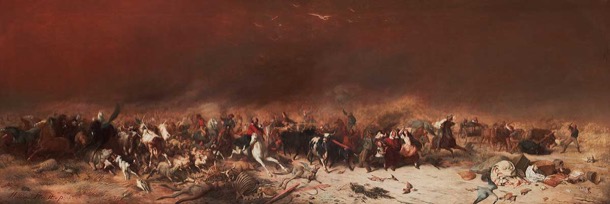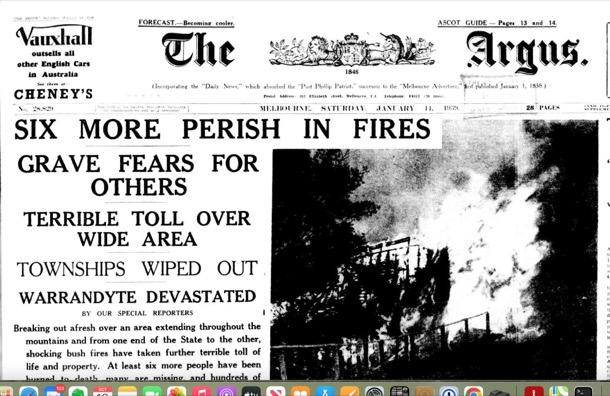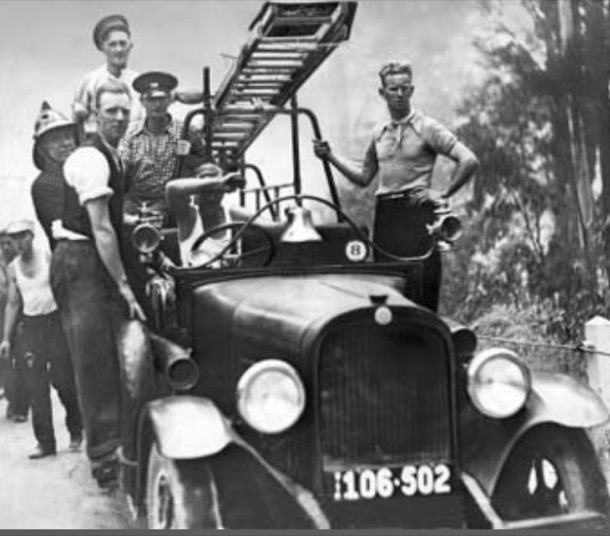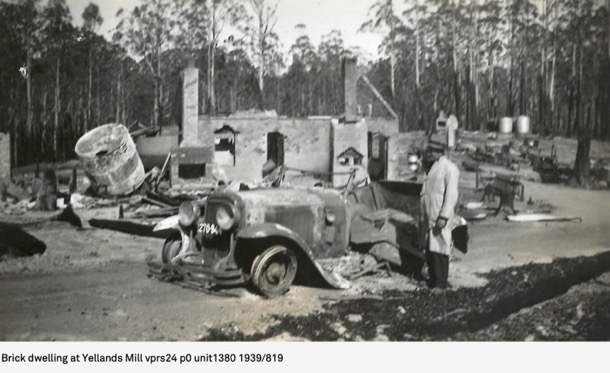Fire and Storm
MY COUNTRY By Dorothy MacKellar
‘I love a sunburnt country,
A land of sweeping plains,
Of ragged mountain ranges,
Of droughts and flooding rains.
I love her far horizons,
I love her jewel sea.
Her beauty and her terror,
The wide brown land for me.
Margaret and I learnt this iconic poem during our respective Grade 6 years and many of its lines are still etched in memory. In fact we can still recite much of it with exactly the same intonation and expression. This poem, written in 1904, captures the tenor of our post, Fire and Storm.
Fire, still very much part of our lives, has also been part of our family history.
BLACK THURSDAY 1851
The first reference to fire was in1851 with the fire known as ‘Black Thursday’.
Painting by William Strutt
This was the first catastrophic bushfire faced by white settlers in Victoria. The lead up to the fire followed what is now a familiar pattern of events. Reports at the time said that there had been wet years of lush growth followed by severe drought, leaving the bush and long grass tinder dry. Thursday the 6th of February dawned hot and windy, and the fires took off, leaving one quarter of the state black and smouldering. Our antecedents, the Bourke’s of Pakenham, were caught up in the fires in a dramatic way. Shortly before Black Thursday the Bourke’s had taken possession of Bourke’s Hotel in Pakenham. Michael Bourke remained at their selection, while Mrs Bourke was to run the hotel and Post Office.
‘On Black Thursday the whole district was ablaze. Mr Bourke was trying hard to save the station property. Water having been exhausted, milk was brought into play and ultimately the run was saved. Word was brought to him that the hotel property at Pakenham was surrounded by fire. Galloping down there, he found his wife and her children had saved themselves by crouching in the water in the bed of the creek.’
We took this photo of the exact spot, during our visit to Pakenham.
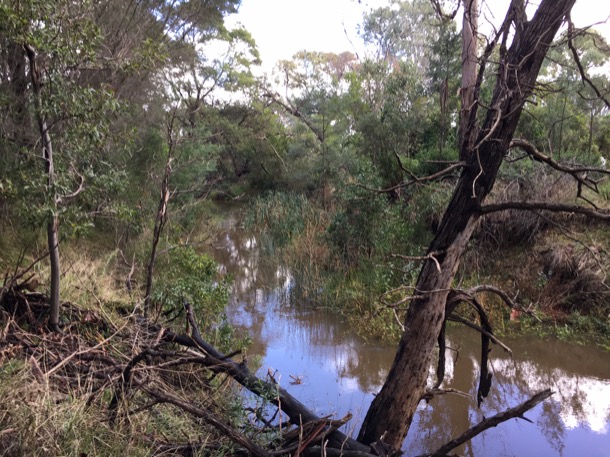
BACCHUS MARSH FIRE 1928
From an article in ‘The Argus' Thurs 12th July 1928
"FIRE AT BACCHUS MARSH.THREE SHOPS DESTROYED"
This was a report on the fire suffered by our grand parents, Alf and Alfreda, in which they lost almost everything, but escaped with their lives. We heard dramatic stories of this fire in childhood and is told below by Marge and Alice on the tape they made in 1990.
The hardware shop was their business, and they had gone out on their own, in an already a difficult time of their lives. Aunty Bert was staying with them to help out, as was her role in the family, as the unmarried sister. Auntie Bert, Alf and Alfreda would have been in their early thirties,Alice was five and Marge three years older. Thank goodness Bert was there as she seems to have had a cool head and took action to get everyone out as the fire took hold.
Marge and Alice’s recollection is fairly accurate, as the newspaper report comments on the strong North wind and the poor water pressure that hampered the fire fighting.
The Argus reports that at one stage,
…. the premises of Mr. G. H. Anderson were threatened , but this danger passed, with a change in the direction of the wind, A good portion of the stocks of Messrs. McLaren and Coates was saved, but considerable damage was done to Mr. Phillip’s stock. It is understood that all buildings and stock, except that of Mr. McLaren, were insured.
At half-past 7 o'clock, in the morning the fire was under control, and all that was left of three of the shops were the walls.’
Mr McLaren may have been uninsured but Alf was definitely not, as he had been unable to pay the insurance. They lost nearly everything.
We had wondered about Alice’s comment about Auntie Bert’s friend Nell Pearce, whose family took them all in after the fire, and yes it was a large and impressive brick house, still standing today: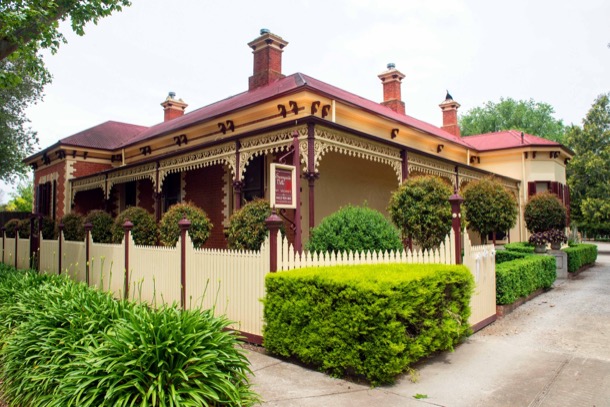
As Alice states the Pearces were an influential family in the town. They had been an early pioneering family in the area. They built and established the General Store that presumably was very profitable, supplying the miners on the way to the Goldfields as well as the local community. The family then went into farming and other small businesses, and were influential in civic affairs.
Auntie Bert maintained a lifelong friendship with Nell, and neither of them married. I remember Nell Pearce being a name mentioned in conversation and I have a vague recollection of her as an imposing figure. I also remember her at Auntie Bert’ s sewing rooms in Camberwell. She was probably there for a fitting. Little did we know the history behind that friendship.
After cleaning up and sorting our their affairs Alf and Alfreda, the girls and presumably Auntie Bert left Bacchus Marsh and stayed with Grandpa and Grandma Holm in Surrey Hills. Alf then got a job in Croydon as manager of the hardware shop, where they spent many happy years.
BLACK FRIDAY 1939
After the 1851 fires, bush fires occurred in many parts of the State with predictable monotony. The next major statewide fire was in 1939, once again after a prolonged drought. High temperatures and strong northerly winds fanned separate fires that eventually combined and created a massive fire front that swept mainly over the mountain country in the northeast of Victoria, and along the coast in the southwest.
Lilydale Brigade 1939.
Source - CFA Website
More than two million hectares were burnt in the 1939 fires.They lasted for a week. Many, unable to be controlled, were left to burn out.
Yellands Mill, where 15 men died:
The extensive damage to over two million hectares of farmland and forest, not to mention the loss of livestock and lives, prompted a Royal Commission. They were tasked with examining the causes of the fire and making recommendations for future management.
The Royal Commission’s specific recommendation was that the various Bush Brigades, and Country Fire Brigades be amalgamated to form a single organisation to fight fire on private land outside the Metropolitan Area. The Forest Commission was responsible for fire on public land and the Metropolitan Fire Brigade was responsible for fire in the Metropolitan Area. Instead of a myriad of uncoordinated small brigades these three organisations were responsible for fighting fires in Victoria.
EARLY BUSHFIRE EXPERIENCE - MARGARET
My first memory of wildfire is of a fire on the empty block next door. The vegetation was sparse: weeds and gorse, with patches of bare clay.
We think it was around 1955. Sue doesn’t remember it, and was probably at school. But I have a clear memory and so I was probably at least four. The image in my mind is of mum, armed with a hessian bag, beating flames. Hessian is a coarse, rough brown fabric made from jute, widely used for packaging. We had a supply of hessian bags, saved from buying bulk chook food. Mum was not a “bush woman” in the Henry Lawson image, but she would have seen this form of fire fighting, and she apparently felt able to take it on. 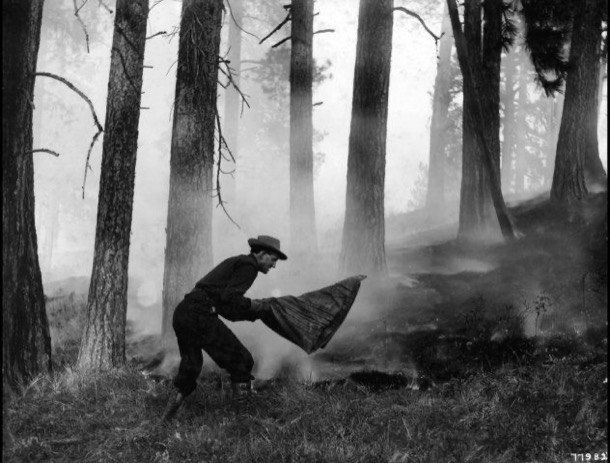
Fire fighting with a hessian bag.
I don’t remember bush fires being a big part of my life as a child, until I was eleven, in 1962. That year was a big bushfire year in Melbourne’s eastern suburbs: 32 people died and 450 houses were lost. Areas affected included Mitcham, less than ten kilometres away from our place. We were never in danger in suburban Box Hill South, but there would have been a red glow in the sky, and the vivid memory I have of burning gum leaves falling in the back yard, is probably from this fire.
In 1979, I moved to the Dandenong Ranges, where the CFA had much more of a presence, and bushfire awareness was part of everyday life over Summer.
In those first few years, there was still on old dugout just over the road in the forest. It had a wooden sign “Dugout” and what looked like a large wombat hole. A closer look revealed a heavy grey army blanket hanging over the entrance. During a fire, this would be kept wet. Inside was a rounded cave, with earthen floor, ceiling and walls. It would have held a maximum of six adults. There was a metal bucket and a pile of musty grey wooden blankets. I guess it might keep you safe while a canopy fire raced overhead, but I wouldn’t want to rely on it.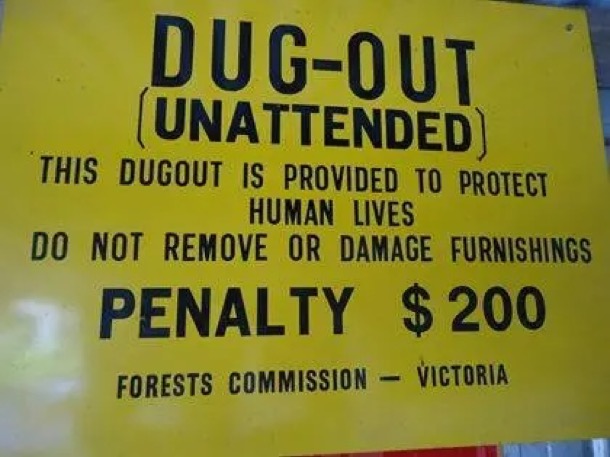
The CFA were, and still are, omnipresent. On weekends they collect donations at major intersections. On Good Friday, and in the week before Christmas, they drive through the streets, playing piped music and rattling collection tins. Their sirens regularly echo through the Hills. We can hear the Belgrave, Upwey and Kallista sirens from our place, and sometimes all three will go off. In the past, the siren was used to call in the volunteers, and on a set night of the week, on CFA practice night, they would test the siren at a set time. We like that the sirens are still used, not so much as a specific warning, but as part of our aural landscape.
Nowadays, when we hear a siren, we go straight to the Victorian Emergency app, to check what has happened. Often it’s a house fire, a car accident, a small bush fire. During the Summer months we are more attuned to the sound. Our practice has long been to evacuate on days of dangerous fire weather.
BLAIRGOWRIE FIRE 1980 - SUE
My only experience of fire first hand, was in 1980 at Janey’s house at Blairgowrie. We had all just sat down to lunch. Anna was nearly three and I was pregnant with Thomas. Everything was tinder dry, as it was January and we were in the middle of the 1979-1983 Eastern Australian Drought.
Halfway through lunch there were loud knocks at the door, and a panicking young man asked us for a hose, as he has seen a small fire beginning to build on the Spray Point Road, just fifty metres from the house. Jono and Janey raced down to investigate, but realised that they had not a chance of stopping the fire. It was spreading quickly, fanned by a strong north wind. This was a stroke of luck as this meant it was spreading away from us and towards the beach. We called the CFA who responded promptly, parking several fire trucks at the hydrant on the nature strip.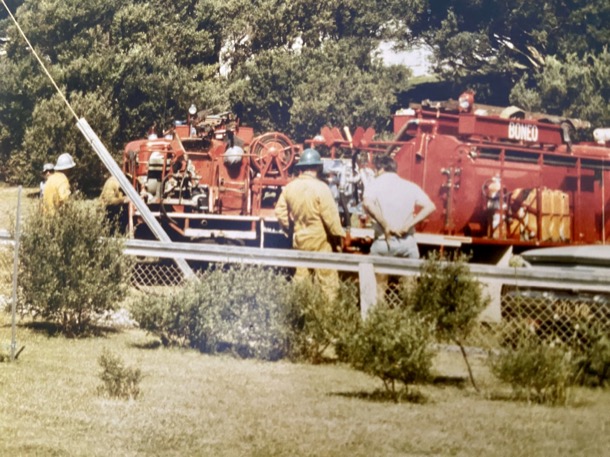
We were told to block the downpipes with oranges, fill the gutters with water, and shelter inside. The fire was brought under control fairly quickly but not before six hectares of the National Park was burnt.
It would have been a different story if the wind had changed and pushed the fire towards Janey’s house and of course all the other houses.
Local newspapers at the time reported on the fire and issued warnings and advice to residents and holiday makers for the rest of the holiday season that was only just beginning.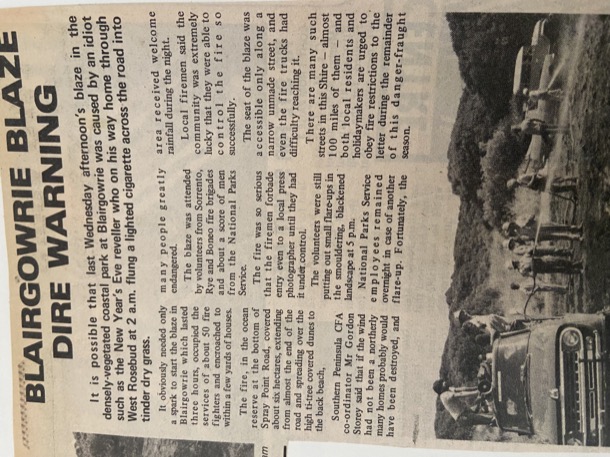
ASH WEDNESDAY
SUE
On Ash Wednesday I was at home with Thomas, as Anna had just started school. Thomas was happily playing with water in the shade of our pergola, as it was a very hot day. A nasty north wind intensified as the day wore on and many fires started across Victoria. I was listening to the ABC afternoon show hosted by Tony Delroy, who, as fires broke out, was reporting the outbreaks in real time. He also took many calls from people desperate for information. There were no centralised communications hub, warning system, or, of course, mobile phones. As the fires continued to burn during the evening and that night, the radio was the only source of state wide information. The 3LO radio hosts worked on a roster system to get the information out.
Since its inception the ABC had been responsible for emergency broadcasting, but only on the news bulletins.. In 1997 Ian Mannix was appointed as Program Director for Local Radio Victoria. He changed the nature of emergency broadcasting during the 1997 bush fire in the Dandenong Ranges. The fires burnt for days, three people died and forty homes were destroyed. Mannix asked the CFA for advice on what to say to to listeners ‘who were confronted with flames.’…Interestingly, the CFA had no experience of giving warnings and had never written a warning for people at risk.
Mannix went ahead and took the lead in creating the ABC’s approach to emergency broadcasting. He developed guidelines that included warnings at set intervals, including bush fire alerts for low level fires and urgent threat warnings for more serious fires. The system used in Victoria was expanded nationally after Black Saturday in 2009. Further recommendations were made by the Black Saturday Royal Commission that future refined and expanded the warning systems to television and commercial radio.
From this pioneering work by Ian Mannix, we now have an Australia wide warning system, and broadcasting training and guidelines in each state.
Ian Mannix oversaw the development and implementation of these systems and deservedly received the Australian Public Service Medal in 2012.
MARGARET
The first actual fire we had to deal with in Belgrave was the 1983 Ash Wednesday.
The name “Ash Wednesday” is nothing to do with ash from bushfires. It’s a historical/religious reference. It happens every year, and it marks the beginning of Lent, leading up to Easter, in lots of Christian denominations. It follows Shrove Tuesday, Mardi Gras … the last day of feasting before the deprivations of Lent. The ‘ash’ is sprinkled onto heads or swiped across foreheads as part of the Ash Wednesday service.
1982 had had a very droughty Winter, Spring and Summer. The little creek that runs through the forest over the road had almost stopped, and underfoot the leaves crackled.
The 1983 Melbourne dust storm, when 50,000 tonnes of Mallee topsoil turned the sky dark brown across the city, happened in early February. For me, it hit as I was crossing Burwood Highway on my way to the Ferntree Gully hotel, for an after school cool drink. The dust cloud was over 300 metres high and 500 kilometres long, and darkened the sky for an hour. It’s one of those iconic events where everyone can tell you where they were when it hit.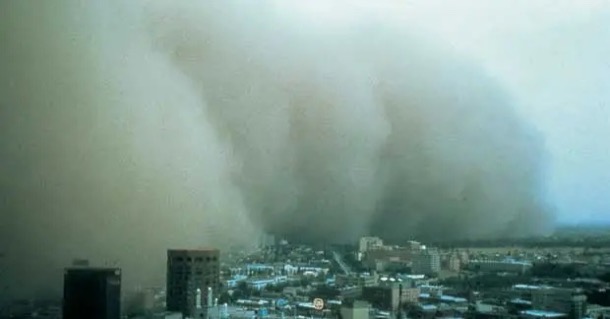
Image credit: Katsuhiro Abe/BOM
There were many fires that Summer. The CFA across Victoria attended nearly 3,200 fires. Wednesday February 16th was particularly hot and windy.
That morning I had woken feeling nauseous and weak. I rang in sick, and went back to bed. Within a few weeks, I would find out that this had been the beginning of morning sickness. Michael was born that October.
Later in the day I had a phone call from a friend who lived locally, suggesting I might consider leaving, as he had heard there was a fire in Belgrave Heights. Outside was stifling. My neighbour was packing her car but she was expecting to wait and see. I don’t remember having any sense of danger, though, later, we learnt that it was only the late afternoon wind change that stopped the fire from sweeping through Belgrave township and on to our place.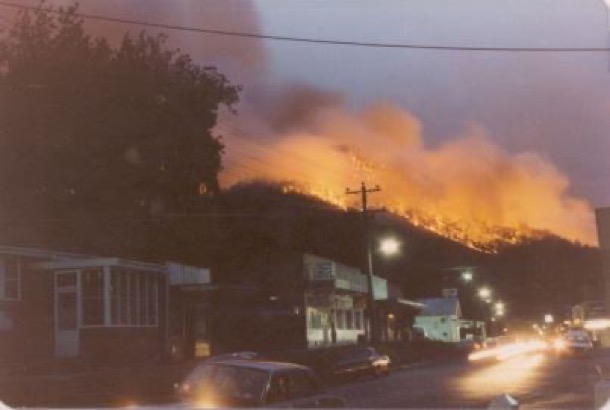
Photo: Tonia Van der Dungen. Christmas Hills CFA
Wind changes during bush fires dramatically widen the fire front, and this one swept through Belgrave South and on to Cockatoo and Upper Beaconsfield.
I don’t remember this, but apparently Ian and Lois were visiting me that day. Lois was pregnant with Sam who was born that winter. Ian speaks of driving home in the afternoon, and taking the sudden decision to drive straight on through Belgrave, rather than the more logical route through to Belgrave South. This would have been exactly the time of day when the fire swept through across the road they would have been on.
Later there were many stories, horrifying and heroic. In Cockatoo, 300 people sheltered during the night in the kindergarten, as a handful of local men kept the flames and embers at bay, saving many lives.
Across Victoria, 75 people died, more than 200,00 hectares were burnt and 2000 homes and buildings were damaged.
Friends from the suburbs rang to check that I was ok. Our little patch of the Dandenongs was untouched, but one didn’t have to drive very far to see the black horror.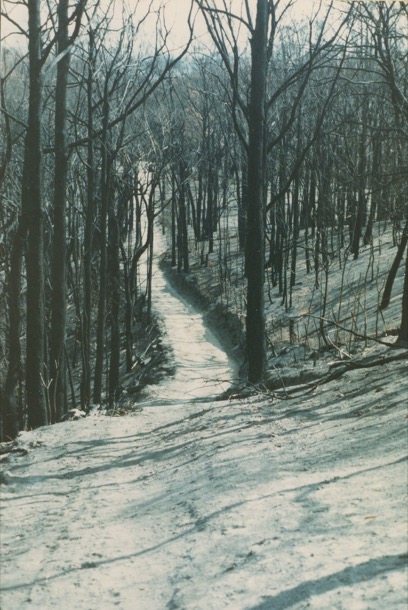
Photo: Critchley Parker Junior Reserve. Upper Beaconsfield CFA
Ten years later, I began teaching at Monbulk College, and some of our students were still affected by their experiences in 1983. My friend and colleague Sarah had her Year 8 English class make a booklet marking the ten year anniversary. Everyone had stories, which the students typed up and put together. It remains an important part of the history of Dandenong Ranges, and other affected parts of Victoria.
The tragic Ash Wednesday fires were like those of 1939 Black Friday in intensity, if not in range. They confronted the modern firefighting community with the limits of its capacity and technology. Among the 75 dead, 17 firefighters died that day, some of them next to their well equipped tankers on a forest road in Upper Beaconsfield, when the wind changed and the firestorm swept over them. Changes in firefighting strategies and philosophies were inevitable. The community needed to be better informed and more involved. This is certainly my experience. I was so naive and ignorant, compared to what we expect from Hills people nowadays! There was a huge Royal Commission.
It seemed, as the Commission heard people’s Ash Wednesday stories, that the most dangerous situations people faced were from hurried departures. People died in their cars, not their homes. But the CFA could not guarantee to be there during huge bush fires, protecting every home.
And then there were stories of people actively defending their homes from ember attacks, and saving them. “People save houses. Houses save people.” was the mantra.
The “stay or go” policy began to be developed. As the professionalisation of firefighting, and the ‘Science’ of fire behaviour developed, ordinary people’s anecdotes were often disregarded as over hyped and hysterical.
There was a huge campaign to teach the population about how to prepare their homes, and defend them. Because it was so centralised, the people who lived on the edges of grasslands and those, like us, in what nowadays we call the “flame zone”, were given the same advice. The “go” part of “stay or go” felt like an afterthought for people who were not able bodied. I remember some of our neighbours’ plans were that the men and older boys would “stay” and the women and little children would “go”.
In 1987 the very first General Achievement Test had as one of its tasks information about how to prepare a home for bushfire. It was clearly in the zeitgeist.
My personal experience of this policy is encapsulated by a CFA Fireguard group meeting, in the years leading up to 2010, that we attended on our neighbour’s verandah. The CFA man explained patiently about how bushfires behave, and how we should be preparing our houses, so that we could defend them. The expectation was clearly that we and our neighbours would stay, in the case of a bushfire, and, with mops and buckets of water, we would put out any embers that threatened out house. We pointed to the towering ash forest, metres from our house, and told him we didn’t think our house would be defendable. He was not impressed.
Throughout the Millennial drought, from 1997 to 2009, during the most severe summers, we kept a trailer full of things at Chris’s parents’ place, and had a very clear plan. We evacuated quite a number of times, staying in their spare room. The plan was to insure fully, and simply not to be there during dangerous times. The local schools built fire refuges, and the CFA kept on with its “stay and defend” message. Water saving advice was everywhere. Like many others, we set up a grey water system to water our garden.
BLACK SATURDAY - MARGARET
And then came the summer of 2008-9. It had been particularly dry and hot. This was the summer when tree fern fronds were scorched, lawns died and record high temperatures were broken day after day. The forecast for the first week of February looked horrendous in advance, with temperatures of 48 degrees forecast, and Chris and I decided to take ourselves camping by the Thurra river, and wait it out. I was glad to be retired by then!
We followed the news of Black Saturday, on the radio, and, once the cool change hit, we packed up and drove out along the Thurra Road, as news of the death toll mounted. Along the Princes Highway, we saw fire fighters’ camp sites with row after row of little tents. The air was smokey, and through the Latrobe Valley we drove through a blackened landscape. At home, the garden was scorched and everything still crackled underfoot.
Back with television coverage, we watched interviews with people who had miraculously survived, saw footage of people’s fire refuges that had been easily breached, and heard the stories of person after person, traumatised by their unsuccessful attempts to defend their homes. 173 people had died, 120 of them in the Kinglake area. More than 450 hectares had burned and 3500 buildings, 200 of them houses, had been destroyed.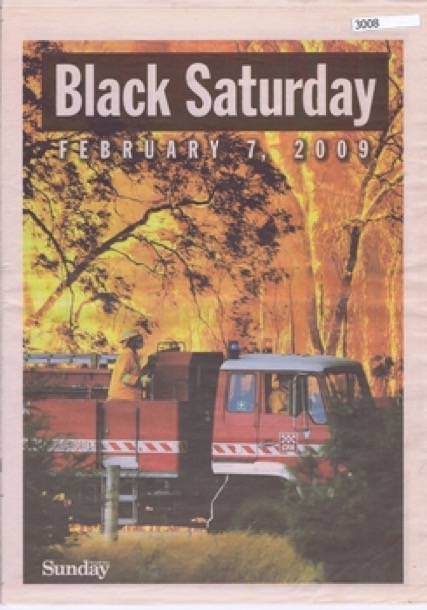
Herald-Sun
That cool change was not the end of the 2009 fire season. We evacuated a number of times that February. One day, a fire bug lit a fire just up the hill from us. I was sitting outside, and heard the crackle as flames licked up a nearby gum tree. Chris was walking in the forest. As I drove down to the Belgrave carpark, he was walking quickly back down through the forest, having seen the smoke. When he met a wall of flames, he backtracked hastily, headed toward the road, and hitched a ride with a stranger to near home. The wind was blowing the danger away from our place. I have been mocked mercilessly for my paper post it note on the door telling him I’d gone to the Belgrave car park, but at least he knew that I was out of danger.
In the car park, a gaggle of us watched the Elvis fire bombing helicopters head up the hill, and cheered, and very soon the whole drama was over.
2009 marked the end of the Millennial drought years. Summers since then have been cooler and wetter. But the legacy has been an obsession with rainfall figures, forecasts and climate outlooks.
Our local community facebook page has a member who is a forecaster with the Bureau of Meteorology, who posts every time there is a weather anomaly. It is clear from the responses to him, that we are not alone in our anxiety about rainfall.
THE BIG STORM - MARGARET
It was winter, 2021. There had been yet another Covid lockdown, this one lasting two weeks, finishing on June 10th. Life quickly went back to normal for most people in Melbourne.
But for us in the Dandenongs, the evening of June 9th, and the next morning, brought a massive windstorm which brought down huge swathes of trees, many across roads and onto 112 houses. The wind came at 120kph, but it came from an unusual direction, and our shallow rooted mountain trees were largely untested from that direction. They fell, roots and all, in their hundreds.
Even though the power went off immediately, and all the mobile towers were out, there were 9,500 calls for help logged by the SES. People were trapped in their houses, and many streets, including Michael and Katherine’s were blocked off. There was no way of communicating, in or out, for many days.
My most vivid memory of the storm comes from early on the morning of the tenth. Chris was standing with a view to the north of the forest out the window. His eyes widened, and yet another a great crash came from the forest. He had watched a two hundred foot tall mountain ash eucalypt gracefully fall sideways, taking down another tree of similar size, which in turn took out another one. Like enormous dominos, the three of them had joined the huge pile of previous victims on the forest floor. Later on we stood on the road, looking down where they had fallen and counted thirteen giant trees lying in a messy tangle.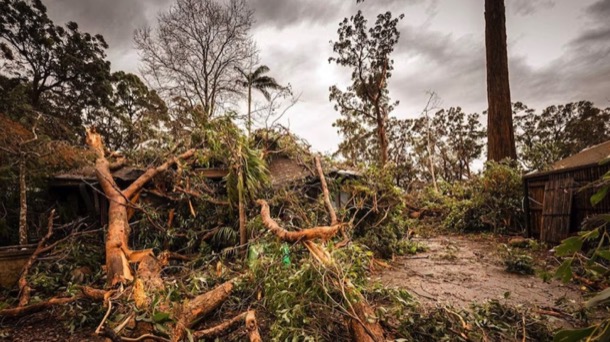
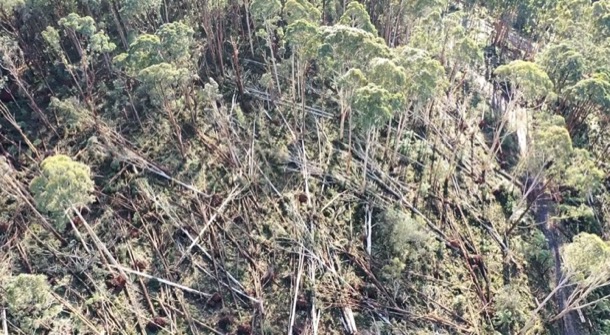
Elsewhere in the Hills, this carnage had been repeated in town after town. We lucky ones who still had homes, watched with dismay as the power company’s estimates of power restoration stretched out beyond a week. Eventually we were able to drive out. It was a weird feeling to drive down onto the flat and find life going on as normal. For us the feeling was very much as if we were still in lockdown. On the Monday evening, I went to choir rehearsal in Ferntree Gully, blinking in the unaccustomed bright lights. Many of us Hills residents had brought items to be recharged during the evening. At end of the night we drove back up into the darkened Hills.
At home, we went into camping mode. There was no hot water, but we had plenty of fire wood, and our very effective wood heater. We cooked with gas and our little portable gas fridge kept our essentials cold. I took to having my bucket bath in the afternoon, when it wasn’t quite so cold in the bathroom. It was ten days before our power came back on, on June 20th.
The reprieve from lockdown lasted only a month. By July 16, Melbourne was back into working from home, home schooling, and leaving home only for essential purposes.
Books of Our Childhood
We are three years apart, and our early childhood experiences are quite different. Despite the three year gap, when we read lists of books for little children, from those times, the same titles resonate for both of us.
As we became independent readers, home time meant being left much of the time to our own devices. The municipal library was our source of escapism, adventure and vicarious happiness.
I vividly remember what I assume was a private, lending library coming to the house with blue covered hard back books for Mum and Dad to borrow. I remember the small van parked at the front door and the gentleman, clad in a fawn dust coat, bringing in the books and inserting the borrowing card in the pocket inside the back cover of items borrowed. We cannot find any reference to travelling lending libraries but we surmise that it may have been an offshoot of a private lending library located in Canterbury Gardens. Public lending libraries were not established until the 1960s, in response to public pressure. Maybe when Mum and Dad lived with her parents they had all belonged to a private lending library located in Canterbury Gardens, not far from Boronia Street, where they lived.
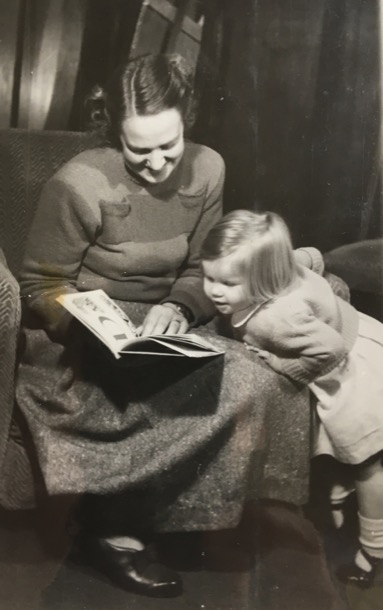
I loved having Mum read to me.
But Margaret was three years younger and her experience was completely different:
“I was just three when the next baby in line was born. He was premature and challenging, and we think our mother probably found the next few years a very difficult time.
In the years before he was born, she read to Sue, and I was there, but I don’t have much memory of it. I certainly don’t have the strong, warm connection to those books that Sue has. And when I was of an age where they would have been appropriate for me, Mum was caught up with managing the baby, and I was pretty much left to my own devices.
I remember, later on, her reading to our two younger brothers, perhaps when they were about three and five years old. But, by then I was reading for myself.”
One of my earliest memories was of the A.A. Milne books. Milne wrote the story of Winnie-the-Pooh for his son, on whom the character of Christoper Robin was based.
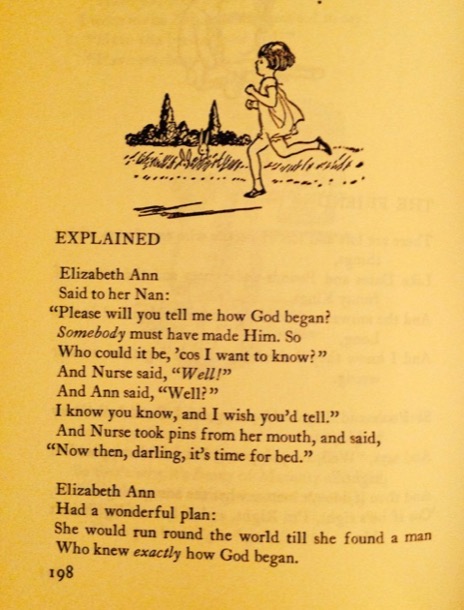
We also had a vinyl record of the poems read by a man, with a very English accent of course. We must have listened to it hundreds of times, as Margaret and I can both recite The King’s Breakfast and some others, with exactly the same rhythm and expression.
My other strong and pleasant memory is of Rusty the Sheep Dog, which is one of the Blackberry Farm series by English author Jane Pilgrim. Blackberry Farm is situated on the outskirts of an unnamed English village. The farm, a sheep and dairy property, is owned by Mr and Mrs Smiles, who have two children, Joy and Bob. Very proper, very white and very English.


From this we graduated to Noddy and Big Ears complete with culturally inappropriate “golliwogs” and apparently a questionable relationship between Noddy and Big Ears. It all went over our heads, as did the racist overtones in Little Black Sambo. Black Sambo was a little Indian boy whose mother was Black Mumbo and father Black Jumbo.
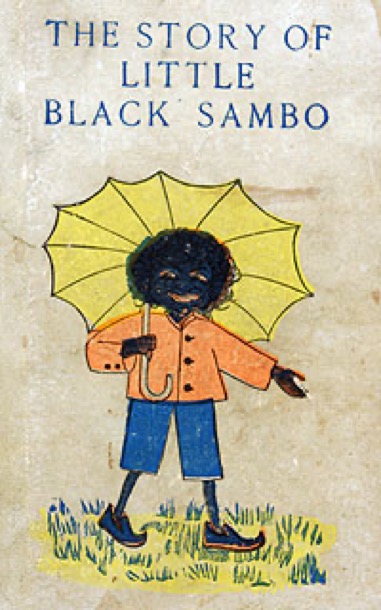
Oh dear! Once again the stereotyping passed us by. Was it maliciously racist or a product of its times? After all, the author wrote and illustrated the book in 1889., in a Britain which had an imperialist presence in India and an Empire ‘on which the sun never sets’.
Our early schooling took place alongside a fair chunk of the population…. the baby boomers were growing up. It was still “post war” enough in the mid fifties for there to be a shortage of teachers. All this was dealt with by adding more and more desks - class sizes were massive!
The range of abilities in each class was, as always, vast. The single teacher was charged with teaching the more than fifty little souls in front of her how to read. There were no remedial classes, no gifted programs and no differentiated curriculum - sink or swim, and sit down and shut up!
At the time we were in the early grades at school, the “whole word” system was mandated. This has the goal of having “the children recognise the word as having a particular shape or contour, rather than decode the word based on individual letter sounds.”
We remember flash cards - words, phrases and then sentences, which, in sing song little unison voices, we “read”, as the teacher held each card up.
“John”
John likes”
John likes to play.”
Then, eventually, we read the whole lot. John and Betty was a portrait of little siblings, stereotyped in every possible way one can stereotype!
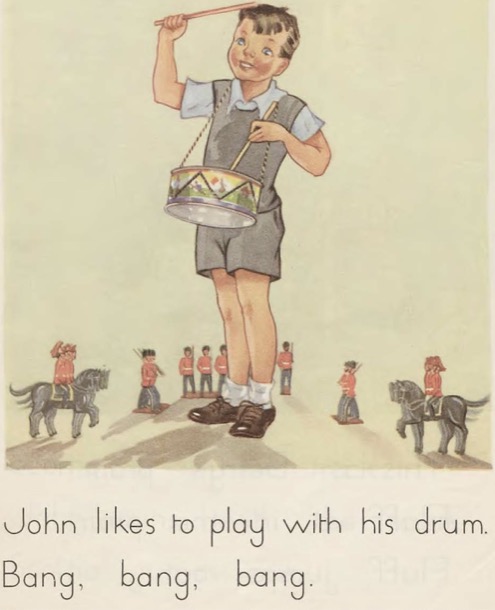
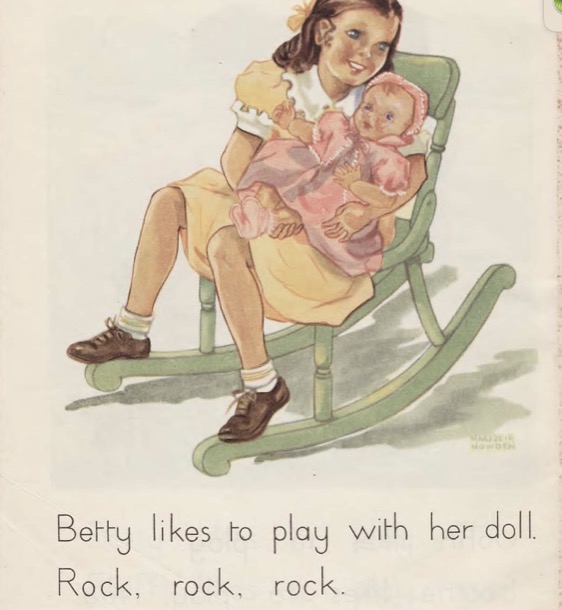
My main memory of this time is … impatience. I don’t really know when the “being able to read” magic happened. I don’t think I could read before I went to school, but the whole process seemed very slow.
It seems we didn’t have access at school to other books, and I don’t remember reading books at home until a bit later. But I wanted to.
Eventually, enough of the class was deemed to be proficient enough at reading to read other things.
The School Paper, a monthly publication of the Victorian Education Department, was first introduced into Victorian schools in the 1890s.They were compulsory reading in schools until 1928, when the Victorian readers became compulsory and the School papers supplemented them. We remember both, and in our memory, the contents was interchangeable.
The school papers were foolscap sized, printed on fairly cheap paper. At the beginning of the year we all bought a black folder, stiffened cardboard with inner strings ready to contain the twelve issues for the year. Sue says she can remember the smell of the folders.
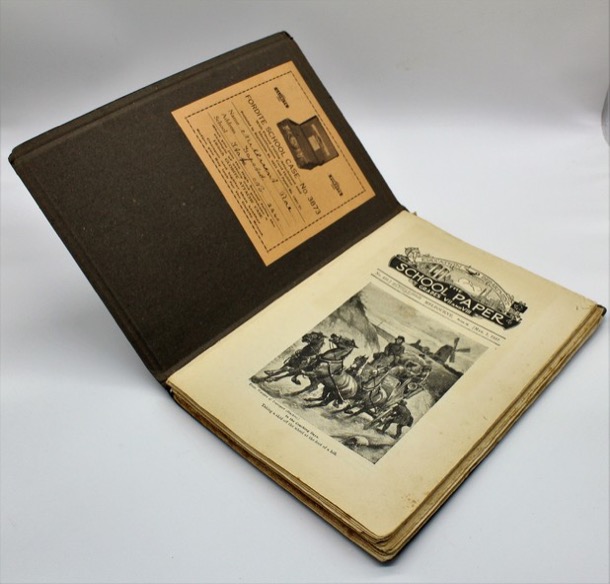
The readers are collections of stories, poems, illustrations and extracts from longer works, twenty-five percent of which had to be Australian. The rest has a very British flavour. The Australian content focused on white bushmen, pioneers, and settlers with a side serving of heroic Anzacs. The Australian landscape was sentimentalised, even while its “taming” was celebrated.
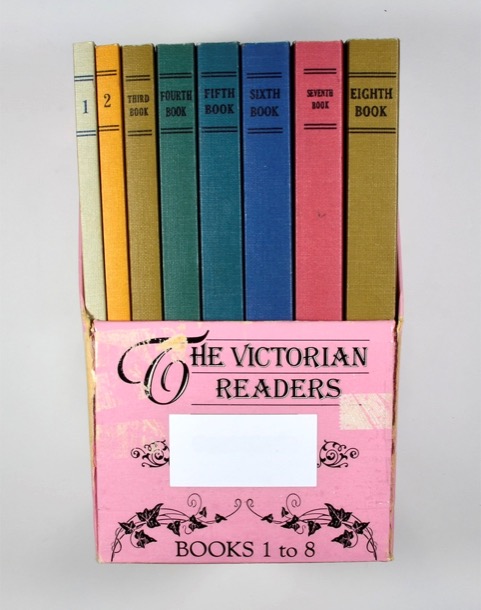
They are an insight into the values and culture that were being instilled into the population, and also into the standard expected at particular levels.
Clearly, quite a proportion of the class would have found the language incomprehensible, and the content alien.
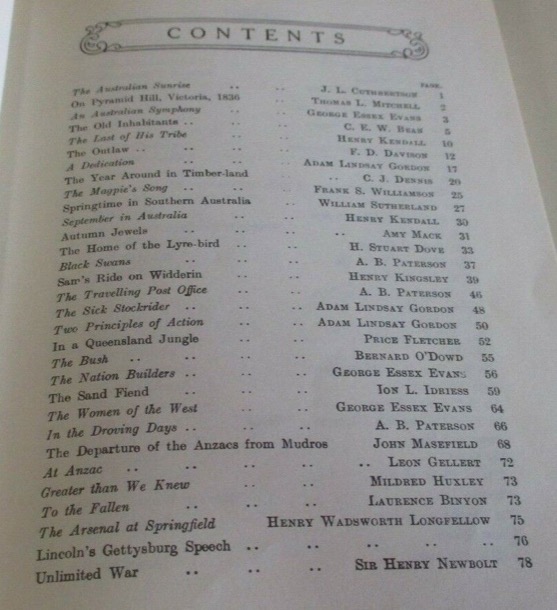
We can only remember reading the School Paper and Victorian Readers at school. And we kept them in our school desk. Did we own our own copy? Did we have use of them just for the school year?
Once we could read, we had a limited, but much loved selection of books.
Enid Blyton was a staple, once again an English author. We particularly loved the Faraway Tree and Famous Five books. The Faraway Tree was a spreading oak, big enough to have small houses in the trunk. It grew in an enchanted forest and its branches reached up into magical lands, in which many of the adventures took place. Jo, Bessie and Fanny, very English children, share their adventures with the magical residents of the tree, such as Silky and Moonface.
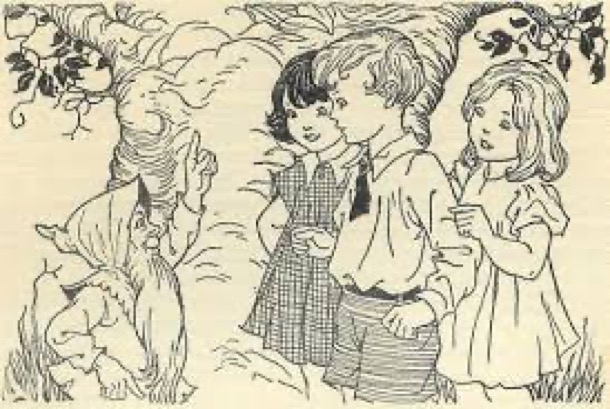
The Famous Five also featured very English children: Julian, Dick, Anne and George [short for Georgina ] and their dog Timmy. Their adventures were much more serious and dangerous, sometimes involving criminals and lost treasure. The vast majority of the stories take place in the children’s school holidays, close to George's family home, Kirrin Cottage. The settings are almost always rural and the children picnic, bike ride and swim in the English and Welsh countryside: very wholesome.
Our grandfather, Mum’s father, also revered books, many with English authors. When we were older we both remember borrowing his books such as George Elliot’s Mill on the Floss.This was a story of Tom and Maggie Tulliver, siblings who grow up at Dorlcote Mill on the River Floss. Another book from ‘the old country’ and a classic of English children’s literature was The Secret Garden by Frances Hodgson Burnett. We read Mum’s copy , a prize from school days. This story is set in a manor house on the Yorkshire moors where Mary Lennox is sent after her parents die in India. She has grown up in colonial India, surrounded by colour and life, and people who always do exactly what she wants, presumably Indian servants. This, like much of our reading matter, reeked of English privilege, class and the trappings of Empire.
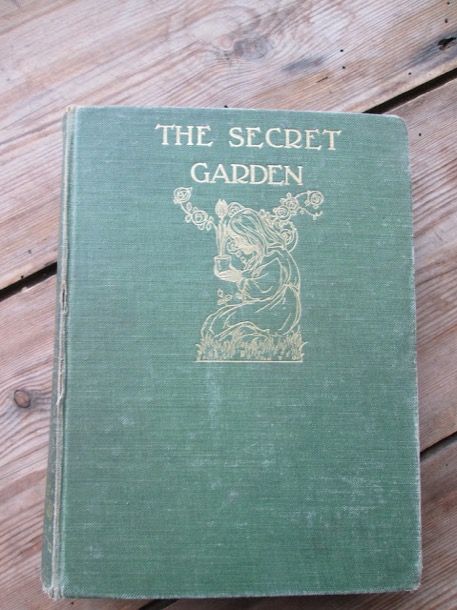
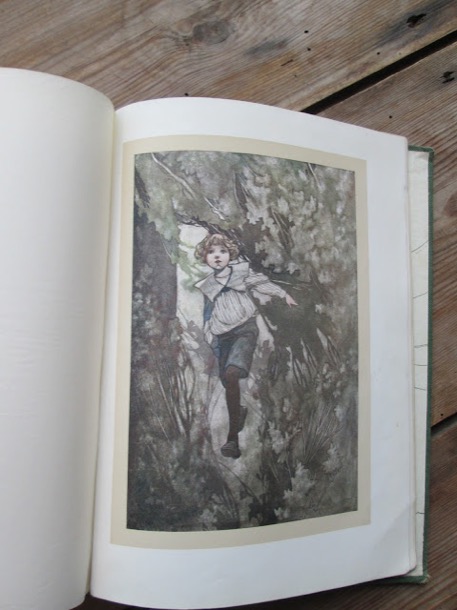
In this environment it is not surprising that Australian literature had similar characteristics. The Billabong books by Mary Grant Bruce, published in 1910, are a prime example. Very Anglo Saxon, gender specific and some would say racist, they represented to our young, innocent minds, adventure, and a glimpse into an idyllic life on a prosperous large property somewhere in Victoria. Twelve year old Norah, the ‘little bush maid’ lives at Billabong Station with her widowed father and brother Jim. Norah rides all over the property on her beloved pony Bobs, joining in the mustering and the “holiday fun” when Jim comes home from boarding school.
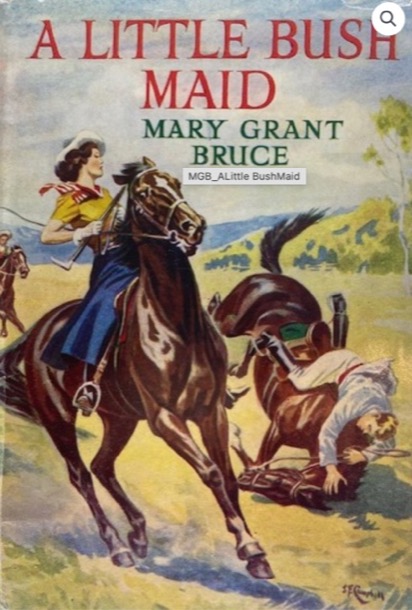
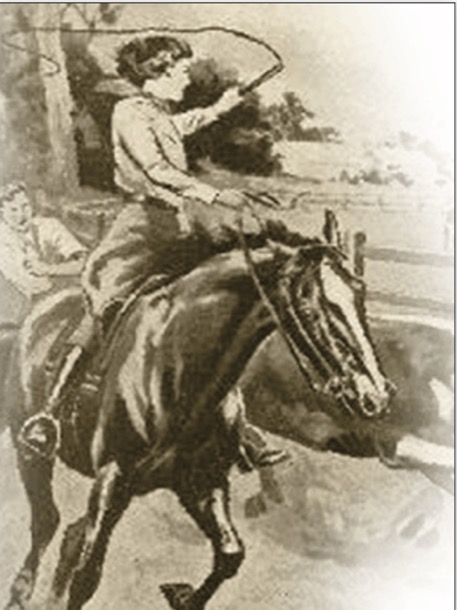
This sums up our own reaction to the Billabong books:
‘The Linton family are very much lords of their Australian manor, ruling in a benignly patronising way.The house, large enough to have ‘wings’, is staffed by a doting cook and various ‘girls’. The decorative front garden is maintained by a Scotsman, the vegetable garden and orchard at the rear are looked after by ‘Chinese Lee Wing (and oh isn’t his silly accent funny!) Numerous unnamed men work the farm itself with one of them, called Billy, seemingly assigned to be the children’s personal slave. Billy is never, ever described without with an adjective like “Sable Billy” or “Dusky Billy” or “Black”. And in case the reader hadn’t quite caught on, he is also variously described as careless, lazy or – just once – as a n——r. At 18 years of age Billy is older than the children and, according to Norah’s father, the best hand with a horse he’d ever seen, yet the children casually order him about and call him Boy. Billy, like every 18 year old bossed by a 12 year old girl, living without friends or family, and with no girlfriend in sight, seems perfectly content with his lot.
But, and sadly there always seems to be a but, my beloved Billabong books belong very much to the era in which they were written. Almost every writer I know cites Enid Blyton as one of their favourite childhood authors. She transported them in a way few other writers could. But almost every writer I know is also sorrowfully aware that once you’ve grown up there is no going back to Blyton’s magical worlds. The racism, the class barriers, the gender stereotypes are just too distressingly obvious to make Blyton an enjoyable adult read. And so it is for Billabong.’
Michelle Scott Tucker [Billabong Series, Mary Grant Bruce 2019]
As well as books, there were magazines.
We struggle to remember exactly how frequently we got the Woman’s Weekly magazine. It came out weekly, until 1982, when it became a monthly. We think our mother must have bought occasional ones from the Wattle Park Newsagent. We don’t think we had a subscription, but it is a very clear memory.
It was an important window into Australian suburban culture.
We remember the sections:
Agony aunt, where people would write in asking for relationship advice.
Household hints
Letters
Knitting and sewing patterns
Fashion and make up advice
Recipes
Health items, discussion specifically about women and children
Probably some Hollywood celebrity items, but we don’t remember having much interest in those
Royals. That was much more our cup of tea. After all, our second names are the names of the late queen and her daughter.
… and of course the ads - mostly household items, fashion and make up.
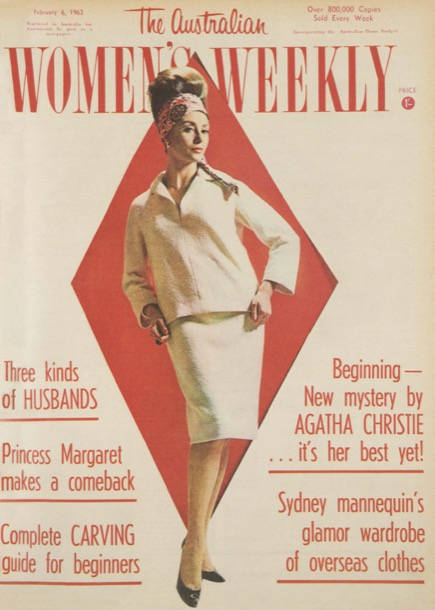
From January 1960, when I was eight and Sue was eleven, we had Princess magazine, a monthly English magazine, aimed at middle class girls. It contained stories, serials, factual articles, all with high quality photos and pictures. Ballet, horses and show jumping, fashion… the content did not have much to do with our own lives, but maybe that’s why we loved it. And there were free gifts!
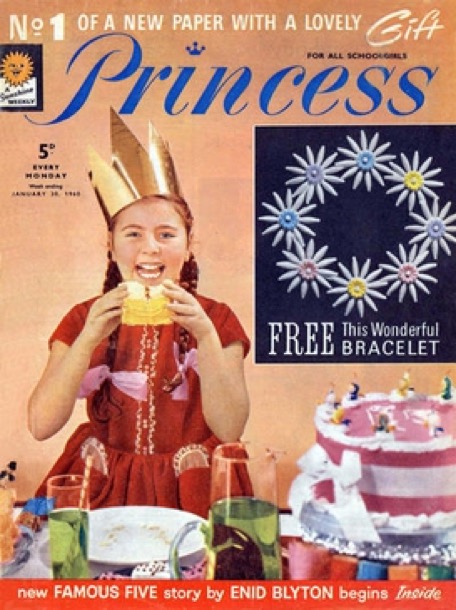
We also loved Schoolfriend magazine and Annuals.
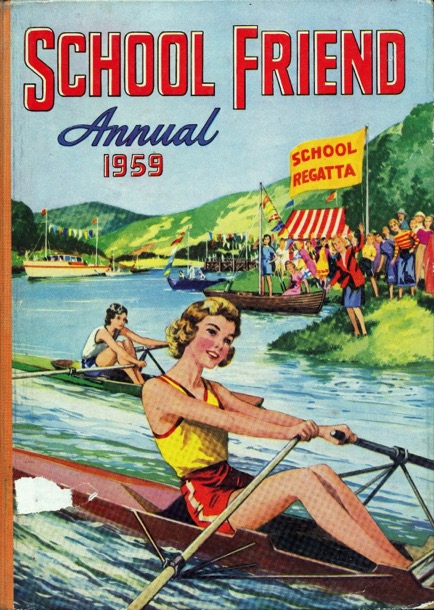
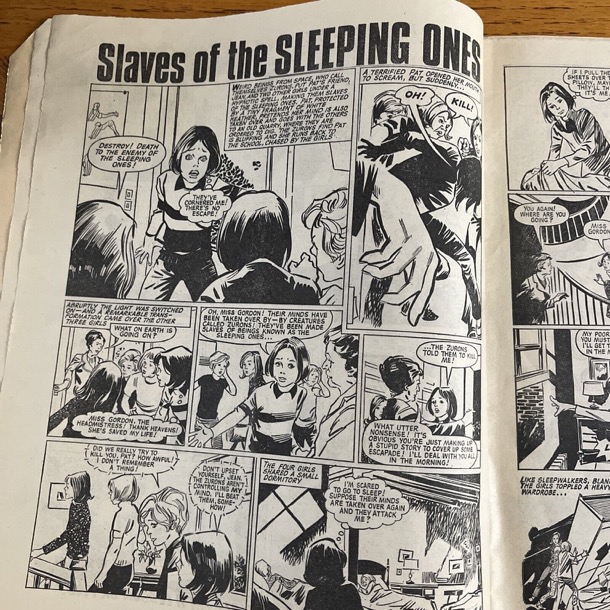
‘Schoolfriend was about the exploits of brave, public school girls at boarding school in England, based on the adventures of pupils in a girls’ boarding school called Cliff House, and featured such characters as Barbara Redfern, Mabel Lyon, Jemima Carstairs – who wore a monocle and had an Eton crop’.
Although the stories featured scenarios in which most children wouldn’t have participated in the 1950s (horse riding, ballet, skiing in the Alps) there was an interesting message being spelled out: in a school environment devoid of males, females were able to assert themselves and reach their full potential.’
from https://johndabell.com/
There were English Boarding School books, too.
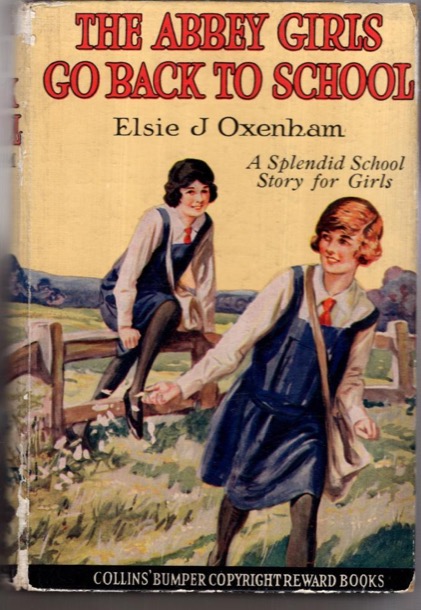
During our annual six week Christmas holiday camping holidays, reading featured heavily.
My memory is of many nights with the family sitting around in the tent, under the central tilley lamp, wrapped in blankets, reading, in silence. When we look at the timing, it probably only happened for a few years, and it would not have included our little brothers, but it feels like a well established custom.
The books lived in a sturdy wooden box, the “book box”, which, Sue remembers, had dovetailed joints. In my memory, we all dipped into it. Maybe our younger brothers were in bed, or maybe they read other, more suitable books. We don’t remember them being read to.
There were a lot of library books, but paper backs featured as well. A brainstorm yields: P D James, Agatha Christie, Ngaio Marsh and other “who dunnits”, Gerald Durrell’s family stories, AJ Cronin, John Wyndham’s Science fiction, Dr Kildare books.
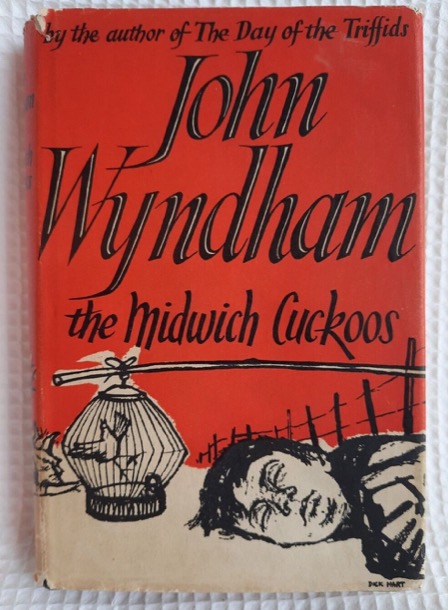
In general, it’s holiday reading, and pretty light. We remember the books being mostly our father’s choice. There were some we didn’t like, such as Westerns, with pictures on the cover of cowboys on horseback. We don’t remember any censorship, but maybe it was subtle enough for us not to have noticed.
Camping holidays are the only time either of us can remember reading Mum and Dad’s books. We can’t ever remember not having access to books though. As a family we didn’t own many books, we all used the library.
Visits to the Box Hill Junior Library were a regular feature in our childhood. The library was behind the Town Hall and was a very simple weatherboard structure, but inside it seemed there was a never ending supply of books. I never remember not being able to find a book I liked. Library visits must have been fortnightly as that was the borrowing period, so it is no wonder that I can still visualise the interior exactly.
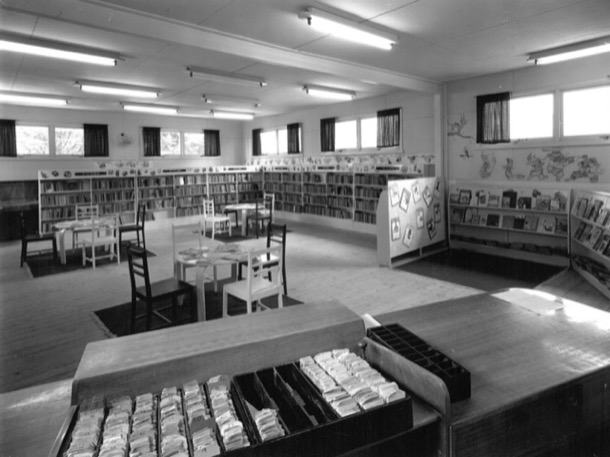
The Billabong books were on the right just past the picture books, top and second shelf down. Once in the door, we would always make a beeline for that shelf to see if the next Billabong book was there. This was particularly important to me as I wanted to read them in order. Margaret does not remember this being a feature of her library visits.
We began this exploration of books in our early life full of the warm memories of specific titles. We already knew that, in our childhood, books were our escape, our entertainment and our cultural education. We buried ourselves in books, and we both remember many hours reading on our beds transported to other worlds.
Over the time we have been talking and writing about this topic, we have realised that the genre that most captured our imagination, and has remained as treasured memories, was actually quite narrow. It was characterised by adventure, characters who were resourceful and brave, often female, and idyllic settings. The action often happened in school holidays, sometimes on islands and beaches or Australian cattle and sheep stations.
We are also struck by the narrowness of the cultural values. We think of our family’s values as progressive, liberal and inclusive. We witnessed no open discrimination in our white suburban neighbourhood. And now, we are surprised at the extent of the sexism, class prejudice and racism in beloved books. It all went completely unnoticed at the time, but our adult, twenty-first century eyes look aghast at the world we immersed ourselves in.
Pins and Needles
SUE
Although I have grown up with sewing and sewers in my life, it has never captured my interest, until recently. I have horrible memories of sewing classes in Year Seven. We were supplied with rectangular brown, cardboard sewing boxes, which held all our supplies and the current sewing task. All went relatively smoothly during the first half of the year as we learnt to use the machines and made our cookery apron and cap for Home Economics classes in Year Eight. Then we graduated to making a white, lawn, lace trimmed slip with french seams.
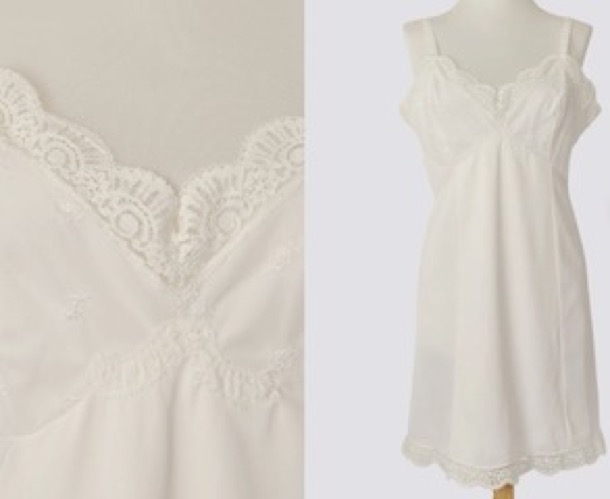
I must have made several mistakes and had to unpick the french seams around the bust several times and my work became very grubby and worn. I looked with envy at the neat and pristine garments of some of my classmates. Starting again was not an option so I decided to smuggle it out and fix it at home. This was strictly forbidden! In the general busyness in the storeroom as the girls put their sewing boxes on the shelves, I hid the offending item under my blazer. Even at home it was very difficult to resew neatly, because of all the needle holes and general grubbiness. At least I could move on with the easier straight seams and the hem. Thank goodness I was not caught smuggling the sewing back into my sewing box. I finished the garment but never wore it. I am sure I would only have received a D, which I would not have liked.
My next foray into sewing was in the first year of my Art and Craft course. The first year was “dressmaking”. I did not enjoy it much, but it was not horrific, as the petticoat had been. I certainly did not want to teach sewing, and I was never asked to, thank goodness.
Surprisingly, I have recently started sewing again. I, like many others, started sewing in lockdown during the Covid pandemic. I am part of a widespread sewing resurgence, facilitated by the technological advances that give me access to fabrics and patterns all over the world and in Melbourne too.
Choosing the fabric and pattern are the aspects of dressmaking that have changed the most. For instance, I recently bought a winter coat pattern and fabric. Once, I would have gone to a local shop and leafed through thick, well thumbed and worn.pattern books by Butterwick, McCalls and Vogue.
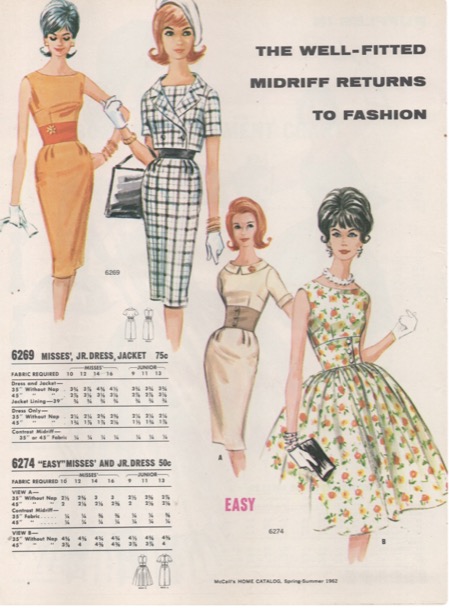
Instead, I chose my vintage coat pattern online, from a business in Germany. It was converted to a PDF format and delivery was almost instantaneous. Then the fun began as the pattern had to be printed. Two options were available for printing. The pattern could be printed on a home printer in A4, with the disadvantage of the pages needing to be joined with sticky tape. The alternative was to go to Officeworks and have the printing done for me, as one large sheet.
I have also discovered the joys of shopping worldwide for fabric. One of my favourites is a haberdasher in Hull in the UK, whose ethos is the creation of long lasting, wearable clothes from their patterns and their sustainably and ethically sourced fabrics. Merchant and Mills is part of a worldwide niche market, that is a reaction to the fast fashion industry, where very cheap, mass produced garments are expected to be thrown away after only a few wears.
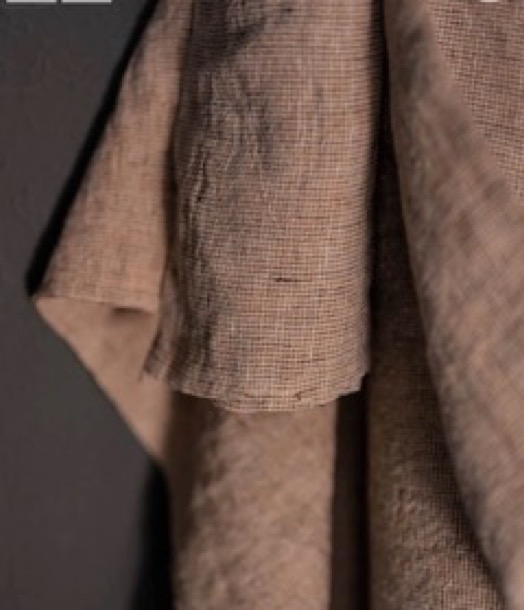
‘This European laundered linen, tumbled at the mill for softness, is a dusty peach and dark brown. It is produced in small batches in Eastern Europe where there is a strong heritage of spinning and weaving linen fabric’
MARGARET
One of the joys of retirement is having time for the little ones. For me, this included making special things for them, mostly sewing and knitting, and always geared to their particular interests and preferences.
Sometimes the occasion was birthdays and Christmases, but sometimes special requests came my way.
The first of these was a Christmas: matching pink fairy dresses for the three little girls. Here is Harper in hers:
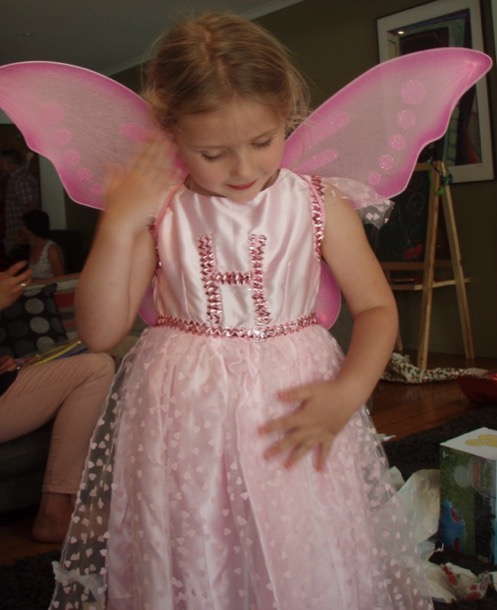
Later on, Harper’s colour preferences changed. For more than a year, she was all about cyan. You and I might have called this colour aqua or turquoise.
This was the colour specified for her special request for a jumper with a bunny on it for her, and one with a girl on it for her bunny.
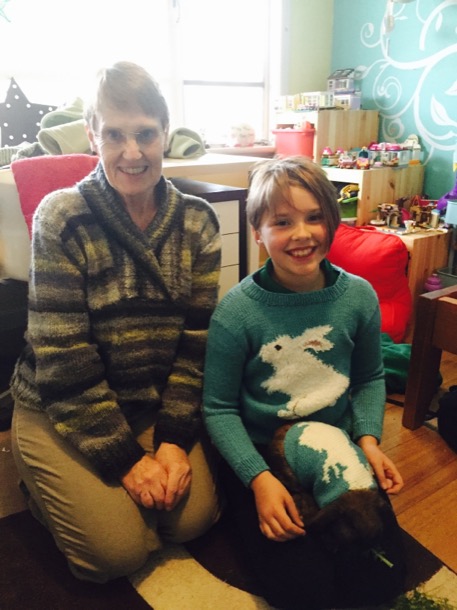
Aurelia was exactly the generation to be all about Disney’s Frozen. Her first frozen dress was a bought one, and she wore it out, before she tired of it. Thus it was, that my first Frozen job was to rehabilitate it:
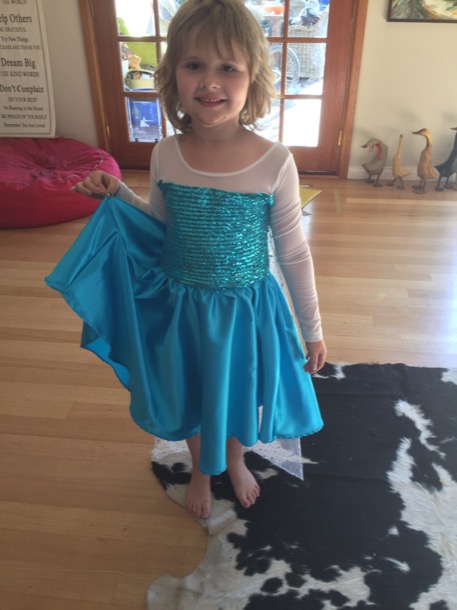
Then, when Frozen 2 came out, with that green dress, Aurelia and I trooped off to Spotlight to choose fabrics for her new one.
Here, she models the front and back of the final product:
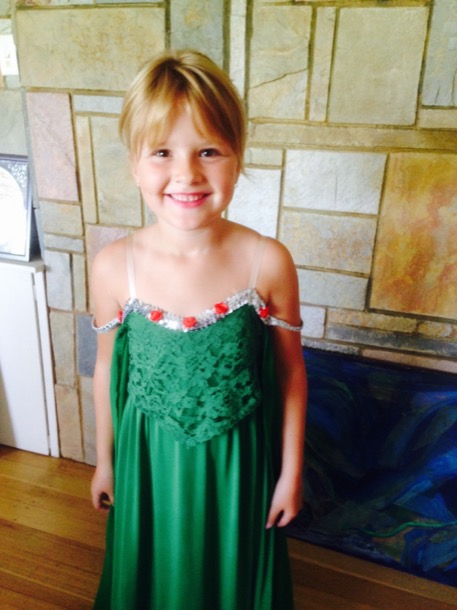
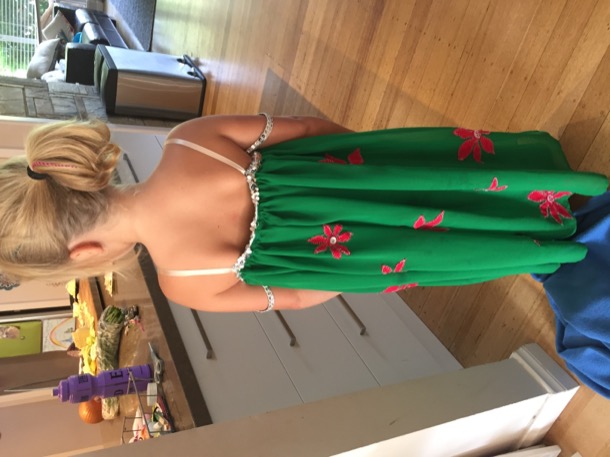
When my own grandchild came along, son of an artist, my initial contribution was a lacy baby blanket, not baby blue, but dark grey.
His first winter coat was also designed by Katherine, and made by me:
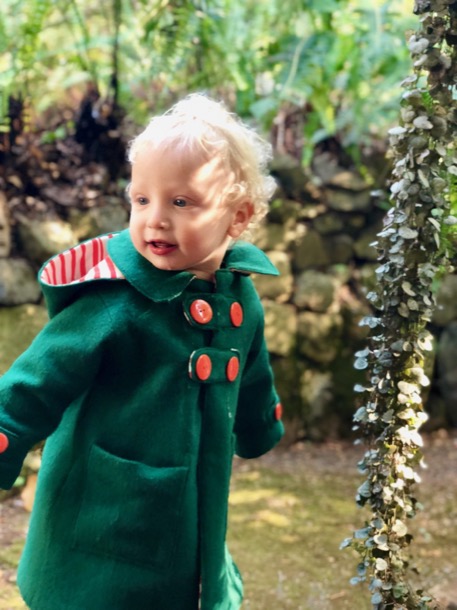
After a while I began knitting him jumpers to match his preferences.
The first one was Percy, his favourite Thomas the Tank Engine character:
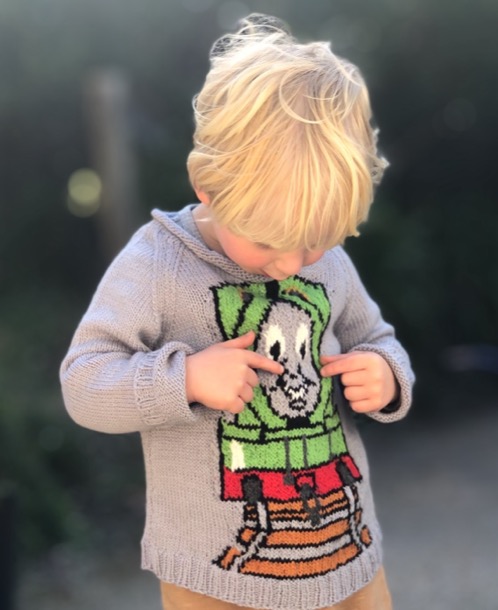
Then Bluey:
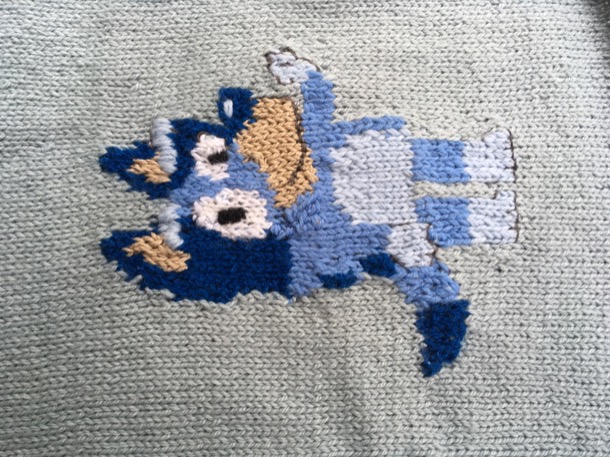
Optimus Prime:

And, the most recent, a Minecraft T shirt, with, by request, a Sniffer:

THE ACCIDENTAL CRAFTIVIST.
In 2013, Chris and I became involved with the community protest against the building of a McDonald’s in Tecoma.
Over time, this evolved into groups of protestors spending many hours standing holding signs on the main road, and maintaining a vigil at the back of the building site.
My favoured place was sitting at the back gate, with a camp chair. Of course I took my knitting.
Here is a typical scene from “the site” at that time. The police were frequent visitors. For a long time, there was stalemate. We were backed by the union movement, and no building contractor could be found.
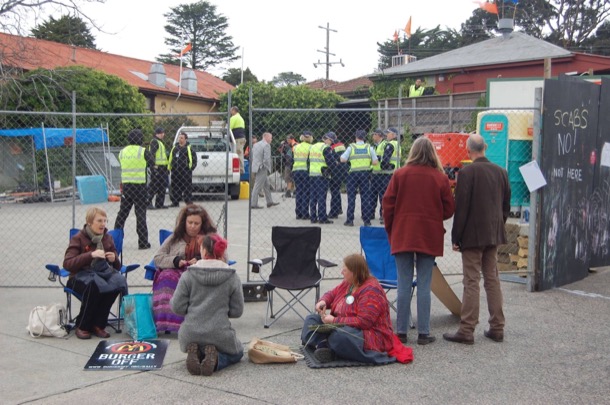
As the building progressed, we were no longer able to meet at the back gate. Every morning my friend Jan put up a little shelter we called “headquarters”. Every truck had to run the gauntlet of polite older women explaining why they should not enter the site.
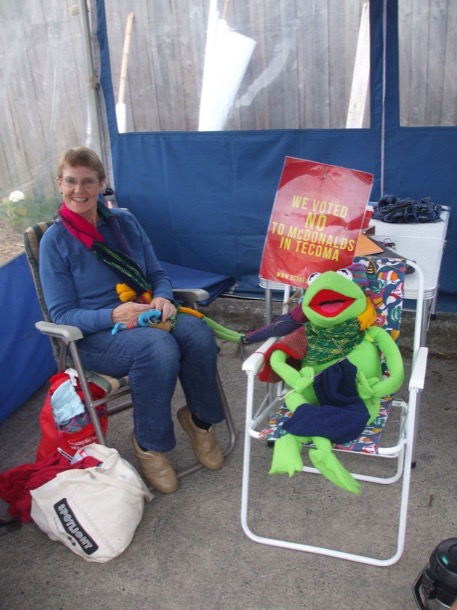
The Banner.
After a while, as we all finished off our various projects, we began knitting squares with all our scrap wool.
We became a group of close friends, and called ourselves The Picket Knitters.
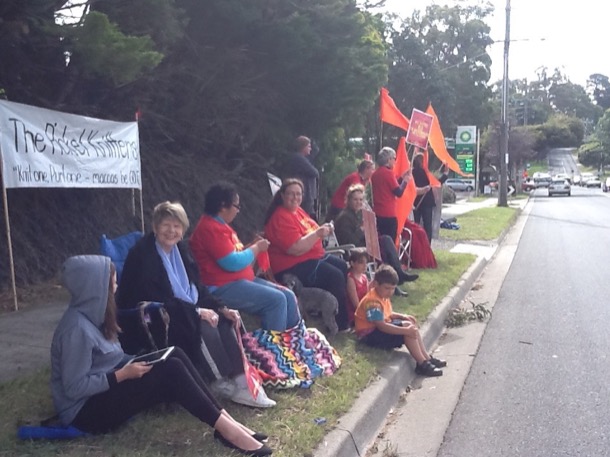
As our movement became more and more well known, we had people from all over the place sending squares. We embroidered the place of origin on some of them. This one came from Cairns.
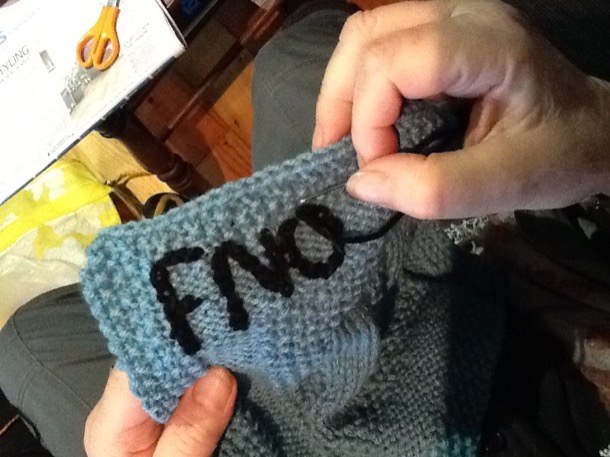
Eventually we put all the squares together, and made it into a banner.
By the time we had the official launch of the banner, the building was under way. Here, the knitters crouch behind the road barrier, with crossed needles. Sue and I are both there.
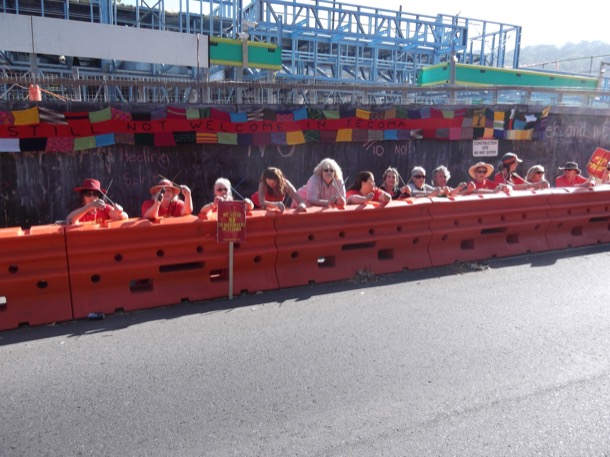
The local papers loved us.
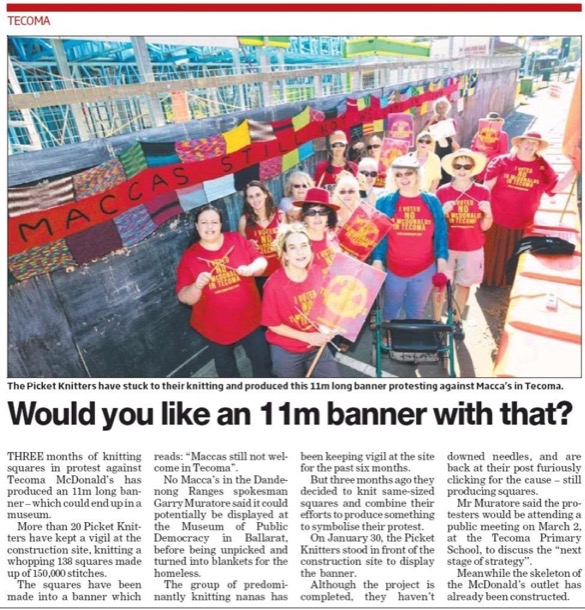
Eventually, we presented the banner to our fellow craftivists, the Knitting Nanas of Toolangi. We reconfigured the squares and it became part of their Great Tree Project.
Here it is decorating the base of one of the precious Mountain Ash trees.

Gnomageddon
“Gnome Maccas”, derived from our “No Maccas in Tecoma” slogan, spawned a range of Gnome related activities. The biggest of these was our Gnomageddon, where the community gathered to break the Guinness Book of Records record of the most people dressed as gnomes.
I made all our knitters a red gnome hat.
Here are a few Picket Knitters in their gnome outfits.
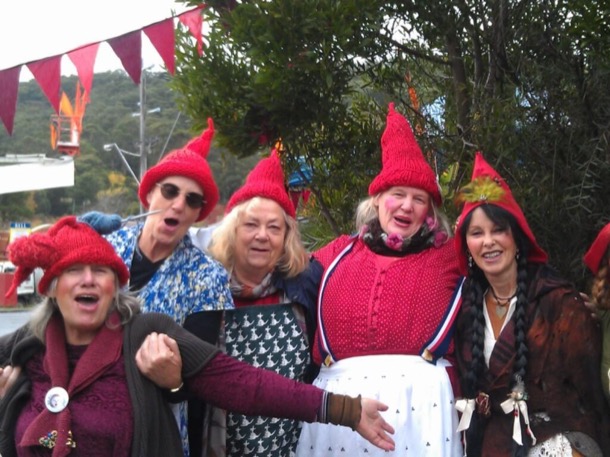
And even a gnome rat.
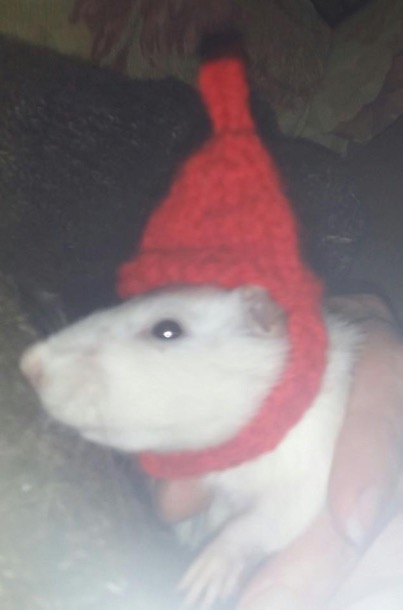
Once the McDonald’s in Tecoma opened, albeit usually deserted and initially the lowest grossing McDonald’s in the country, we continued to meet at each others houses.
In 2016, we all created tea cosies and entered them in the Fish Creek Tea Cosy Festival.
Here is my offering:
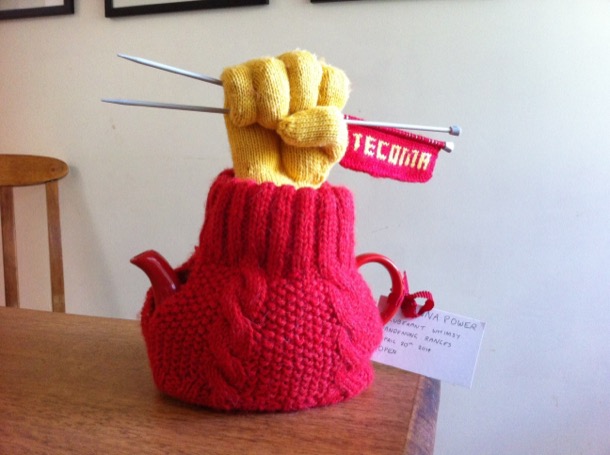
The local paper chased us up to find out what The Picket Knitters were doing now.
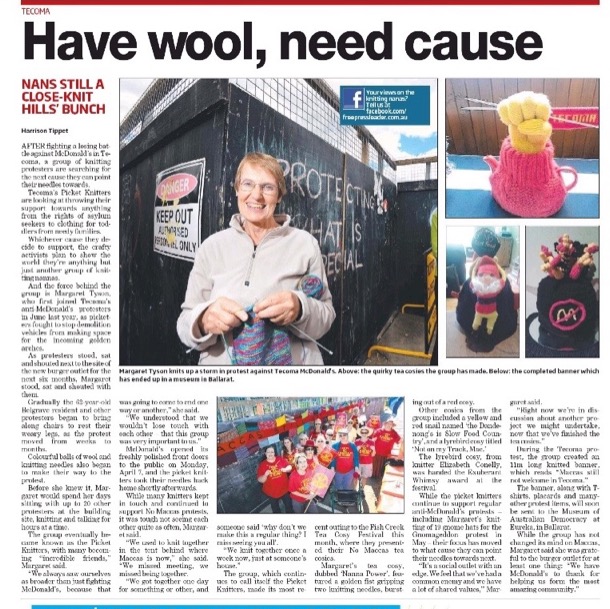
This article prompted a phone call from a Melbourne Radio Station shock jock. Based on the tone of the article, he was very excited by the idea he could paint us as serial protesters for hire. I very much enjoyed my live interview with him, where his aim was completely transparent. When he pressed me for possible “causes” we might move on to, clearly hoping for left wing politics he could ridicule, I listed a range of completely apolitical charities, and played my role of “just an ordinary person” who “of course didn’t want a McDonald’s so near the forest”.
We no longer knit together, but we do meet every fortnight for a lavish lunch and a long chat about how to put the world to rights.
ALICE
This is Sue and Margaret in about 1955.
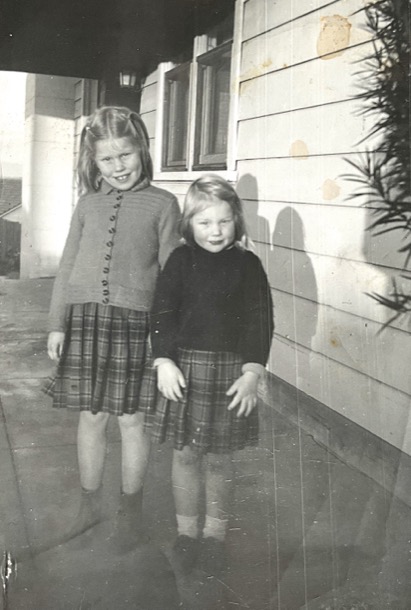
Two small girls, sisters, on a cold winter day in suburban Box Hill in the nineteen fifties.
What does it tell us of life then and the different world we lived in?
From the bottom up, starting with our shoes: We both are wearing lace up shoes, Margaret’s may have been hand me downs. She had a lot of these, as clothes were an expensive item to buy. Mine were my school shoes and these shoes were our one pair: worn to school or kinder, to play, to visit and to church on Sunday. On wet days we wore galoshes over them. These were rubberised over shoes, that fitted over the shoes, saving both feet and shoes from a soaking.
The life of our expensive shoes were prolonged by being reheeled by our father using his shoe last.
He also put little u shaped metal clips on the outer edge of the heel and toes to prevent wear on those vulnerable areas. Amazingly, looking for photos of ‘vintage ‘heel and toe clips I came across a host of You Tube videos of how to fix them to your shoes It is still a thing on leather soled shoes. The two worlds meet.
Our cotton socks were much the same as today. We only had a few pairs. Above these ankle socks were bare legs, in the depth of winter. We both remember cold legs on winter mornings: little girl plump legs with that blueish pink tinge.
At least we had woollen skirts that kept us warm. Once again only one, and home made by our mother. They were always tartan, pleated and then sewn to a cotton calico bodice.
The cotton bodice was at times a little grubby, but was usually hidden under our hand knitted woollen jumper or cardigan. Under this was a singlet possibly woollen. Margaret remembers shocking our mother. School Open Day was quite a big deal with many, mainly mothers in attendance. Mum walked into class confronted by an oblivious Margaret without her jumper on, as it was hot. She was sporting her tartan skirt, complete with a grubby bodice held up at the shoulder with a large safety pin. What a sight!
We think we wore these garments for almost everything we did during winter, from roller skating to going to school. We vaguely remember having twin sets to wear for best with the pleated skirt and a winter coat and raincoat, all worn with.our school, lace up shoes.
And then there was summer sewing.
It’s the week before Christmas. School has broken up, and four children, a dog and a cat clutter up the house. It’s hot, and there is no air conditioning. Not even a fan.
Christmas presents are partly organised but still require a few trips to Chadstone Shopping Centre.
In the garage, Dad is tuning the car, ready for its two hour trip to Shoreham camp. The tent and most of the camp furniture has already been set up, but a trailer full of odds and ends is still to be packed.
The plan is to leave early on Boxing Day.
In the centre of the house, between the kitchen and dining room, is a scene of colourful mayhem.
The sewing machine runs all day and into the night.
Cotton fabrics have been bought, perhaps at a discount fabric shop. They are spread out across the floor, with well used pattern pieces pinned to them. Mum crawls across the fabric cutting out multiple pieces. She makes enough shorts and tops for us each to have a set to wear and a set in the wash. There are hand-me-downs involved for me, the second child.
We find it hard to remember the details of her sewing. How were the seams finished? Were the necklines bound or faced? The hems were all hand sewn: we can both remember hems coming undone.
She didn’t cut the thread ends as she went, there were always multiple loose threads to trim off at the end.
In this photo, taken about 1958, little Sue and Margaret stand in the centre, in that year’s shorts and striped tops.
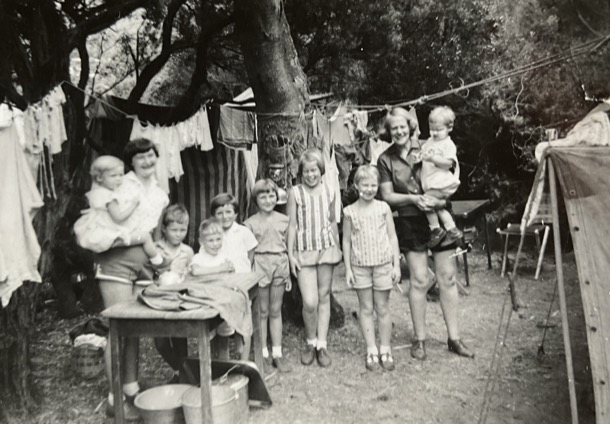
AUNTIE BERT
Our Great Auntie Bert was an important person in our lives and those of our extended family. We have fond memories of her kindness, but it was only as we researched the position of sewing in our family history, that we fully appreciated her dressmaking legacy. We knew that she had had a career as a dressmaker, and had run her own business. She passed on her dressmaking and fitting skills to Margaret and me, and to our mother and Auntie Marge, but we had not appreciated the thoughtfulness and kindness that was an intrinsic part of each garment.
My crushed strawberry viyella dress and Margaret’s mustard yellow check one epitomise this:
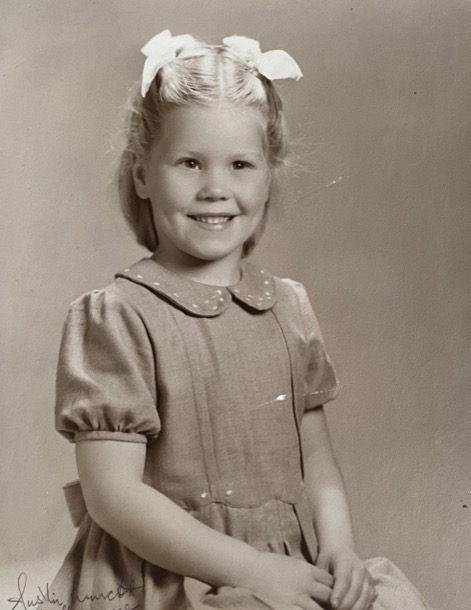
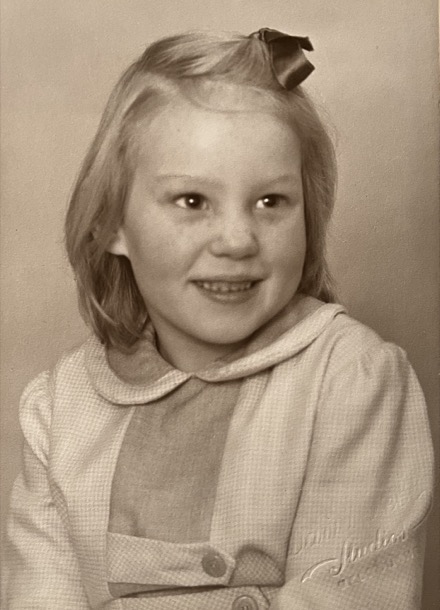
Now that I am sewing more, I can begin to appreciate the level of skill and detailing involved in the creation of these winter dresses. Margaret’s dress is made in a mustard check with a plain contrast panel and collar insert, all beautifully sewn and constructed. My dress, in one colour has detailed pleating on the bodice and skirt and a scalloped edge stitched waist that would have been fiendishly difficult to sew. Hopefully Auntie Bert would have enjoyed creating these “best” dresses, in which her love and care for her family are so evident.
Auntie Bert was also called upon to make many “best” dresses for the adult women of the family, some of them wedding outfits.
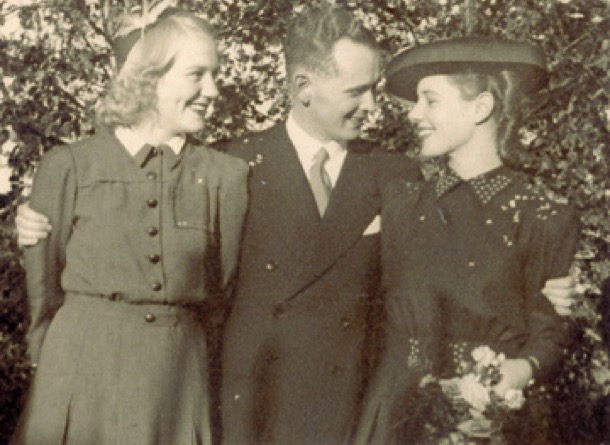
In my late teens when Auntie Bert was living in the flat behind our house, she made me a beautiful tweed winter overcoat , fully lined. I wish I still had it. During the process she taught me some of her tailoring techniques, for instance how to attach hair canvas to the collar , stitching it to ensure an even roll over.
During the last years of her life Auntie Bert lived with her sister’s family at the Cockatoo farm, as we explained in our post ‘Auntie Bert: A Sterling Character.’. During this time she was mostly clad in clothes she had made. In winter, she wore straight woollen skirts and layers of woollen jumpers and cardigans. In summer she wore a dress and cardigan, more often than not, covered by an apron. We never saw her in a beanie, which her sister wore constantly, even inside.
Sewing in many guises has been a feature of the lives of women in our family for generations. Probably there are more stories even further back that we are unaware of. In this short story we have gone from treadle machines, paper patterns and sewing for necessity, to sewing for pleasure and sewing as a form of protest.
The Built Environment - Box Hill
We grew up in Box Hill South in close proximity to Surrey Hills where our family has had an association for five generations. 28 Moore Street was our family home.We all spent our childhood and early adult years there, before moving out on our own. The family ventured out into Box Hill in 1946 when our parents bought a block of land in a new subdivision. They paid one hundred pounds plus ten pounds in taxes. Jim and Alice also looked further out in Donvale, where, for a fraction of the cost, they could have purchased two acres of bush. Unfortunately this was not an option as there was no public transport and we did not own a car.
After the war, Box Hill South was opened up for new housing. The City of Box Hill revised its land valuation system and residential subdivision started to boom across the municipality. The small holdings of mixed farming and orchards, were quickly replaced by the unmade road network of the subdivisions. Electricity and gas were provided, but no sewerage until the 1950’s, so it was outside toilets for all.
Our parents could not afford to have the house built, so Jim decided to build it himself. He bought a book on basic carpentry and the tools, all hand tools of course, and proceeded to build. The house is still there today, straight as a die.
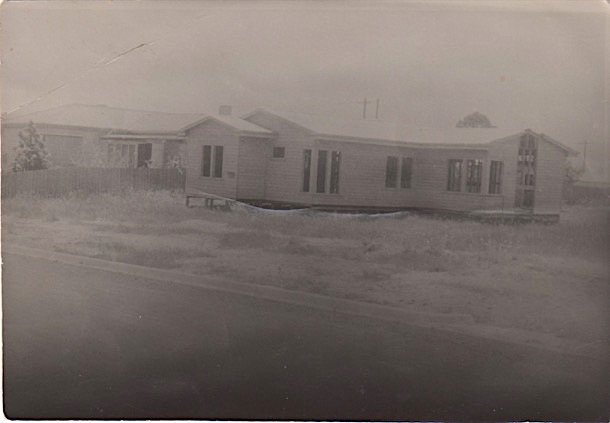
It was a very liveable and rather nice design, set on stumps, weatherboard cladding and with a low slung, pitched roof. It had the standard three bedrooms ,one bathroom, kitchen, dining room, lounge room and laundry. When first built there was an outside toilet attached to the single garage that also had a chook pen attached to it.
Over time, the surrounding paddocks filled with houses and our house changed a little too. The view of the Dandenongs from the french doors in the lounge room disappeared, the toilet moved inside and our grandparents built a flat on the back. The addition of the rumpus room and flat spoilt the spaciousness of the living rooms and the back garden. The old weatherboard garage, toilet and chook pen were removed and a new double garage and new chook pen took the new additions to the back fence.
Little appears to have changed externally to the house since Mum sold it about 1981.
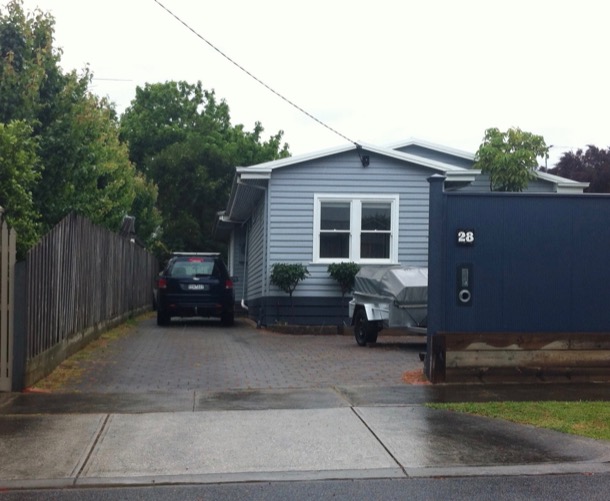
When we were children, Wattle Park itself consisted of large trees with mown grass underneath, like a traditional park, but with native trees and grasses. It was owned and maintained by the Tramways Board, responsible for the tram system in Melbourne. The Tramways brass band played in a rotunda every Sunday in the park. Nowadays those grasses are no longer mown. It looks much more like remnant bushland.
The 137 acres opened as a public park in 1917.
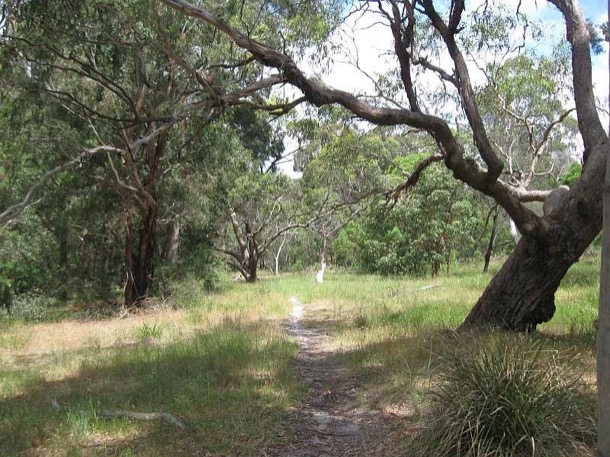
The chalet, designed and built by a Tramways architect, opened in 1928. it was promoted as a dance hall and wedding reception venue and, amazingly, it still is. It is listed on both the Heritage Victoria and National Trust Registers.
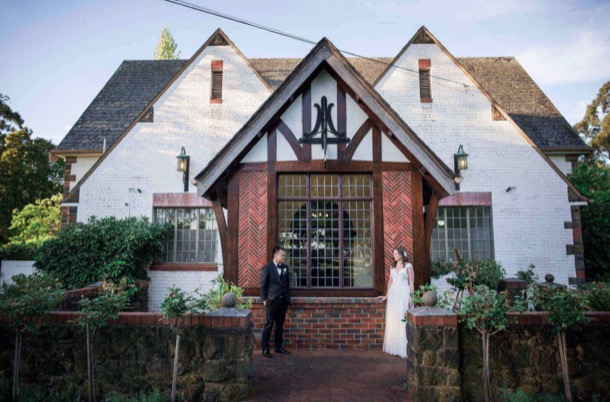
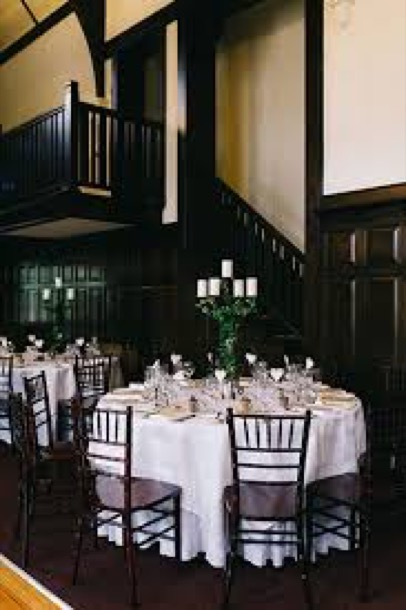
Our own parents’ wedding reception was held there in 1945, after they had been married at the Wyclif Surrey Hills Congregationalist Church in Surrey Hills.
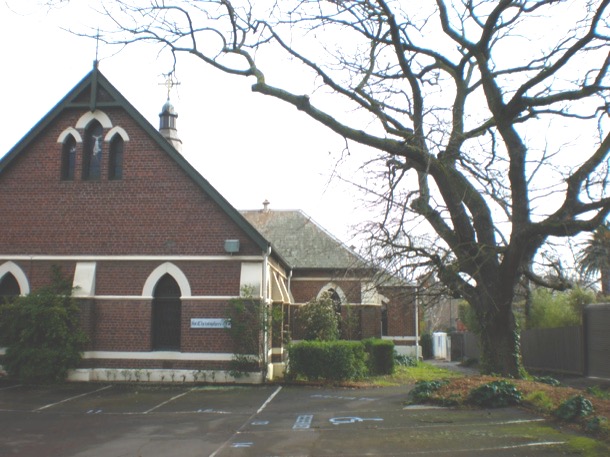
Box Hill Gasworks is now gone, but it was an important part of our parents' history. It was built early in the history of Box Hill:
7/1/1890 The Argus
Some twelve months ago the Nunawading and Boroondara councils granted permission to Mr. Thomas Coates, hydraulic engineer, to lay down gas mains in the streets of the two shires. Mr. Coates purchased an eligible site near Elgar road, Box Hill, upon which to erect the gasometer and the other necessary buildings. At the present time all the mains have been laid down in the shires named, and Mr. Coates is now in a position to light up Surrey Hills and Box Hill with gas. The local works are of such a nature that Mr. Coates contemplates being able to supply the wants of the district for many years to come without enlarging the gasworks. Last night a trial was made in Box Hill and Surrey Hills, when the corporation lamps were lit with gas for the first time. Illumination works were erected at the intersection of the leading streets. The trial was considered a very favourable one, the gas burning bright and clear. In connection with the lighting of these shires with gas a public banquet will be held in Surrey Hills next Monday night.
Over time three gasometers were built.
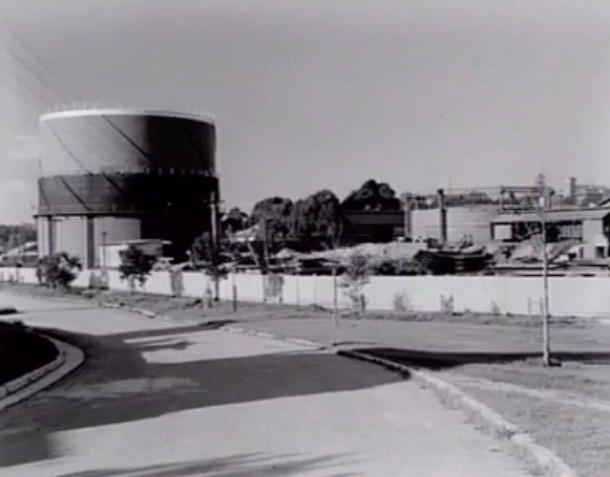
We don't know exactly when Jim started work at the Box Hill Gasworks, but in 1945 he left the Maribinong Munitions factory, where he had spent the war years. It was that year when our parents married and Jim moved into his in-laws’ Surrey Hills house. Soon after, he started work at the gas works as an analytical chemist. He worked there until began teaching in 1954.
Sue remembers him riding his bicycle to work, and later, a motorbike.
He worked in the laboratory, doing things like checking the calorific value of the gas.
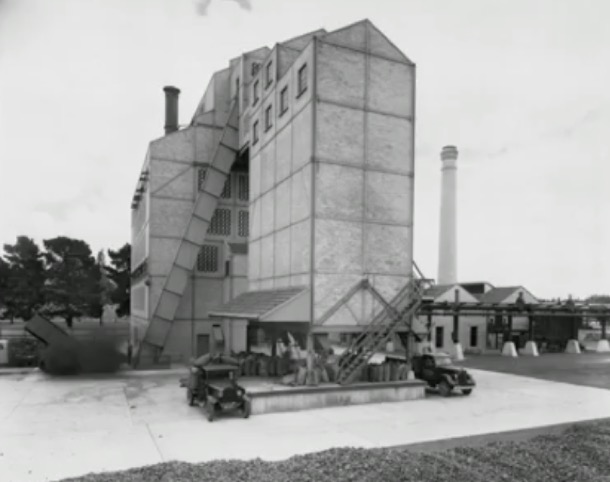
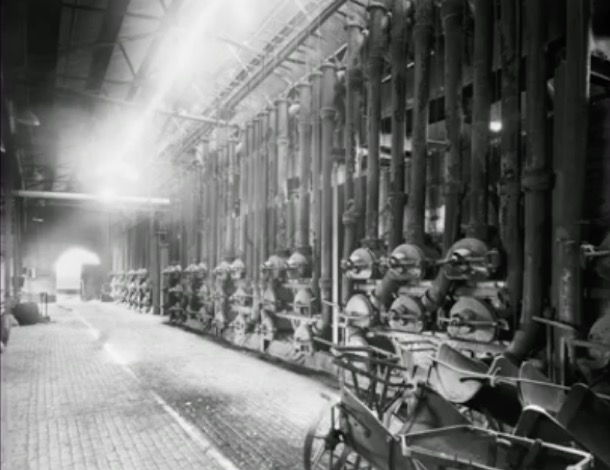
Melbourne’s gas supply was made from Latrobe Valley brown coal, sent by rail to the various gasworks, owned by Colonial Gas Company. Box Hill was one of the biggest. As Melbourne expanded after the war, the demand for gas meant that the various gas works were very busy.
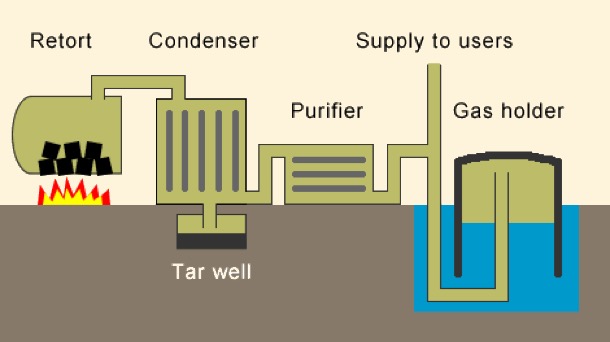
But, by 1960, substantial natural gas reserves had been discovered around Australia. Over the next five years all the Gas plants in Melbourne had closed down, and over 1000 workers were made redundant, by the discovery of natural gas deposit in Bass Strait. Over one million gas appliances in Melbourne were converted to natural gas in 1968. We remember the conversion time. There must have been plenty of publicity. Natural gas has no smell, and, for safety, they put in an additive to make it smell quite strongly. The flame was slightly different, but all the existing burners still worked.
The Gas Works are long gone. Box Hill Institute now occupies the site.
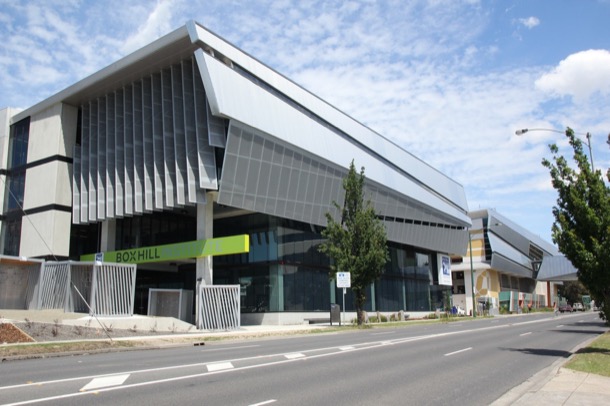
One of the fortnightly highlights in our simple lives was a trip to Box Hill Library. We loved this excursion, as we spent many hours reading on our beds. Books were expensive and we only owned a few. We had to rely on the Library so that we could finish our favourite series like Famous Five and the Billabong Books.It was very exciting if the next book in the series was on the shelf.
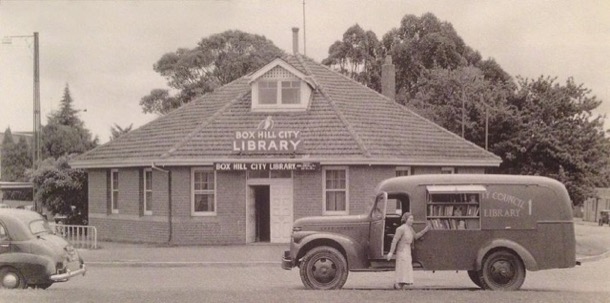
This small brick building was opposite the Town Hall at the end of the shopping centre. Whitehorse Road always had a wide, tree lined median strip, as it does today, and the library was right in the middle. It was later replaced by a grand modern library, but the small brick building is still there.
In our childhood, a trip to Box Hill shopping centre was quite an excursion, involving a four mile walk. In 2019 Google Maps says it takes thirty two minutes, but with small legs and a pusher as well, maybe it took a little longer. I remember it was fun and not arduous at all. The route went through suburban streets until Canterbury Road and from there it was ovals and open ground.
Box Hill Brickworks was one of the best sights on the walk to Box Hill, as the brickworks were still in full production. We marvelled at how small the men and carts were at the bottom of the quarry, and watched the procession of carts pass up and down the steep rail track to the actual brick works.
Box Hill Brickworks was founded in 1884 and was one of fifty or so brickworks throughout Melbourne, producing bricks, tiles and pipes for the building boom and ever expanding city. During the working life of the brickworks the clay was extracted from two clay holes or quarries. The first became Surrey Dive which became a popular swimming venue, but off limits to us. Sometimes however, we also gave ourselves the horrors, looking at green, mysterious waters. There were rumours of 'the dive' being bottomless and of swimmers disappearing in its murky depths. One story was of a man who took a very deep dive off the cliff side and simply disappeared. Some time later his body surfaced in Blackburn Lake, five kilometres away. No wonder we looked in awe and horror through the fence.
Today Surrey Dive is an attractive small urban lake used for swimming and remote controlled boat races.. A walking track around the ‘old dive’ and the brick works is planted with indigenous vegetation and a relaxing and attractive area.
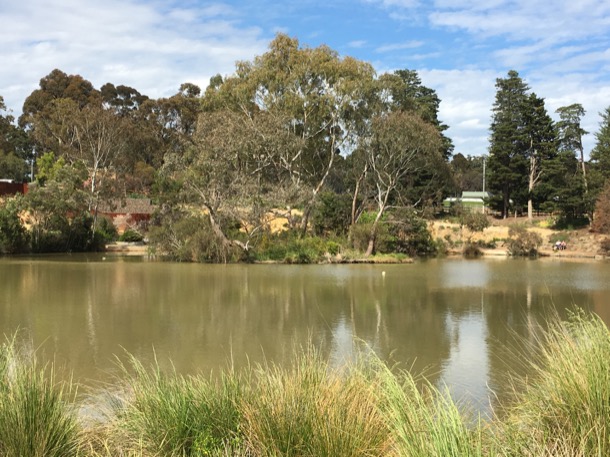
The other clay hole was the quarry that was in operation doing our childhood. It was adjacent to the brickworks and kiln, now derelict but still heritage listed. Unfortunately no restoration work has been carried out. The kiln itself was a massive, red brick building constructed on two levels and, of course, with a huge brick chimney.
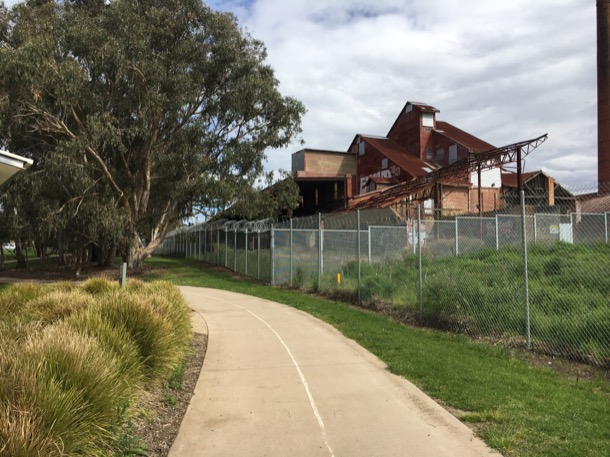
The quarry that was still in full production in our childhood, is now completely filled in. That cavernous hole in the ground is now a large mound covered in every weed known to man. On the horizon above the weeds, are the sky scrapers of twenty-first century Box Hill.
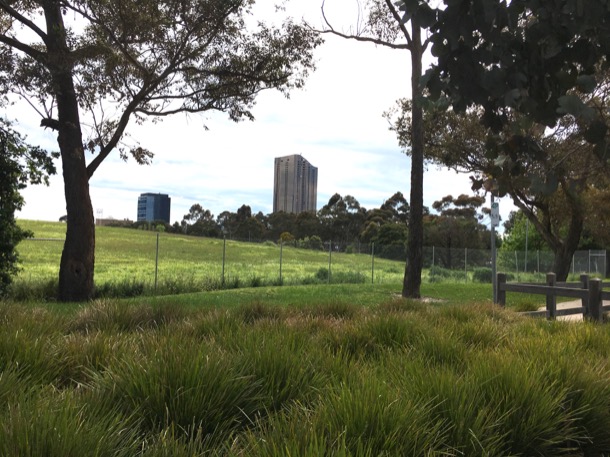
Box Hill shopping centre developed as a commercial centre, as soon as the railway line between Hawthorn and Lilydale was finished in 1862. It became an important transport hub for the eastern suburbs and beyond. During our childhood, Box Hill was the shopping destination for a big purchases. For instance, I can remember choosing a ‘walking’ doll with opening and closing eyes for a birthday present and the excitement of choosing a winter coat with a brown velvet collar. Another favourite shop was the delicatessen where such delicacies as rollmops, sauerkraut and frankfurters could be bought. Amongst the many single fronted small businesses were several large shops such as Taits haberdashery on the corner of Whitehorse Road and Station Street and Maples furniture shop. We also had a Coles variety store that sold anything from socks and singles to cosmetics, and MacEwans Hardware whose slogan was, “You can do it with McEwans because we’ve got a million things.”
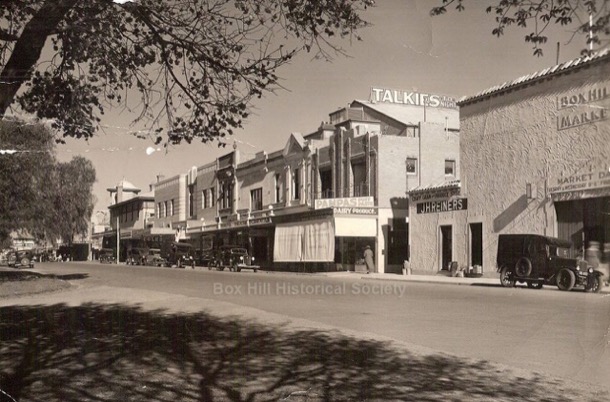
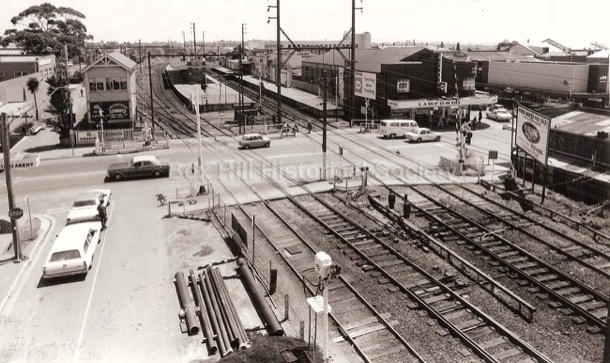
This is a photograph of Box Hill Station and the surrounding shopping precinct in the 1960s. In the centre of the photograph is the old station, that is now underground. Today, above ground, occupying the whole block surrounding the old station, is Box Hill Central and surrounding shopping malls. The signal box, the tall structure on the left of the railway gates is now occupied by the thirty-six storey golden residential tower, called Sky-One.
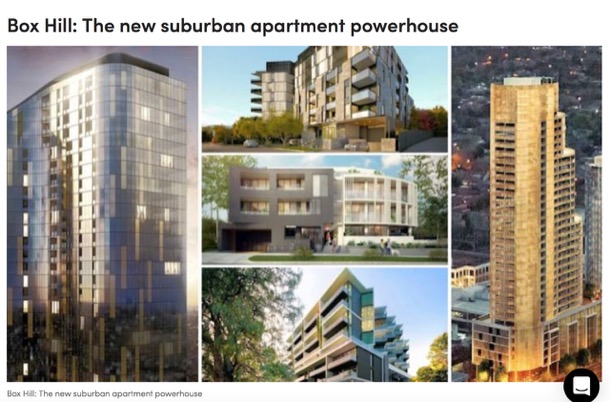
In the twenty-first century, Box Hill, as a commercial centre and transport hub, continues to influence the built environment around it, as you have no doubt witnessed. Officially designated as a development hub, Box Hill now sports high rise office and apartment towers. The streets we once drove down are now shopping malls, the station is underground, the railway gates are long gone and the strip shops have been replaced by a multi storey modern shopping centre. When we were children the shopping crowds were white and Anglo-Saxon. Today they are predominately Asian and the shops and restaurants reflect the change in population.
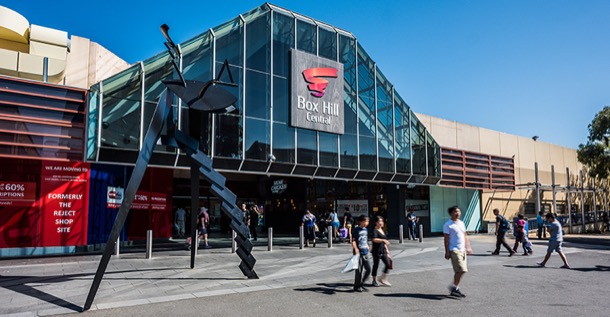
When we, as a family, first started going to the local Presbyterian church, it was called Presbyterian, Wattle Park. We had PWP embroidered on the front of our blue gym uniforms. This was before the advent of the Uniting Church. Church services were held in a cream brick building, called Forsythe Hall.
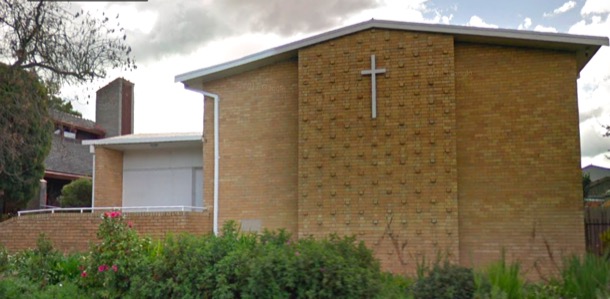
Attached, behind it, was an older little wooden building. During our childhood, this wooden building, Staley Hall, was used for a kindergarten during weekdays. In the evenings, various groups used it, including church boys’ and girls’ clubs (PBA and PGA) and the mixed club (PFA- Presbyterian Fellowship Association), we went to as teenagers. Sue and I both learnt to dance there, and I broke my front teeth on the heater in that room.
We have many memories of Forsyth Hall… dances, performances, Saturday afternoon movies, gym classes and, of course church services.
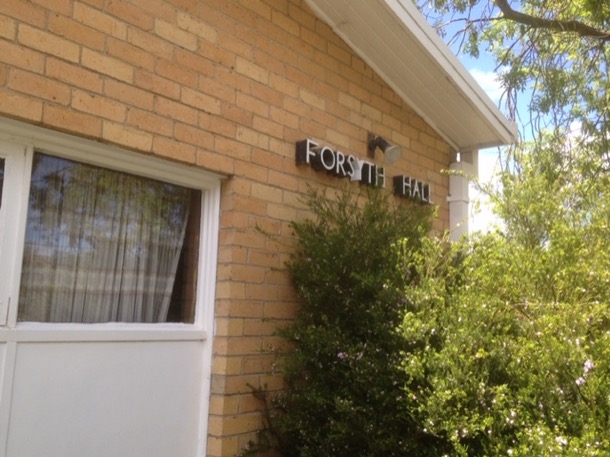
Both our parents were Elders of the church. Our mother taught Sunday School, our father ran the PFA for a while, and was on the board of management. The church was their only real friendship group, and was the only social life we had, as a family.
In the early 1960s the church community began the project of building a new church on the site. The size and scale of the project was a source of much disagreement between our father and others on the management committee.
In the end, a very grand architect designed building was commissioned. The new building was designed by well known architects Chandler & Patrick. An 1887 pipe organ was relocated from a church in Melbourne and extensively rebuilt. The new church, renamed St James, opened in 1965.
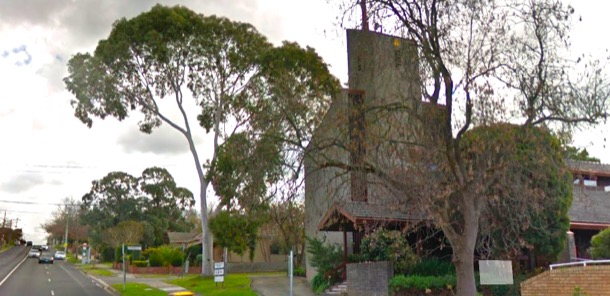
I loved it, because I sang in the church choir, and it had a choir loft at the back and great acoustics.
The buildings are still there. Sue and I visited as a detour on our “back to school” walk in 2016.
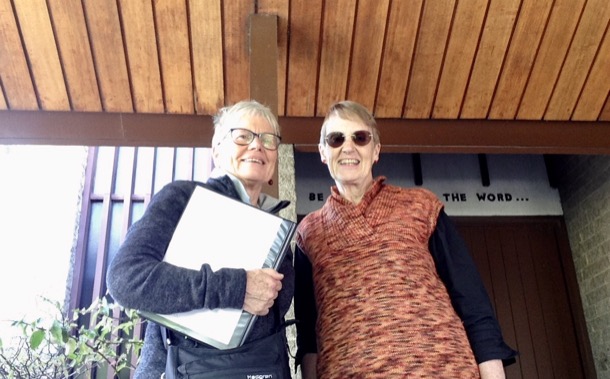
Auntie Bert, a "sterling character"
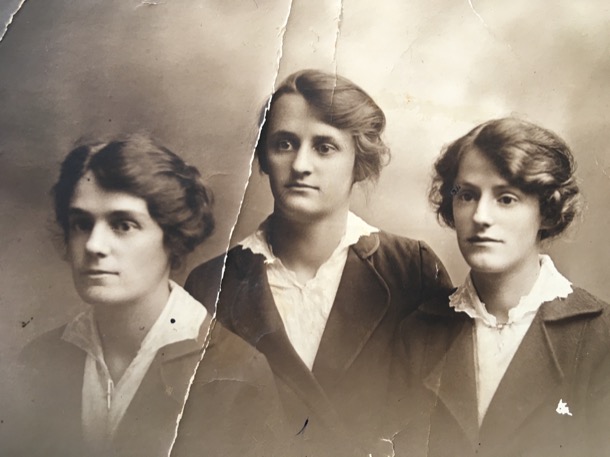
These three young women are our grandmother Alfreda on the left, with her two younger sisters, Beatrice in the middle and Berta on the right.
Alfreda’s set jaw and determined look reflect her independence and demand for an education. I fancy I can see both the rebel and the farmer in Beatrice’s broad face. But look at the gentle, faraway, passive prettiness of Berta. What experiences are already clouding her young face?
About ten percent of the whole of Australia’a population, the country’s young, fit men, set off to war in 1914. More than half of them were killed, gassed, wounded or taken prisoner. There was no such diagnosis as “post traumatic stress”, but we can extrapolate from the modern experience of returning soldiers.
What happened to the equivalent ten percent of young women, who, in different circumstances, would have been marrying them and having their babies?
Our Auntie Bert became one of the many “maiden aunts” of that very specific generation. The family lore is that she “had opportunities” to marry but “chose to stay in the bosom of her family”. We do not know what the reality of her young life was. Had she been a boy, she would have been one of the 417,000 men who enlisted. One would presume that virtually all the young men she might have had a romantic interest in… brothers of her friends, boys from church, at work, on the train, in her neighbourhood… nearly all would have been absent for four years from when she was 18 until she was 22.
Berta Holm was born in 1896. Her childhood and early adult life was spent in St Kilda.
The family story is that Berta and Beatrice unlike their older sister, Alfreda, did not hunger for an education.
Alice and Marge said this in quite a disapproving tone, which made us wonder about the accuracy of the statement, that Auntie Bert left school at Grade 4, declaring that she would prefer to help her mother at home. In Grade 4 she would have been nine or ten!
At the time Victoria was a progressive state and proud to be the first Australian state to create a system of free, secular and compulsory education. This legislation introduced in 1872, required all children aged 6-15 years to attend school unless they had a reasonable excuse. Schools were built, and a system of inspectors employed to enforce compulsory education. Fines for non-attendance were five shillings and increased for further offences. Did Auntie Bert leave school at the tender age of nine or ten? We think it more likely that she attended a State school, maybe unwillingly and, after trying a private school for young ladies, left at the age fifteen. Their disapproval of the lack of enthusiasm for education, compared to their own mother’s, probably colours the story about their aunt. The view of Auntie Bert we were brought up with, was that she was good with her hands, but, to soften and elevate this statement in true Holm fashion, it was followed by, she was a superb craftswoman and much in demand: not academic but exceptional.
Some time after she left school Berta went to work in Flinders Lane.
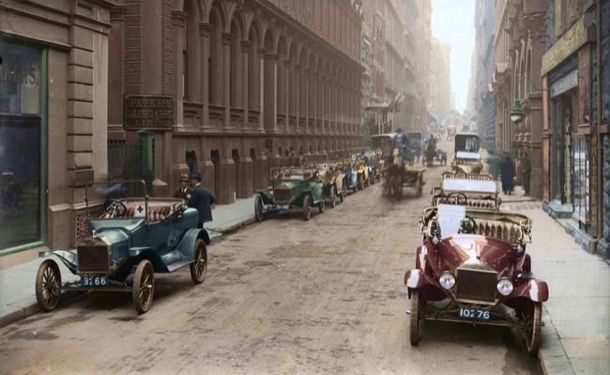
At that time Flinders Lane was the centre of the ‘rag trade’ where many Jewish firms had their businesses. Amongst them was Slutskins, for whom both Berta and Beatrice worked doing ‘white work’. Whitework embroidery is the general term for hand embroidery worked with white threads on white fabrics. It is one of the most elegant and timeless styles of embroidery and was used on underwear, night gowns, table linen, handkerchiefs, baby bonnets, christening gowns and many other small items.
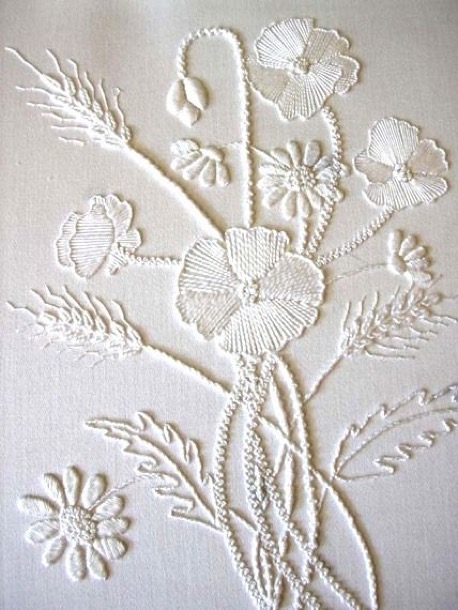
After some experience in this area Berta became forewoman, in charge of a group of other women.
We only have Alice and Marge’s childhood recollections from which to piece together Berta’s life.
In early 1925, when she was twenty-nine, perhaps moving away from her parents’ home for the first time, she left her job, probably that responsible position as forewoman. She went, for an unspecified time, to the country, to help her married sister with a toddler and a baby, and to help serve in her brother in law’s hardware shop.
Alfreda had given birth to Alice, our mother, in 1923. She had had a terrible time, alone, during her first delivery, resulting in the death of the baby. We don't know anything about Marge’s birth or the subsequent few years, except that they were quite near to family help. But when Alice was fifteen months old, Alf and Alfreda moved to Bacchus Marsh. Alfreda was “weak from the birth”. The descriptions of her crying, while scrubbing the floor and having to spend whole days in bed, apparently requiring the help of her unmarried sister, makes us think of post natal depression.
Alf too had what we would today call “mental health issues”. He was a gentle, quite scholarly person, and the business venture in Bacchus Marsh, on the eve of the Great Depression, took a toll on his health. It is no wonder Marge and Alice remember Auntie Bert as a tower of strength and support.
In 1928, the old dry house they had been living in caught fire. At the top of the burning staircase were the little girls in their nighties, Alf sedated, because he was in the midst of a “nervous breakdown”, Alfreda, reportedly trying to find her stockings, and Bert, who carried Alice down the stairs. Marge was carried down by her father, finally awake.
The destitute family were taken in by “the Pierces”. Nell Pierce was a lifelong friend of Auntie Bert. Did they meet there at Bacchus Marsh? We don't know.
The family stayed on for at least a year in Bacchus Marsh, but Berta moved back to Melbourne, once again moving in with her parents, probably her only option.
Now in her early thirties and unmarried Berta must have turned her attention to a job. As far as we know this is when she decided to start her own business as a dressmaker. At first she worked from her bedroom, building her business and reputation.
The business was eventually profitable enough to allow her to move to premises in Riversdale Road, Middle Camberwell and then to Burke Road in Camberwell, just over the junction.
I can remember the junction premises quite vividly. It was one big room on the first floor. Big windows looked out onto Burke Road, letting in light and sunshine that fell on the big work tables. Several dressmakers dummies stood in the corner where the fitting room was screened by curtains. It seemed a very busy place.
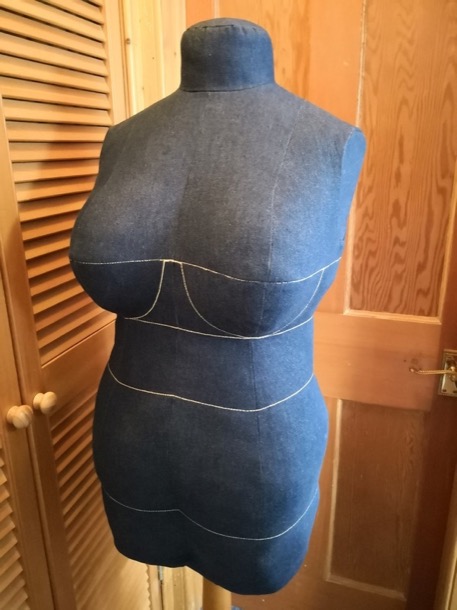
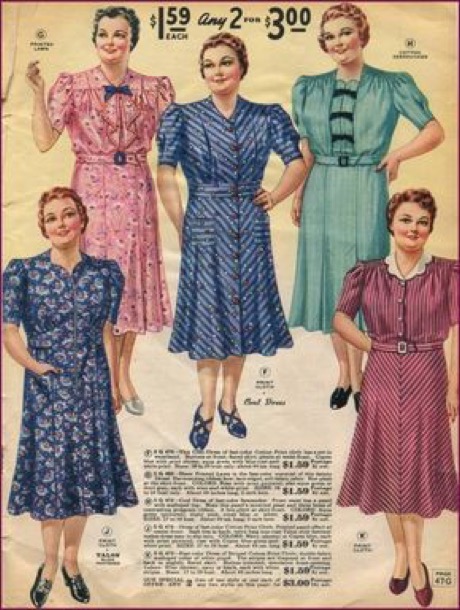
The big tables, that dominated the space were covered in the paraphernalia of dressmaking. There were several sewing machines, many reels of sewing cotton, several pairs of big dressmakers shears, other dressmaking scissors and many tins of pins. Rolls of fabric and garments in various stages of construction took up the rest of the table space. Another woman was sewing at the table, presumably an employee, so business must have been good. We were probably there for a fitting, as Auntie Bert made ‘good clothes’, for Mum. These beautifully tailored clothes were worn to Church and were for special occasions, including weddings:
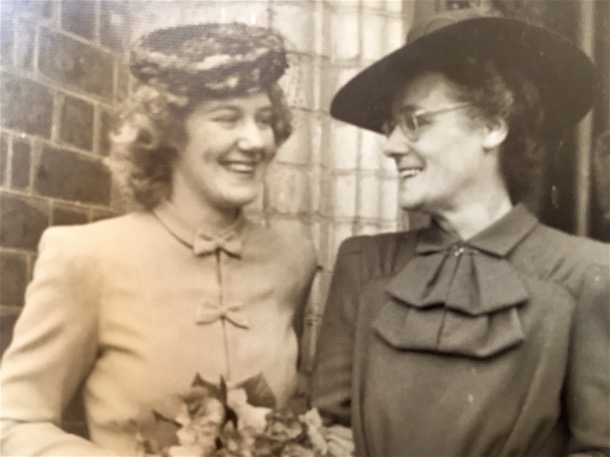
She also made us beautiful clothes including these woollen dresses:
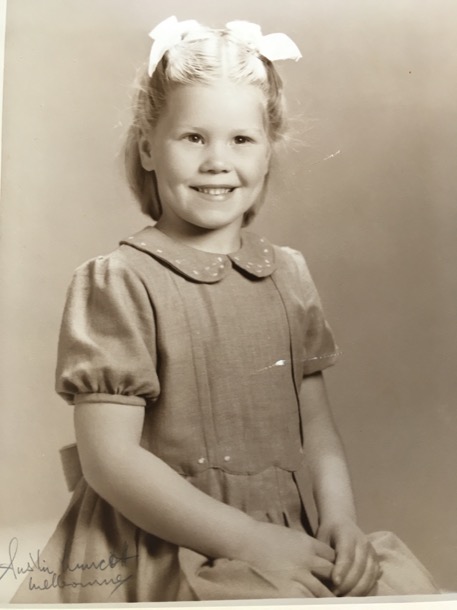
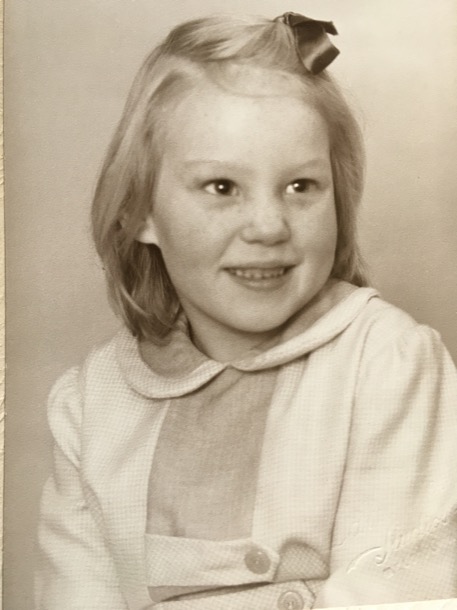
Auntie Bert had an account at Ball & Welch, a prominent department store in Finders Street, Melbourne. She needed an account for her business and a reliable source of good quality fabric for her clients. Its four floors occupied one third of the total block and stretched between Flinders Street and Flinders Lane.
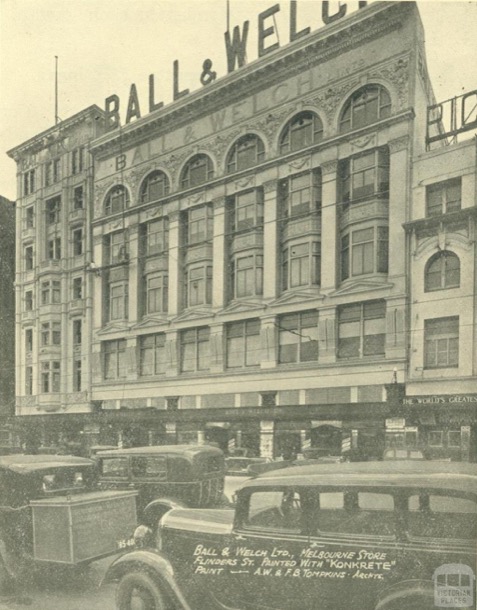
Its many departments included gloves, umbrellas and handkerchiefs, fabrics, furniture, china, millinery, furs and corsets. At one time twenty-six assistants were devoted to the sale of lace alone.
Members of the family were generously given access to Auntie Bert’s account, making it possible to buy items on account and pay later. This was very useful at times, as there was no such thing as Credit Cards. At the end of the month, Auntie Bert sent out letters to all those who had used the account, and we reimbursed her by cheque. This was probably quite a task, not only the arithmetic, but also the sending out of all the individual letters.
I can remember enjoying trips to Ball&Welch. The lifts were staffed by attendants in uniform who recited the list of items available at each level as the lift rose between floors. Parcels were wrapped up in brown paper and string, on huge wooden counters. The expert shop assistants were reserved, formal and a little forbidding to a young child. The exchange of payment was quite a process. The shop assistants' job was to serve the customers, not handle the money. When payment was made, it was placed, with the hand written docket, in a metal canister that went shooting on wires across the departments and then upstairs to the Accounts Department. The docket was checked, change inserted, a receipt written and the canister whizzed back from whence it had come. Transaction complete.
The cash-ball system worked reasonably well, but the rails were intrusive and the interior layout of some stores did not allow certain counters or departments to be connected by inclined tracks. The ingenious Lamson then hit upon the concept of the “aerial railway” and set about tinkering with a gondola-like design, which became known as the wire-line or cable-carrier.
By the late 1880s, sales staff could secure cash inside a small wooden jar or canister, suspended by wheels from a taut wire that ran overhead from the sales desk to the cashier’s station, which was typically a cage-like booth situated in the center of the store. By tugging firmly on a spring-loaded cord or lever known as the “propulsion,” the canister would be catapulted along the wire, reaching its destination in mere seconds.
The cashier could then “return fire” with change and a receipt. Cashiers who worked in booths on levels above the sales floor could simply release the canister and let gravity return it to the appropriate counter.
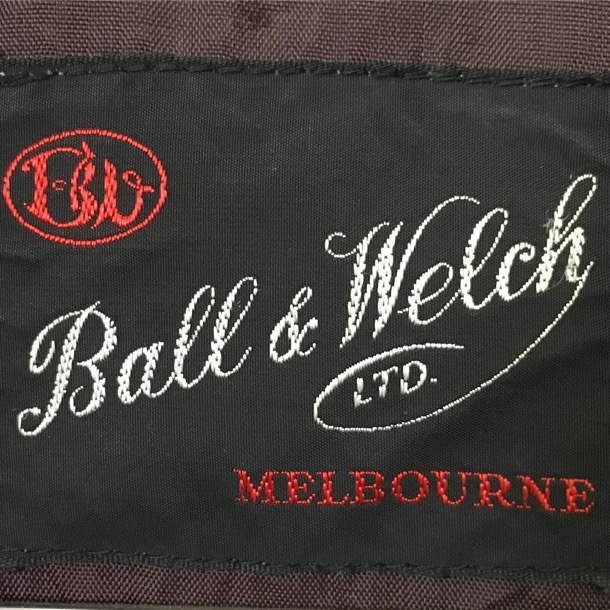
Ball and Welch closed its doors in 1970, the end of an era .
Berta’s sister, Beatrice had taken up dairy farming in the early 1950s, near Cockatoo, in the Dandenong Ranges. The bulk of the work was done by her husband, and three sons. In 1955, the wife of Rob, the middle son, died, leaving a baby daughter, Julie, to be raised by her grandmother.
Into the breach stepped Berta. She moved into a small bedroom in the farm house, and became a second mother to Julie. We remember her room. It had been part of the farmhouse verandah, and the whole room was about twice the size of the single bed. It was neat, sparse and dark.
Our memory of Auntie Bert at the farm is solely inside the farm house. Unlike Auntie Beat, who mucked out the pigs, wearing layers of old jumpers and a woollen beanie, Auntie Bert was always nicely dressed. We remember her in well-cut woollen skirts, stockings and heeled court shoes, with classy jumpers and cardigans. We picture the two of them in the kitchen, both wearing aprons, turning out scones and cakes on the wood stove. Auntie Bert became a permanent and valuable member of the family, looking after the “boys” and Julie.
While her main home and focus was life at the farm, Auntie Bert continued, as she had her whole life, to be the family helper and nurse. She had looked after both her own parents in their final years, and she came to live with us to help out with her elder sister: our Nana, Alfreda, who had dementia. We remember her as a quiet unobtrusive presence in our home. A few years later she came again and helped with Alf, our grandfather, in his final weeks.
So Alice saw first hand, the skill and care of Berta’s nursing:
Apart from staying temporarily with other members of the family, usually to help out during family crises, Berta lived there at the farm, until her death in 1976, aged 80.
Alice reflected on Berta’s death and the simple generous life she lived:
From left to right, Nana, Auntie Bert and Alice: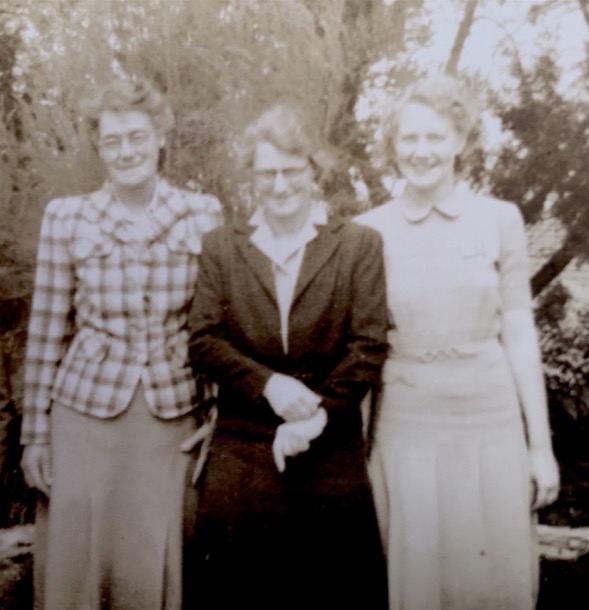
Decade by Decade
Here is the audio of this from the recordings:
With our more modern education, we have less of a firm grasp of History, and we know that our children, and their children have, and will have, an even sparser knowledge. So we have taken the overview concept, explained a little more fully, and added in our father’s family history and other aspects we have recently discovered.
Alice and Marge finished recounting their family stories at 1950. One of our tasks in this project has been to continue on from then, and so we have done just that. We explore the nineteen fifties, sixties and seventies, linking what was happening in the wider world into our own lives.
1850-1950
Between 1839 and 1872 our ancestors arrived in Australia.They came from both Northern and Southern Ireland, England, Germany and Denmark. All were from humble origins, having worked as agricultural labourers, domestic servants, a baker and an engineer. Some were already married and others met here.
As our ancestors built their new lives in Victoria, the First Australians had already felt the disastrous impact of European contact. There had been violent conflict, the Wurundjeri population had been decimated and the survivors relocated to reserves or camps a ‘suitable' distance away from the growing population of Melbourne and outlying settlements. In 1844, when the Bourkes took up their selection at Pakenham, they were the first white settlers in the area and the “blacks camp” by the river was noted in Catherine’s memoir. Several years later, Adam Rye, from the other side of the family, was robbed by a party of ’50 blacks’. The newspaper report notes that ‘the blacks at this time were very treacherous’.
With the discovery of gold, in New South Wales and Victoria, there was a huge increase in population and in wealth.
Victoria benefitted the most. Melbourne became Australia’s largest city, with a huge land boom. Grand old buildings like the Melbourne town hall and exhibition buildings are reminders of those glory days.
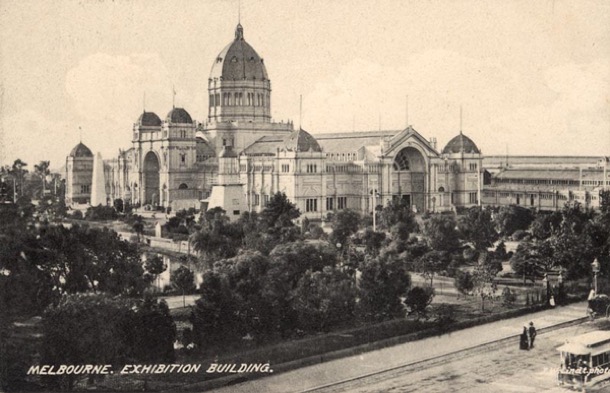
The increase in population, rapid development and the attraction of the goldfields led to a shortage of workers. This meant great job opportunities at every level. It also put workers in a good bargaining position.Trade Unions developed and working conditions were the best in the world. Australia was an egalitarian workers’ paradise.
Small businessmen, like publicans, bakers and lawyers, prospered with the growth in Melbourne. For farmers, it meant bigger markets, more mouths to feed. The growth in country towns, better roads and railway development made life in the country less difficult.
Engineers had a lot of work with the sudden development of infrastructure and property developers were run off their feet. Our grandfather’s grandfather, a young engineer from England, was building bridges in the expanding colony. While building the bridge across the Barwon River, his son, our grandfather’s father, was born, his birth unregistered.
Back in ‘Marvellous Melbourne’ our grandmother’s grandparents who had arrived from Belfast, were developing St Kilda: building large houses and public buildings for those who were prospering in the boom town.
On the land, our maternal ancestor Adam Rye, who had survived the attack by ’50 blacks’, settled in Geelong and worked as a farm labourer. He was later gripped by gold fever and went north to seek his fortune, only to be held up by bushrangers and lose his meagre pickings. His daughter married a German immigrant, Dau, and they settled on a mixed farm at Wandong. Here they raised seventeen children and supplied food to the growing population.
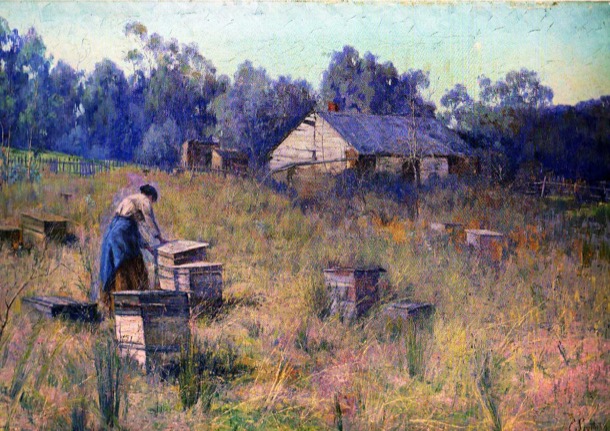
Meanwhile our paternal forbears, also on the land, were making their mark in Gippsland and North Central Victoria. In Pakenham the Irish Bourkes were building their family of thirteen children, and now owned Bourke’s Hotel. They were becoming significant landowners and community members, as they set about acquiring land, marrying their daughters well and establishing their sons on large and prosperous properties. They also served their community in local Government and built the horse racing industry in Pakenham.
1858 Land Sales, Michael Bourke's purchases:
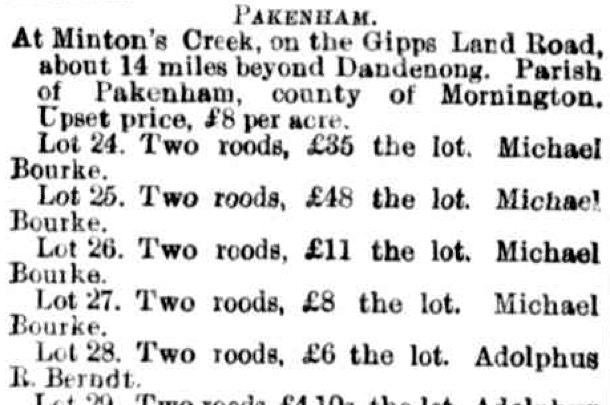
The MacCormacks, in North Central Victoria were also acquiring and working large grazing properties, firstly in Tallarook and then in Molesworth. They too were pillars of the local Catholic Church and community. Our grandmother was born there, at Balham Hill, pictured below.
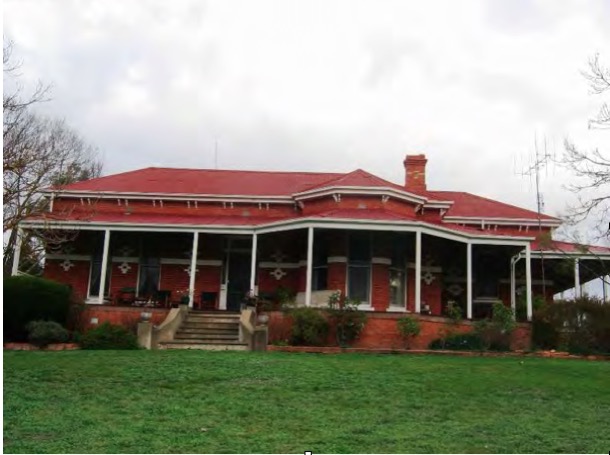
Melbourne became the financial centre of Australia and New Zealand. The Pakenham Bourkes’ fourth son, our great grandfather, was part of this world. He had moved to Parkville and built his law career in this thriving city. Australians were growing in confidence and the young nation was showing signs of an interest in its own identity. This was the era of Henry Lawson and Banjo Patterson, who wrote about the characters of ‘the bush’. At the same time, Tom Roberts and his paintings glorified the unique Australian landscape and the men and women who toiled there. This growing sense of identity and of nationhood is reflected in the moves for independence from Great Britain. During this era of optimism and hope our grandparents were small children, and their families were well established in both country Victoria and Melbourne.
Federation was achieved in 1901, and the country celebrated:
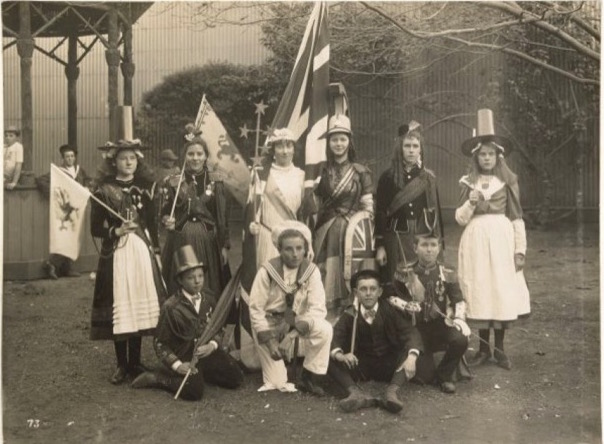
Australia was longer a colony but an independent nation. Melbourne was the largest city in Australia at the time and the second largest city in the Empire (after London). It was fitting that the new Parliament should sit in Melbourne while Canberra was being constructed.
The decade after Federation saw Australian women join the battle for women’s suffrage. White men over 18 in Victoria had had the right to vote since 1858, but women were not granted this right until 1908. Our maternal grandmother, Alfreda, was sixteen when women were granted the right to vote. We imagine she would have approved. She had been engaged in her own battle to pursue her dream of further education; and during this decade she finished her secondary education at Melbourne’s Continuation School, the opening of which marked the beginning of state secondary education in Victoria.
This period of prosperity, optimism, and political and social change ended in the devastation of the Word War 1. We know little of the family’s war service, but three of our maternal grandfather’s uncles served in France, and one lost his life. In the highly charged patriotic atmosphere of the time, and with mounting casualty lists, the war years must have been a difficult time, especially for our grandfather who was considered unfit for service due to ill health. He was deeply upset when given a white feather. Presumably our paternal grandfather being a country doctor, was in a protected occupation.
Our grandparents were all married at the end of this war. Our father’s parents were married in St Patricks Cathedral in a grand affair. Grace and Hugh then settled in Koroit in the Western District, where Hugh was the local doctor.
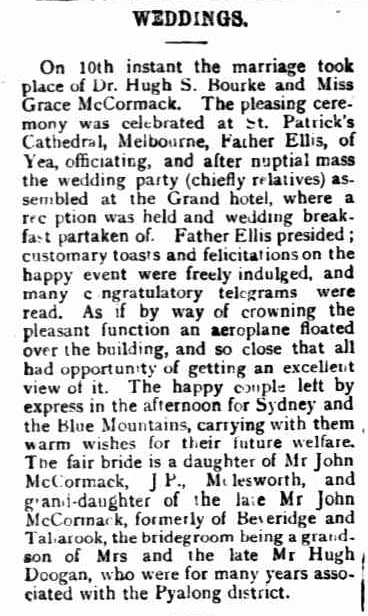
In contrast our mother’s parents were married in the Methodist Church in Surrey Hills in a small and simple ceremony where the bride did not even wear a wedding dress. At that time Alfreda was working as a teacher and Alf was working in a hardware shop in the city. They also moved to the country, soon after: to Eildon, where hardware supplies were needed for the construction of Eildon Weir.
Our family then lived through the Great Depression of the thirties, formative years for our parents who were by then at school. Our father was boarding at Xavier College and our mother was at Croydon Primary School. By the end of the decade the world was at war again.
During the war in a munitions factory, in Maribyrnong, two very different family histories were to merge into one. One was Irish Catholic, successful and quite wealthy, and the other was staunchly Protestant and relatively poor. One was involved in the Melbourne horse racing scene and the other was teetotal and interested in ideas and the new ‘isms’ that were emerging on the other side of the world. Our parents were married at the end of World War 2.
1950s
Our mother’s view of the 1950s, in her recording, is of a time of burgeoning economic growth and development. To us, it is the decade we first became aware of the world.
Our world was redolent with Australiana, but we were intensely aware of our British heritage, and it dominated our reading, our schooling, our whole culture. A portrait of The Queen hung in our school. Sue remembers keeping a scrap book at home of magazine articles about the Royal Family. She was particularly interested in the corgis. Apparently I had one too, and it contained very many pieces about Princess Margaret.
Enid Blyton Books:
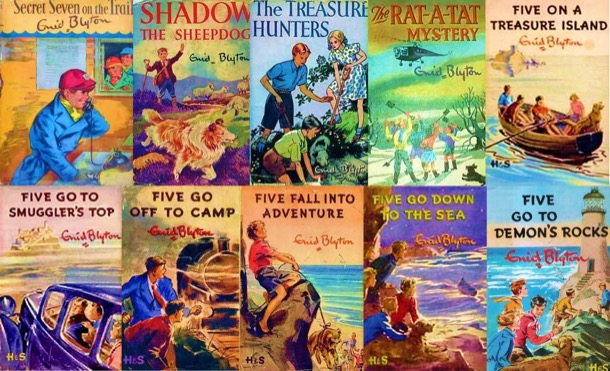
Globally, it was a dangerous world, with the cold war in full swing, and a very real threat of nuclear war. Our parents had quite well developed political opinions, particularly our mother, so we were exposed to adult conversations about the issues of the day. Family friends and neighbours, the Lees, were active in the union movement. They encouraged our parents’ involvement in the movement for “unilateral disarmament” and other left wing activities. I remember our mother’s admiration for an older couple who took a small boat out into the Pacific Ocean to protest the nuclear testing. Bikini Atoll in the Pacific, sixty years on, is still a no go zone from the USA nuclear tests carried out there up until 1958.
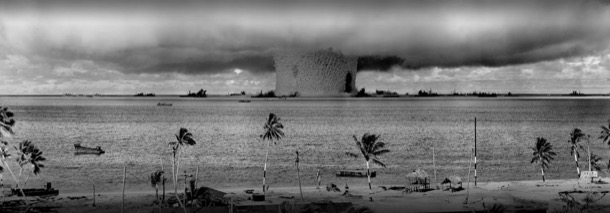
This was the time of McCarthyism in America, and Australian political attempts to ban the Australian Communist Party: a divisive time, where everyday people had strong opinions one way or the other. Sue remembers Prime Minister Menzies as “the devil incarnate”.
The Campaign for Nuclear Disarmament became overwhelmed in the 1960s by anti Vietnam War action, but it was an important political movement of the 1950s. The familiar “Ban the Bomb”, or “Peace” symbol was invented in 1958, as a symbolic representation of ND (Nuclear Disarmament)
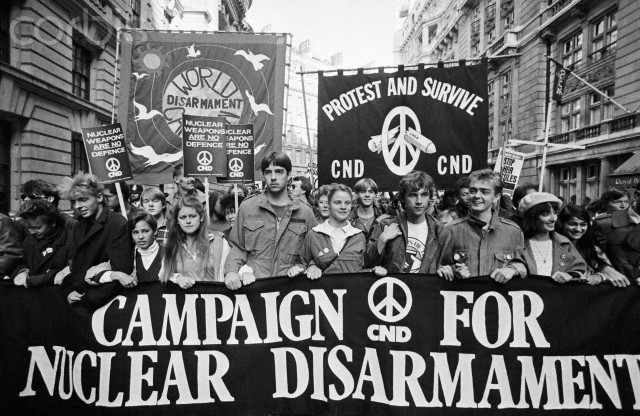
Our family was, by today’s standards, quite poor, but this did not impinge on our life, at this time. We were well fed, we had a stay at home mother who looked after us and the struggle to pay bills was not part of our conscious experience. As far as we children knew, we were neither poorer nor better off than our neighbours, with the exception of the family in the housing commission house nearby, whose son had polio and who didn’t always have enough to eat. The world, as we observed it in our daily life, was largely classless. Perhaps Australia at this time really was the egalitarian workers’ paradise it purported to be, to prospective migrants in Britain. (only whites of course)
Nevertheless, we knew about the religious and economic differences within our family: that our father’s relatives were wealthy and that we were not, because our parents’ union was a “mixed marriage” and very disapproved of. We were very aware of their Catholicism and our Protestantism, and that we were not as close to our grandmother as our cousins were.
Our father during the 1950s, went from working as an industrial chemist by day, and studying by night, to full time teaching. We got our first car, a television and a refrigerator. By the end of the decade there had been four children born. It was busy, but simple life, encumbered by very little “stuff”.
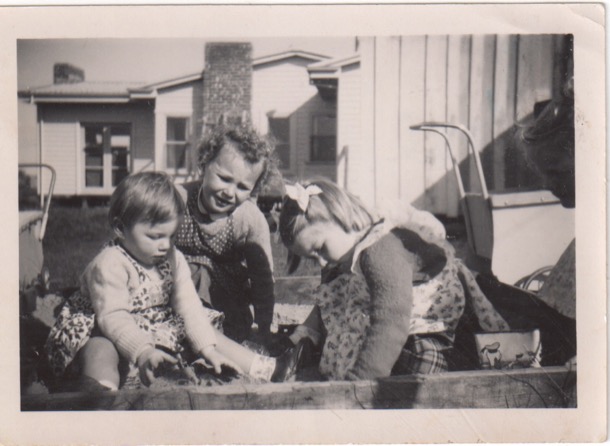
Our suburb of Box Hill South was the edge of suburbia, when our parents first bought their block. During the fifties the new suburbs filled in with more and more families, and the frontier stretched east towards the orchards of Blackburn.
Below is Doncaster, contrasting the 1945 view to that of today. It was little changed in the 1950s. We remember breaking an axle on our Talbot car in Doncaster, a farming and orchards area with narrow unmade roads.
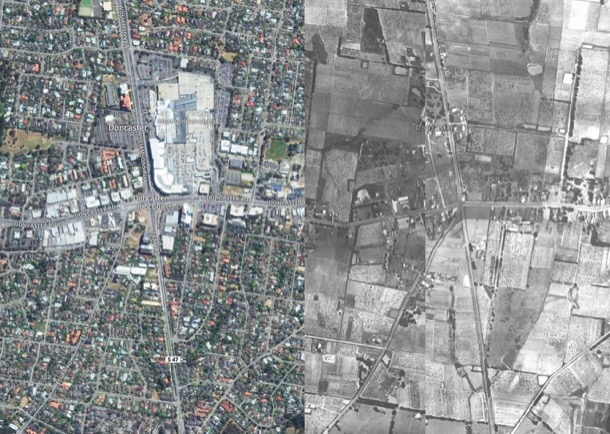
The sewerage reached us during the late fifties. Neighbours got together to dig each others’ trenches. The footpaths were paved, allowing us to roller-skate along them.
The streets were deemed to be safe enough for five year old girls to walk unsupervised, from Box Hill South to Surrey Hills to Sunday School and to Bennettswood to school.
We are baby boomers, and this was the most booming time. When we began school, Sue in 1954 and me in 1957, “temporary” schools were being thrown up, and unqualified teachers recruited to deal with the rush.
My first experience of school was a few weeks in “bubs”, and then the-bursting-at-the-seams class was reduced by a handful of us being put straight into Grade 1. Here is that grade photo with Miss Meadows and her 47 pupils.
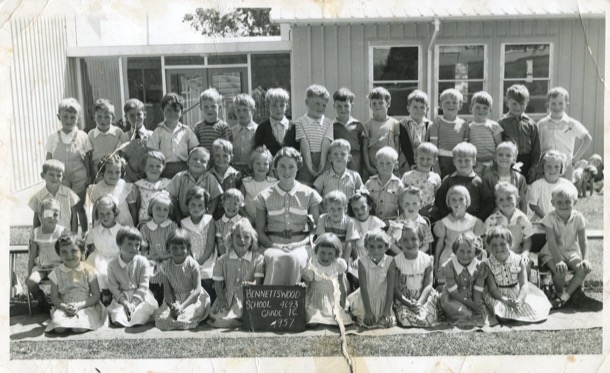
1960s
This decade covers our teenage years. It was a time of huge change in the western world. By the end of the decade, Neil Armstrong had walked on the moon, women were controlling their own fertility with the Pill and popular culture had discovered the huge Baby Boomer teens market. During the sixties, there was a general loosening and questioning of traditional social norms. Older people were probably more aware of these momentous changes. For us the loosening of the cultural apron strings, that is such a feature of these times, coincided with the loosening of our familial apron strings.
The conflict between our generation’s straining at the bit and society’s entrenched traditional values played out in our school life. As fashion hemlines rose, school uniform strictures fought them. We knelt to have the gap between our uniforms and the floor measured precisely, and hastily pulled down our hoiked up dresses whenever a teacher came in sight. The anti war slogans on our pencil cases, alongside the names of pop groups we fancied, had to be kept hidden, or there would be detention. A new rule dividing the grassed hill area into a boys’ side and a girls’ side transformed the hill into a vast empty space with a cramped central area where everybody sat alongside the invisible line. In our school, as far as we can remember, there were no brown faces, hardly any Asian faces and no Aborigines. Foreigners were the Italian and Greek “new Australians”, and even they were rare in our (then) outer Eastern suburb.
Culturally, as more and more families spent more and more time around the television set, American culture rather than English, began to dominate our life.
We can’t remember exactly when we got a television set, just that it was bought specifically for watching cricket. As a family we watched the Australian serial Bellbird, which preceded the seven o'clock news. There were a succession of American sit coms we all watched, like My Favourite Martian, Bewitched, Father Knows Best, the Donna Reed show, Bachelor Father, My Three Sons and Mr Ed. After school I remember Clutch Cargo, Sea Hunt, George Reeves in Superman, and Hogan’s Heroes, F troop and Bonanza. And very rarely we were granted permission to watch 77 Sunset Strip. These are nearly all American titles. There were Australian and English shows too, but it is the American ones we remember.
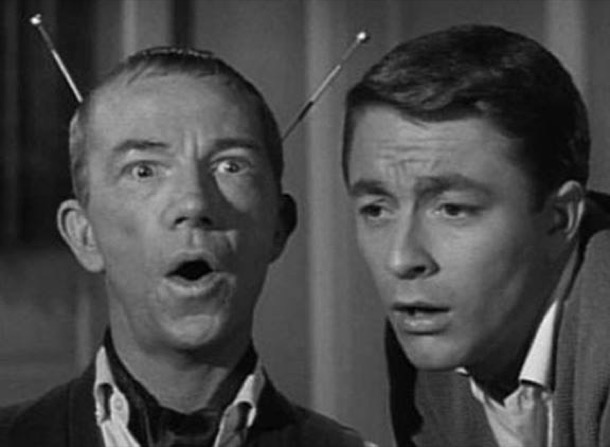
With this American influence in our lives, and increasing prosperity, “teenagers”, a term first heard in the 1950s, emerged even more as a marketing target. For the first time, teenagers had their own music, fashion, language. I was more plugged into Teen culture than Sue. I began to go to local Saturday night church dances from about aged 14. There was always a live band who played rock and roll covers. A group of us from church would go.
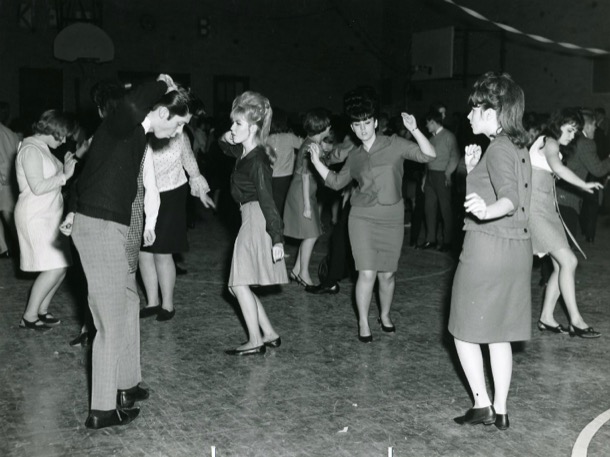
Dress was quite formal, ties for boys and stockings and heels for girls. I remember the winter that plain coloured wool dresses with white crocheted collars and cuffs were all the rage: probably 1965. Auntie Bert, dressmaker to the wealthy ladies of Melbourne, made me a tailored aqua one with little kick pleats around the bottom.
Below is fourteen year old Margaret in the aqua wooden dress with while crocheted collar and cuffs.
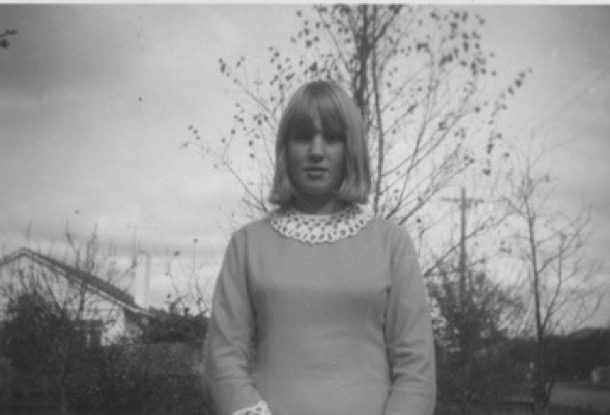
During the 1960s, Australians were entrenched in the divisive Vietnam war. Our family was by default anti war, and the “all the way with LBJ” policy of our government was fiercely criticised. In 1967, my boyfriend and another close family friend was conscripted for military service. Against huge opposition, the government had voted to call up into military service some twenty year old men. Many of them ended up fighting in the jungles of Vietnam. Our mother testified in court for the other friend, who was a registered conscientious objector. But many other friends and acquaintances went off to Vietnam with their hair shaved and very basic training. Some of those veterans live with the trauma of those experiences even today.
A "Save Our Sons" movement protested against conscription:
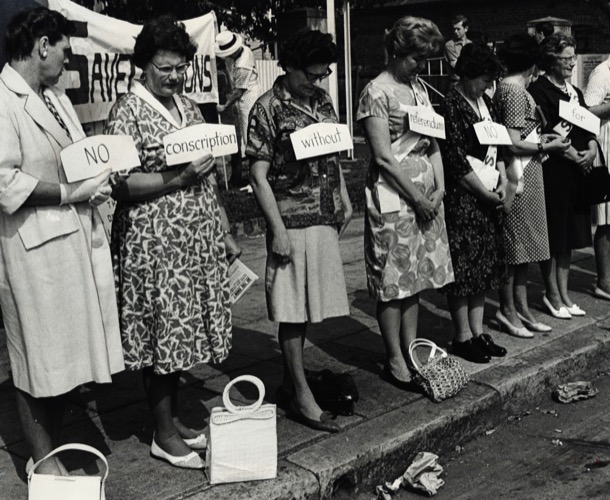
Gradually, public opinion in Australia, as in America, swung firmly against the war; and ordinary Australians demonstrated in the street.
By 1970, Sue and I had left school and were engaged in our tertiary studies, sharing a house in North Balwyn. University was still expensive, and we both managed it by gaining a bonded scholarship called a Studentship, which paid our fees, as well as a small living allowance. Even in a relatively enlightened family like ours, it was made clear that any family budget that was to be spent on university studies, was to be saved for our younger brothers, because they were boys.
1970s
The 1970s was a decade of change for us personally, and a tumultuous time worldwide. In some ways, the decade was a continuation of the 1960s. Women, gays and lesbians and other marginalised people continued their fight for equality, and many Australians joined the world wide protest against the ongoing war in Vietnam. Outrage at the continuing conflict was fuelled by the graphic coverage of the brutality of war, available nightly on our TV screens.
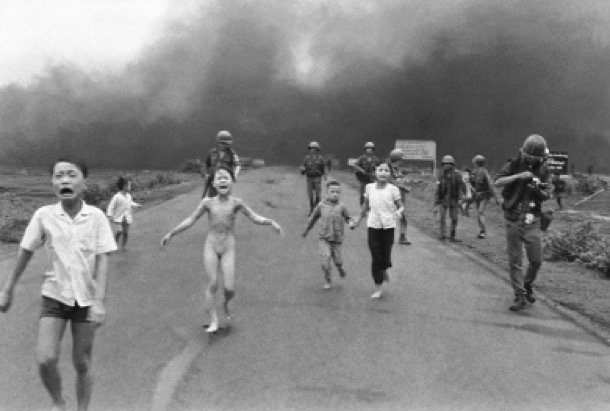
Protest was bitter and violent.
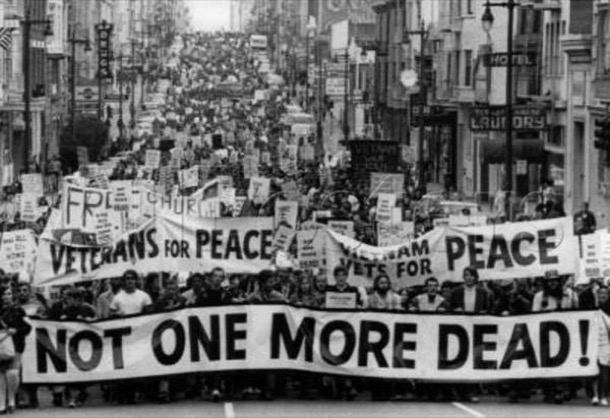
By 1975 Saigon had fallen: a humiliating defeat for the USA.
There was more violence as Pol Pot and the Khmer Rouge murdered 1.7 million Cambodians, and on the other side of the world, the IRA fought for British withdrawal from Northern Ireland.
Rapid advances in technology were in play, changing our world and planting the seeds for the creation of digital world, we are grappling with today. Apple launched the Apple 1, a desk top computer, pocket calculators were commercially available for the first time, and music became mobile with the release of the Sony Walkman.

In the popular music scene, Elvis Presley died, the Beatles split up, the Sex Pistols band recorded an album and disco music took the world by storm.
In Australia, at the beginning of the decade, Gough Whitlam led the Labour Party to victory in the 1972 election. This ended twenty-three years of unbroken Liberal-Country Party Coalition government.
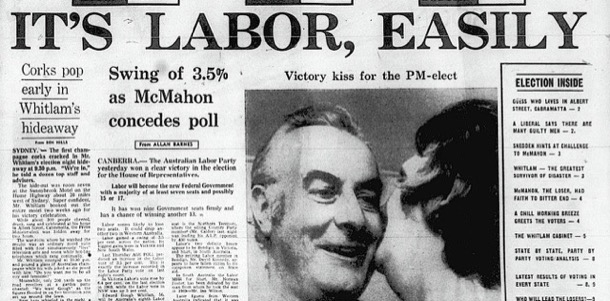
Change was inevitable and rapid: the troops were brought home from Vietnam; educational reforms were introduced, such as free University education; and Whitlam visited the feared red menace, Communist China. Inept financial management, scandal and the rate of change contributed to another landmark event now known as, The Dismissal. Whitlam was sacked by Kerr, then Governor General.
Gough Whitlam stood on the steps of Parliament House and declared “Well may we say ‘God save the Queen’, because nothing will save the Governor- General”:
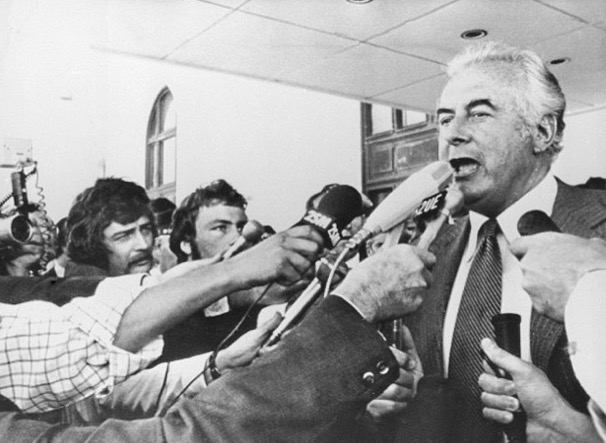
The Liberals returned to power under Malcolm Fraser. For Labour supporters like us, it was a bitter pill.
Waiting in the wings was Bob Hawke, who was both President of the ACTU and President of the Labour Party. The 1970s ended with Hawke deciding to enter politics. He was elected as the member for Wills in the 1980 election and Labour was once again in power. The 1980s in Australia was Hawke’s and Paul Keating’s decade. The reforms they ushered in changed the face of Australia: we thought for the better.
At the beginning of this tumultuous decade Margaret and I were fancy free. We moved out of home, sharing a house and living on our teaching studentships, as university education was not yet free. Margaret supplemented her income, paid $1 an hour, working at the first fast food outlet in Bourke Street. Working the late shift posed no danger as the Derby closed about 11 pm [very late] and Margaret was able to walk out to her Morris Minor parked right outside the restaurant. “It was always easy to park in Bourke Street, there were lots of parking spots,” remembers Margaret. It was such a different city then. We also embarked on our teaching careers. I began my teaching career in Sale and Margaret at Moe.
We had wonderful camping holidays, often in the Snowy Mountains; we saw interesting alternative movies at the Walhalla picture theatre in Richmond; we went to Sydney on the train to see Hair and saw nudity on stage; so risque! We listened to the Beatles, The Seekers, Cat Stevens and Peter Paul and Mary amongst others, on vinyl of course.
Margaret had begun teaching at Moe in 1973 and Jono and I, after a year overseas, both taught at Drouin High School, quite nearby. By the end of the decade, I had given up teaching and was at home at Gowar Avenue with a three year old Anna. Margaret was teaching at Croydon and was living in Gully Crescent with Ken.
Conclusion.
Marge and Alice finished their oral family history with their weddings and the end of the Second World War. It was neat: 1850-1950. It left off when they were both about thirty, settled into the business of raising children.
We are finishing our own overview at the corresponding stage. For us, this is 1980.
In the very last minute of the recording Alice, by herself for this part of the process, reflects on the speed of technological change that she and Marge had witnessed in their lifetime.
“But there’s a sort of corresponding suddenness in those new technologies and we tremble, as we think you do too, at what the outcome of all this is going to be for your children.
So looking back over that hundred years, we see this period of rapid, strong and significant development: a development that began gently enough, but now, in 1990, is rushed and killing and devastating.
And we look forward into the future for you and for our grandchildren as a time where perhaps you will learn what de-development is all about, and maybe the graph is going to go gently and firmly and calmly for you, into a period that is not as frantic as the one we’ve lived in.”
Strikingly and shockingly, the suddenness and the devastation she speaks of in 1990 has not diminished, but increased. And now, in 2018, as we watch our own grandchildren navigating their way into the world, we too tremble at what the outcome of “all this” will be.
I can hear sleigh bells
Christmas also marked the end of the school year and the beginning of holiday preparations. When we were very young, this involved a wonderful week staying with Pauline, Auntie Marge and Uncle George and later, the huge preparations for camping at Shoreham.
In our minds, Christmas preparations are linked with images of Mum sewing at the kitchen table; cotton ends; bits of material with paper patterns securely pinned to them; standing still to have hems pinned up; and the last minute wrapping of presents amongst the sewing detritus. Dad was packing the trailer and driving to Shoreham to set up the tent. Our parents must have been very busy, but we remember it as a very happy time. Margaret and I remember decorating the tree that was of course a pine tree.
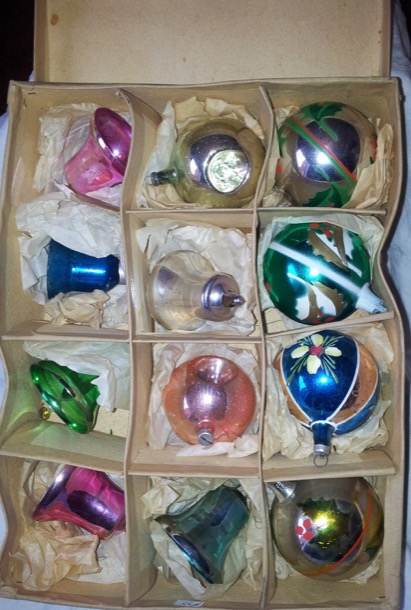
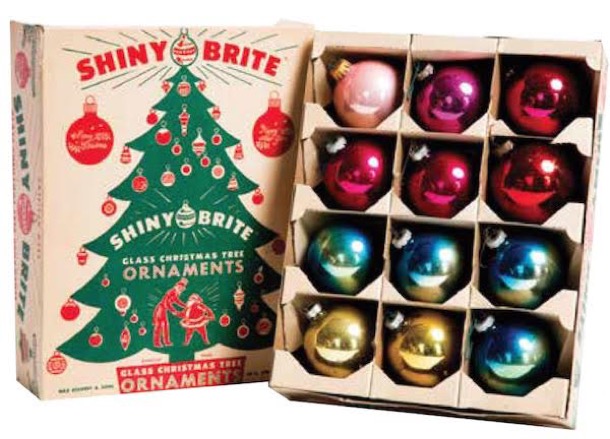
Christmas baubles were made of glass: fragile and expensive.
Choosing the tree was quite a process, as was the decorating, as trees were irregular shapes, not manicured as they are today.
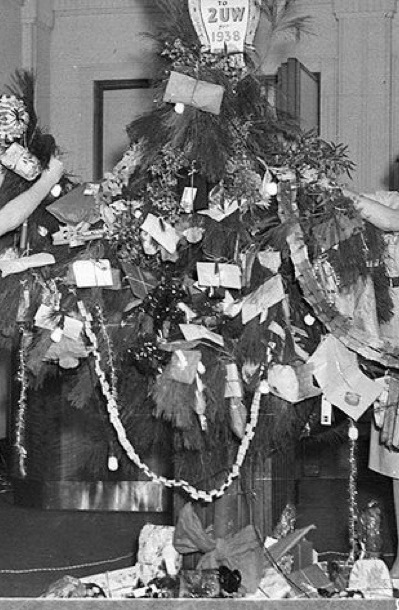
With Mum so busy sewing, it was also easy to slip unnoticed into the dark, tall built-in cupboard in their bedroom, where every year, on the second top shelf, mysterious exciting items in brown paper bags were stored. We remember doing quite a bit of poking and prodding, but never unwrapping and having a real good look. This would have to wait until Christmas morning.
Margaret and I also saved our pocket money for Christmas and bought presents for Aunts, Uncles, Great Aunts and Grandparents. We had wonderful fun in the Coles Emporium in Box Hill choosing the most wonderful pressies.
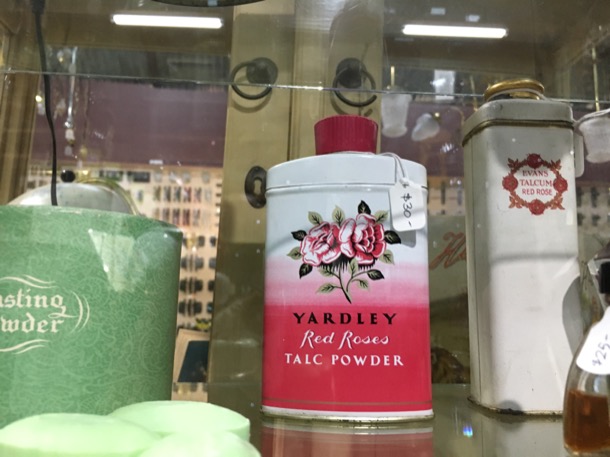
We choose strong smelling bath salts for Auntie Bert, delightful ornaments for Grandma Bourke, talcum powder for Auntie Tish and often disappointingly, hankies for the men, as they were very hard. The shops, even the department stores, were very, very different. A few Christmas decorations were evident, but shops generally were less cluttered, as there was little if any self service.
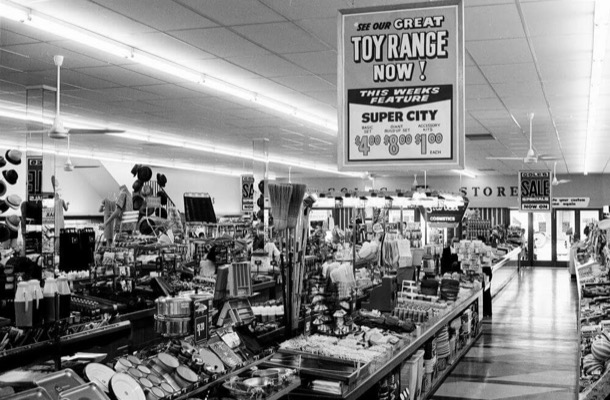
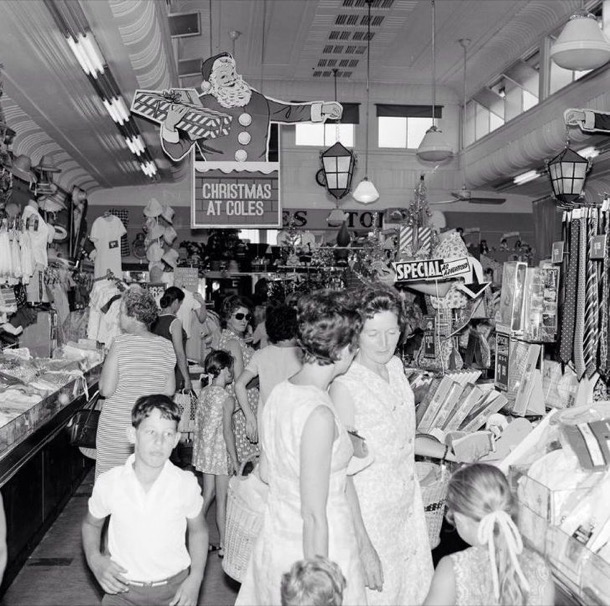
Once purchased and examined we wrapped the presents, made and wrote cards, and either posted or delivered them personally on Christmas Day. Sometimes we also made presents. One year it was calendars. We made them with a prepared calendar printed format and found interesting pictures to paste in for each month. Great fun!
Another delightful memory is of the Salvation Army brass bands who marched the suburban streets before Christmas, stopping every now and again to play three or four carols on a corner. If we were lucky they would stop nearby and we could peer out the window and see them in their uniforms playing the shiny brass instruments. It was always disappointing to hear the tread of feet in unison, as they marched away to the next spot.
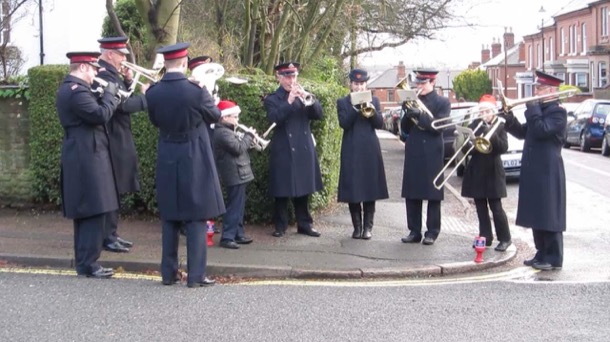
One such very hot night , Christmas Eve actually, the Salvation Army Band had moved on and apparentIy I convinced Margaret that we could hear sleigh bells. Margaret is not sure of it but I am!
I must have been about seven or eight when my suspicions about the identity of Father Christmas were confirmed, although I did still try to deny it and believe for a few years after that. We were staying in a little fibro holiday house in Rosebud with another family. The children were squashed in together in one room, on beds and mattresses on the floor. Late on Christmas Eve, I saw two figures, our parents, laden with crinkly, crunchy pillowcases, stumbling around the crowded room putting the ‘sacks’ on the respective beds. I remember telling Mum that I had seen them, and being cautioned to keep the knowledge to myself. I did!
Christmas Eve for us didn’t involve special preparations or rituals, other than the placing of a pillow slip on the end of each bed. We called these “sacks”. Sue remembers “hearing” Santa’s sleigh bells one year, and sometimes the Salvos street-corner concert would be on this special night, but generally the excitement began on waking.
As soon as I remembered the specialness of this particular morning, I would reach out my toes and touch the lumpy sack that now took up a good ideal of the bottom of the bed. The crinkle of wrapping paper and the solidity of its contents were thrilling. Sue and I shared a room, and the first one awake would wake the other. I guess we woke the two boys too, or perhaps they woke us up.
The ritual was then for each of us to carry our sacks up the hall to our parents’ room and have a mass unwrapping there, on their bed.
When Sue and I talked at length about our reminiscences of our childhood Christmases, one of us raised the question of what presents we remember. The answer is: hardly any. And yet we had very few toys, and only two occasions, Christmas and birthdays, when we got any.
“Stuff” was very expensive and in short supply when we were little. And clearly it was not terribly important in our lives. In our sacks there were one or two intriguing and fairly roughly wrapped parcels. There might be a toy, maybe some “special” clothes, a bag of mixed lollies, chocolate coins, eaten then and there, and little else. One year we were given hard cover bibles, (not very exciting). Later in the day, we presume there were presents from other family members, but we do not remember the actual items, just the excitement of unwrapping and the specialness of the occasion.
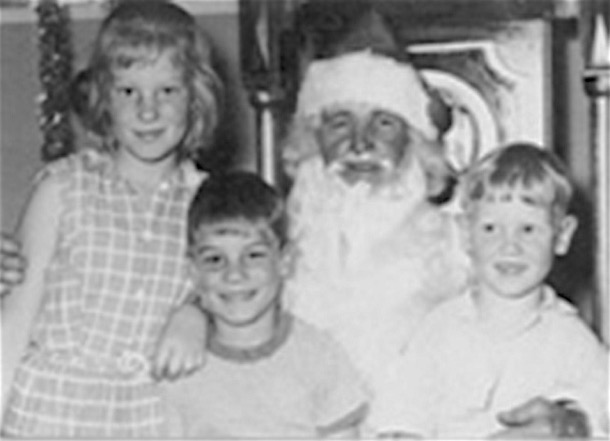
A rare Christmas picture, about 1962. Margaret, Ian and Chris.
One Christmas morning I do clearly remember, was when I woke to find a trail of wool from my sack leading to the large room at the back of the house we called the rumpus room. When I reached the end of it there was a card telling me that my new piano would be placed here. There was a corresponding card on my sack saying that the next year I would start having piano lessons. I had been asking whether I could learn the piano for some time, and, looking back from here, it seems as if I knew that this was going to be very significant in my life.
Other presents we remember which could just as easily have been birthday presents are:
The joint present to all of us of a swing. We got out there early on Christmas morning to use it, and made ourselves sick.
A pogo stick, another joint present.
Roller skates, which attached to our shoes. (Only the boys had bicycles, though we had tricycles when we were really little)
Dolls: mine was black and Sue’s caucasian.
Beach toys, such as bucket and spade, and, later, rubber blow up surf matts.
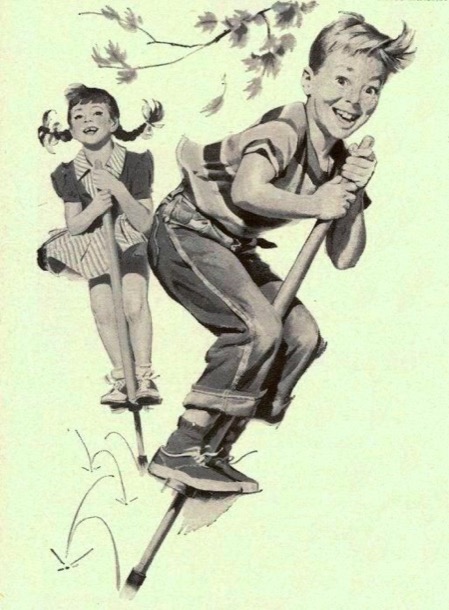
After we had strewn our parents’ bedroom with paper and eaten far too many lollies and chocolates, we had our usual breakfast of cereal, sugar and milk, put on our “best” dresses, socks and either our school shoes, or sandals (we only owned one pair of each) and headed off to church.
Sue remembers the Christmas church service as “a little less boring than usual”. For me, church was all about the music. The Christmas church service was overflowing with once-a-year-Christians and there was an air of excitement among all age groups.
After church there was a small, not very special lunch at home, and our mother doing last minute wrapping of presents for the afternoon. Then, I guess still wearing our best, (although some of us were quite prone to getting extremely dirty extremely quickly), we headed off for the afternoon at Grandma Bourke’s place.
It is about this part of Christmas Day that I have the clearest recollections.
We have written in another post (“Cut out of the Will” 15/6/2016) about our parents’ ”mixed marriage” and the disapproval with which their union was viewed.
Our mother called her mother in law “Mrs Bourke”, which was also her own name of course. We were aware of the tensions between them, and acutely aware of the warmth and familiarity between “Grandma Bourke” and her other grandchildren, who lived in the country and stayed with her every Christmas. They called her “Gannar”.
Presents were exchanged, as we sat in a circle. Interestingly, while we can remember giving presents to the grown ups, Grandma, Auntie Tish and Uncle Matt, we don’t remember any specifics of the presents we were given.
Mostly, for us, these visits were about the food. Afternoon tea, in the front room, stuffed full of dark furniture, was a grand affair. There was a huge silver teapot with its cosy, on a double decker tea trolley with cups and saucers. There was cake, slices and delicious savouries in huge quantities.
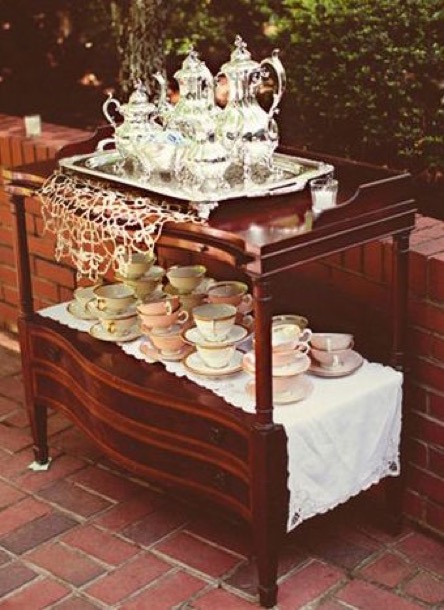
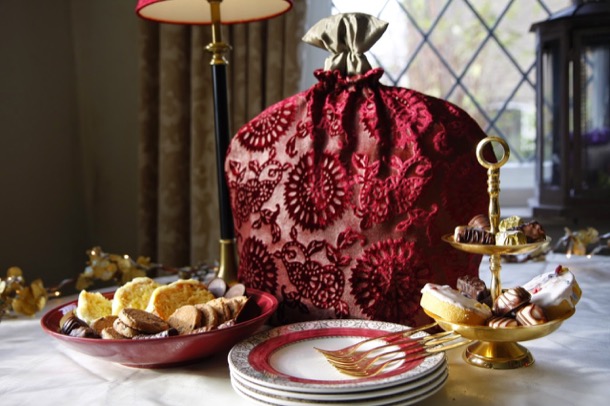
The grownups made conversation, about things that were not of our world: the races, farming the cattle property that Uncle Matt owned in the Western District, television, (Grandma Bourke was a huge fan of Graham Kennedy) and people we didn’t know.
Afterwards we children went outside under the weeping elm tree in the front yard, to play. It is only there I have any memory of interacting with our cousins, and not much there either. They were younger than us, and lived in a very different world. Occasionally our other cousins, Uncle Jack’s children, even less familiar, would come to visit on Christmas Day.
Some years, this was the end of Christmas for us. We went home for a light dinner and woke up to the rest of the holidays, which, in later years, meant six weeks camping at Shoreham.
Sometimes, though, we went on from Grandma Bourke’s in Hawthorn, to Beaumaris and our mother’s sister’s place. After the stiff, tense formality of Grandma Bourke’s, Auntie Marge’s warm welcome and the relaxation of playing with our familiar cousin Pauline, was a huge relief. We would have a wonderful meal and exchange presents lounging around the floor in the spacious living room. There was even a glass of wine (Penfolds Moselle in a flagon) with dinner for some of the adults. Alcoholic drinks did not feature in our parents’ lives.
We did not see our maternal grandparents on Christmas Day. We have no memory of them sharing anything Christmassy with us, even when they were living with us.
Most families have developed Christmas traditions. We remember Christmas as being confined to the day itself and the night before, and we suspect this might have been a common thing in those days. Our family did not entertain. There were never any parties, even family parties. When we look back on this time, and compare it to what kids these days experience as Christmas, it was pretty sparse. Sue and I, reflecting on our childhood Christmases, are aware of, and a bit surprised at, how warmly we remember them.
The Farm
About 1950, our mother’s aunt, Beat, and her husband Bill sold up their grocery store and their Balwyn house, took their youngest son out of school, and bought a dairy farm in the Dandenong Ranges at Nangana, near Cockatoo.
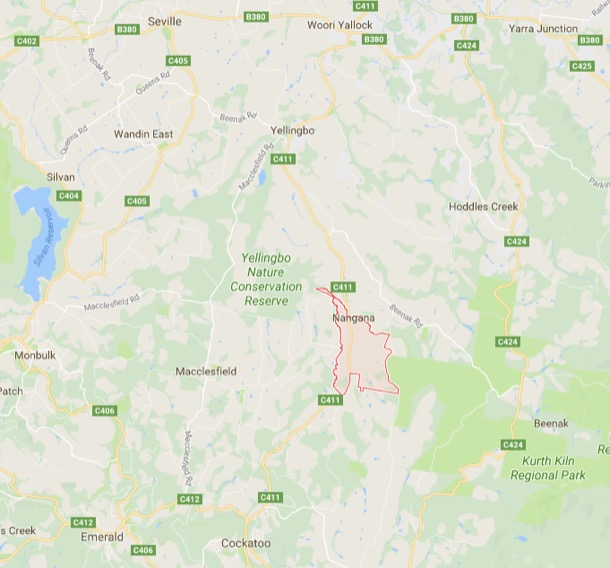
It was called “Sefton Park”, but it became “The Farm” to us, as we were growing up, and it was one of the very, very few places we visited socially.
By the time we were regularly visiting The Farm, the eldest son, Doug had married and moved out. He became a bus driver and spent his whole life living at Avonsleigh, near Emerald.
The next son, Rob, had married young, built another house on the property and had a child, Julie. Rob’s wife, Pat, died of breast cancer when Julie was still a baby, and Rob moved back to his family home. About that time our mother’s unmarried aunt, Bert, moved to The Farm, presumably to help her sister with this motherless baby.
So this rural property supported Beat and Bill, Rob and his daughter Julie, youngest son John, and Beat’s sister Bert.
Auntie Beat and Uncle Bill:
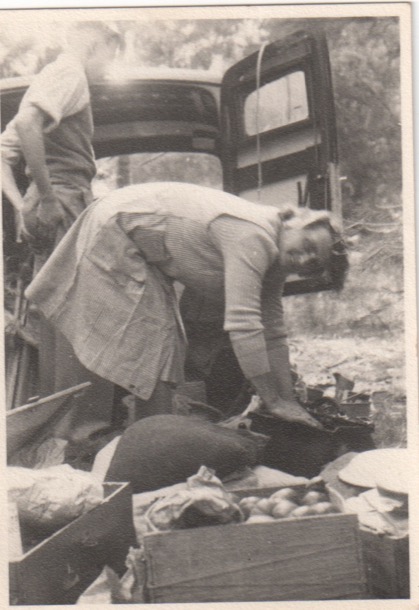
Down at the creek. From left to right (we think): Auntie Beat, Uncle Bill, Rob, Pat, Doug and a neighbour or visitor:
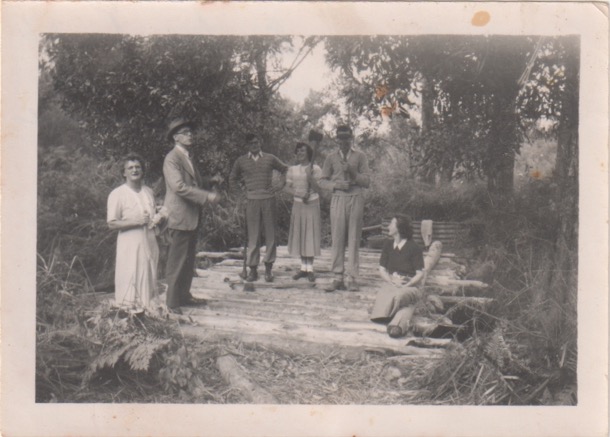
When I picture the farm and its people, in the 1950s, I see Auntie Beat and the men in layers of worn out hand knitted woollens: shapeless jumpers and cardigans, beanies, fingerless gloves, scarves. Auntie Beat wears heavy woollen skirts, thick stockings and socks. By the back door are a row of huge gumboots. Everywhere out side the house is mud, and away from the immediate house and garden, they all wear gumboots. In the dairy they wear heavy canvas coats or aprons. In the house, images of checked aprons, floury hands come to mind.
The journey to the farm with four children in the back seat, or perhaps Chris on Mum’s knee, always seemed a happy and interesting trip. It was about forty-seven kilometres from Box Hill, mostly through farmland, orchards and bush, and probably took us about an hour and a half.
The first highlight was Bennett’s Cottage in Burwood Road, on top of the hill just past Station Street. The crumbling walls of the wattle and daub hut, of one of the early white settlers, still stood in a paddock. We were told all about wattle and daub and the early settlers, and it remained in my mind into adulthood, as something to be marvelled at.
The next landmark was Tally Ho Farm and Boys' Home, on the corner of Springvale Road and Burwood Road. This marked the beginning of the country as the road shrunk to a narrow strip of bitumen that ran in a straight line between orchards and paddocks to the next hill at Vermont.
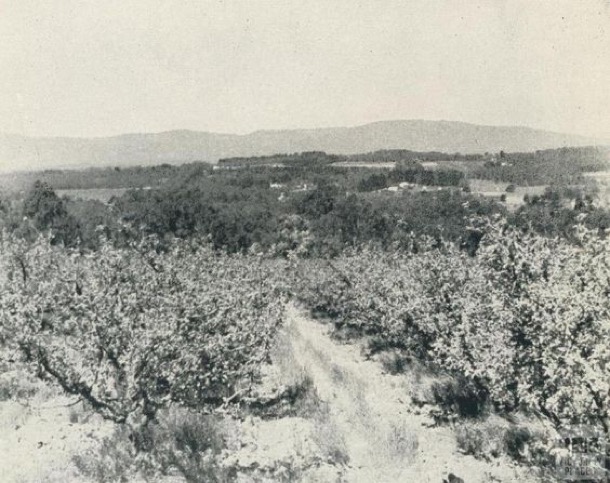
It then wound its way to Upper Ferntree Gully, then a small town at the base of the Dandenongs. Our route through the Dandenongs always took us through Belgrave, Selby and Menzies Creek to Emerald. From here there were several options but the routes we took are hazy. The only clear memory for both of us is of a very lovely narrow, undulating, dirt road through the bush.
Woori Yallock Road:
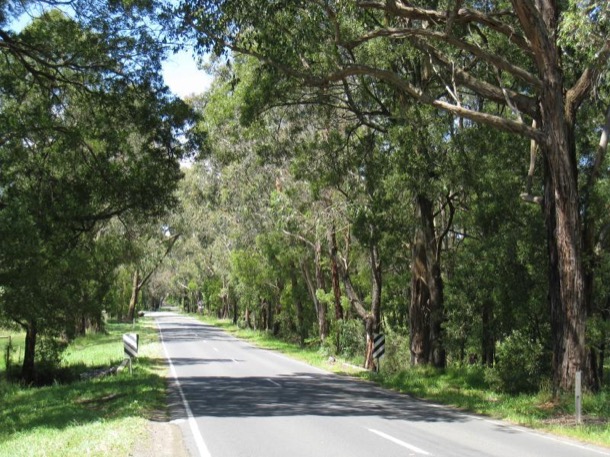
Sefton Park, as The Farm was named, spanned the road. The creek flats, which were on our left as we approached the farm, ran down to the Woori Yallock Creek that flowed alongside heavily timbered hills. These were the jewel in the crown and were known as ‘the flats’. At this point we could get a glimpse of the dairy and the roof of the house. White painted fences bordered the drive and framed the gateway of the cypress-lined drive to the house. The house, dairy and sheds all sat on a small hill probably an old levee bank of the creek, so the drive sloped gently up to the house.
As we piled out of the car, the farm dogs under the cherry plum strained at their chains and yapped, and Auntie Bert and Beat could be glimpsed walking up the garden path wiping their hands on their aprons. Greetings, hugs and queries about the journey over, we adjourned to the kitchen for afternoon tea. The house was entered from the back door that opened into a wide spacious hallway from which opened the bathroom and the hallway leading to Auntie Bert’s room and the boys bedrooms. The kitchen was occupied by a very large rectangular kitchen table where most of the food preparation and meals etc took place. At the far end under a window was the kitchen sink and in the chimney opposite the door was the wood stove.
The toilet was in an unpainted wooden building down a winding path from the house. The heavy wooden door was held shut with a small rectangular block of wood which turned through ninety degrees. It was dark, smelly and spidery inside.
On a wide, flat platform facing the door was a handmade heavy circular lid, topped with a wooden handle. The bench was too high for little girls to be able to properly lift the lid, so it was wriggled sideways to reveal a deep dark chasm.
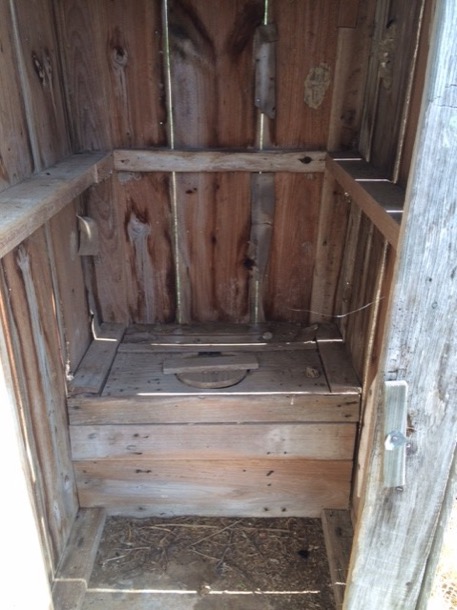
Mounting the platform and inching back so that one was seated over the fetid depths was an act of courage. I remember my legs stuck out straight in front.
Dismounting required wiggling forward and revealing once again the dark depths.
We had toilet paper in our much less terrifying outdoor dunny at home. Here, there were squares of scratchy newspaper on a string.
It was important to remember to replace the heavy circular lid, and then to wash our hands in the bathroom, just inside the farmhouse door, with a thick slab of yellow soap.
In winter of course the house was toasty warm. We all sat down to afternoon tea and ate scones with lashings of farm cream and all washed down with copious cups of tea and farm milk of course. After news was exchanged the ritual of the visit dairy to watch the milking and the pilgrimage to the pigs took place.
The main business of the farm was dairying. They had a herd of dairy cows: jerseys with huge liquid eyes. There were farm dogs, but the cows made their own way up to the dairy, in the late afternoon, following muddy, well trodden paths through the paddocks.
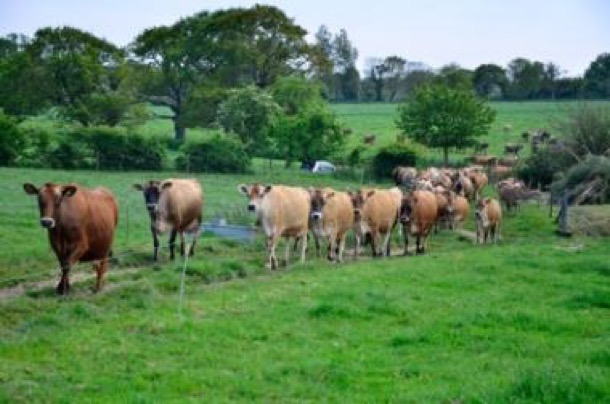
In turn they filed into the dairy, and into one of the six milking stalls, and the noisy diesel powered machine cranked up. The teats were washed with an old towel in a bucket of soapy water, a loose chain was put under the tail around the rump, and a set of shiny metal tubes was attached to each udder, with audible sucking sounds.
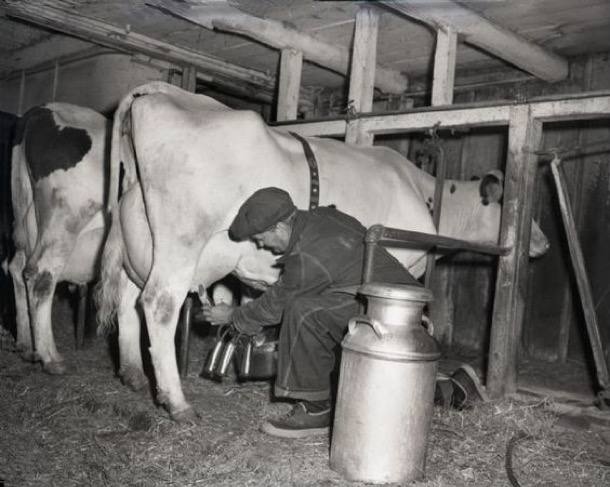
Each cow chewed contentedly on food in a trough at the back of the stall, as her udder, hidden by the tubes, pulsing rhythmically. Eventually she would finish, be set free and make her way out the back of the shed and another would plod in to take her place. I remember being very impressed by the way the cows seemed to know what to do.
The only glimpse of the milk itself was in a high up glass ball into which the milk pulsed as it was pumped into the room behind the dairy.
After the last cow had made her way back out to trek slowly down the hill, the clunking machine would be turned off and the clean up would begin.
Dairy farming involves the sad business of poddy calves, separated from their mothers and sold. We remember calves being fed from a bucket, but not the significance of this.
The dairy business sold cream, separated from the milk in a high tank. This used centrifugal force to collect the lighter cream and send it through a separate channel. We remember the whole milk being pumped into the tank along a wide, shallow chute.
The remaining skim milk was used on the farm to feed the pigs, Auntie Beat’s pride and joy.
The milk was mixed with some sort of grain to produce a mash, which was poured into troughs for the pigs.

Our visits always involved trekking down to the smelly pig sheds, where huge sows sloshed around or lay on their sides, in spacious, but muddy pens, surrounded by little pink and brown piglets. They also had access to the surrounding paddock: it was a far cry from modern factory pig farming, a cruel and hateful process. I can’t find in my memory any emotion connected to the actual pigs. Sue remembers cuddling the hand-reared orphan piglets in the kitchen by the slow combustion stove and the boar, who lived permanently in the muddy paddock.
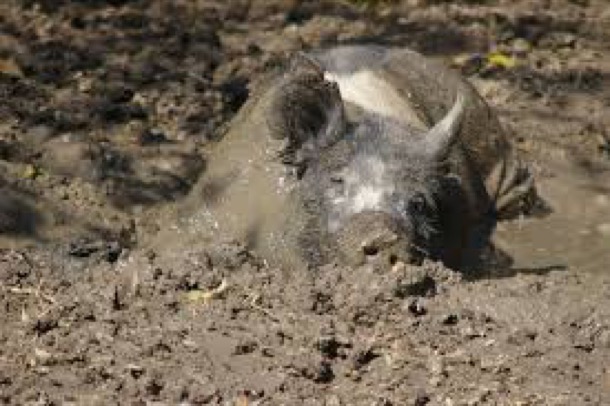
We’re not sure exactly how many pigs there were, but there were about four pens, where the sows and piglets were. Possibly they were only kept in those pens when they had their piglets, and roamed in the paddock the rest of the time.
I remember Auntie Beat lifting the massive lid on some huge ground level tanks to proudly reveal a seething mass of fat maggots, her clever way of dealing with the pig excrement.
I remember our mother’s wry amusement at Auntie Beat’s enthusiasm for the pigs. Apparently she had been an elegant and sophisticated lady in her earlier life. But this version of Auntie Beat, sloshing around the pigsty in her gumboots and several layers of shapeless cardigans was all we knew.
Mostly I remember the smell!
Quite often while the grown ups were chatting we were allowed to play in the hay shed with Julie. It was such fun! The hay shed was a traditional barn shape and covered in red painted galvanised iron, peeling. Most of the painted surfaces at the farm appeared to have peeling paint. It was open on one side, so it was light and airy and a child's paradise.
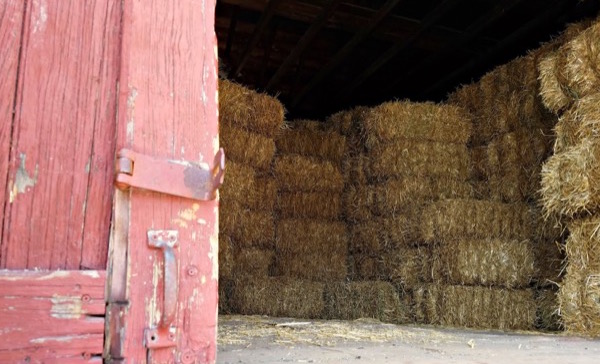
Rectangular bales of hay were stacked to the roof along the back and then in descending tiers. Chooks and cats played, scratched and slept in there too. We climbed all over the bales up to the roof, built cubbies and played.
There were a few variations to this routine that I can remember. Once we went shooting on the flats with Dad and I was allowed to have a shot at a rabbit and on a few occasions we went blackberrying. We also went for a big walk up the hill over the flats. An exciting ride down to the flats in the tractor trailer and over rickety home made wooden bridge, was followed by what seemed like a big walk up the wooded hill to the top. The best adventure though, was the day we visited during hay cutting season. I can still picture it. It was a lovely clear summer day. We watched the dry, cut grass baled up into the neat rectangular bales we were familiar with in the hay shed.
Towards evening, after the milking, it was time to leave. Laden with fresh cream, milk and flowers, we made our way up the garden path to the car. After many warm hugs, we began the journey home. Often it was dark by the time we passed Emerald and it was at this point in the journey that we sometimes sang. The Ash Grove features in my (Sue’s) memory, as it was hard for me to get to the high notes. The rounds we sang were also fun and a very good activity for tired children squashed into the back seat.
‘The Farm’ visits remain in our memories as fun, and an adventure in our simple lives. It was not only because we played in hay shed and joined in the farm activities, but because we were very fond of Auntie Beat, and particularly Auntie Bert.
‘The Farm’ is still a working property today. Rob remarried, another Pat while Bert and Beat were still alive and living in the old farm house.
Rob and Pat built a new house in the front paddock, had a family, and took over the working of the farm. Tragically, Rob was killed in a tractor accident when the children were still young. Pat stayed on, running the farm, looking after the children and working part time as a nurse.
We have visited infrequently since Bert’s and Beat’s deaths, briefly making contact again when Jono and Sue kept bees in the top paddock.
This photo was taken in 1983. In the background is the old farm house. Back row from left to right: pregnant Margaret, John, Jono and Alice, our mother.
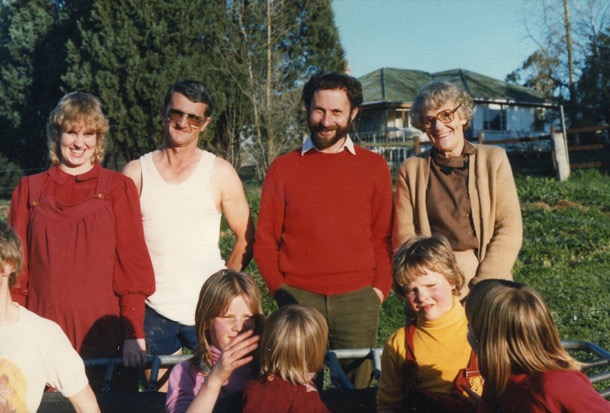
The farm is in good hands. Pat stopped the use of fertilisers in the paddocks and the dairy herd became a totally organic operation. Today one of Pat and Rob’s sons runs a very successful organic vegetable growing business, supplying top Melbourne restaurants with fresh produce. Beat and Bill would be pleased that today one of their great grandsons still works the farm.
Here is an aerial view of the farm today. The original farm buildings are in the bottom of the picture. Pat’s house is on the other side of the drive, closer to the road. Today it is surrounded with greenhouses.
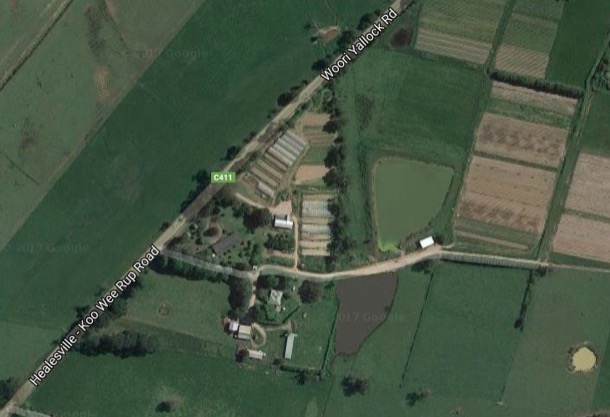
Meat and Three Vegs
Like many families, we were fairly poor as we were growing up. There were four children, only our father worked and "stuff" was very expensive. Food, however was relatively cheap, locally produced, fresh and plentiful by the time we Baby Boomers were on the scene. Our mother had been taught to cook by her mother, and the repertoire was pretty simple and limited in scope. Our mother was an ok cook. She knew not to boil the proverbial out of the cabbage, she used the limited available range of flavourings sensitively and she was open to the few new ideas that came her way.
As the fifties became the sixties, there was a fridge rather than an ice chest, the Womans' Weekly began to suggest new adventurous culinary ideas and there was a greater range of food in the shops.
In early 1964, when I was twelve and Sue was fifteen, our mother got sick. She had a condition called Thrombocytopenia, or low platelet count. Platelets allow blood to clot, so a person with not enough of them is in danger of haemorrhage. Eventually she had her spleen out and recovered. But for that year, she was tired all the time and generally felt terrible. Our youngest brother was only seven.
I remember a conversation early that year with a very serious Mum and Dad, just with me. The proposal they were putting to me was that I take on all the family cooking, to remove that burden from Mum.
I had been a kitchen assistant to her for a number of years. My memory of those years was that Sue cooked occasionally and always special, flamboyant things like interesting cakes, and that it was me who made the gravy and the custard, peeled the apples or rubbed the butter into the flour, often with my mother shutting the drawers in front of me, or wiping up my spills, complaining about how sloppy I was. (I still am!)
So, at age twelve, I became the family cook.
We hardly ever used actual recipes. Most meals were just cooked the way generations before had cooked. Even so, recipe swapping as a social activity was as prevalent then as it still is. Mum’s recipe book often had the name of the source: Joan’s biscuits, etc. Sometimes they were written on the back of an envelope or a scrap of paper and stuck in. There were also torn out recipes from magazines and newspapers. And there was also the PWMU cookbook.
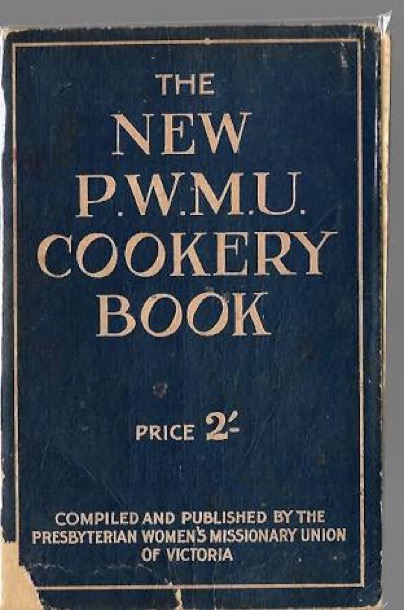
We were a family of six. We had an evening meal of meat and vegetables and dessert.
Three meals a day and morning tea were provided. Nothing was drunk with any of our meals, not even water. There would have been a cup of tea afterwards, but not at the table. After school and other hungry times we had unlimited access to bread and butter, and fruit. (almost exclusively apples and oranges). I remember mum saying, “fill up on bread”.
Evening meals
We always had meat, served mostly with potato, but sometimes white rice. Also on the plate were two or three other seasonal veggies. These included cauliflower with white sauce; lightly cooked shredded cabbage; diagonally cut string beans; fresh peas; boiled silver beet; carrots cut in rings; mashed pumpkin; brussel sprouts, cooked whole; carrot and parsnip together mashed with butter; marrow cut in rings, boiled and served with lots of butter, salt and pepper; leeks in white sauce; broad beans, included the pods. In the summer we often had a salad made from iceberg lettuce and tomato and some of: green capsicum, celery, peeled cucumber, and, later on, the very glamorous addition of chopped apple and orange. The salad was liberally dressed with home made salad dressing. This was made by beating up a tin of sweetened condensed milk with mustard, malt vinegar and salt. We also had pickled beetroot.

Here is a fairly comprehensive list of the “meat” part of the meal:
Roast leg of lamb, roasted with potato, pumpkin, parsnip and onion. This was served with a green vegetable cooked separately; gravy, made in the roasting pan from thickened meat juices; and freshly made mint sauce. Dad was always the one to carve, but not ceremoniously at the dinner table, rather, at the kitchen bench and the portions were doled out from there.
Roast beef, “corner cut”, roasted with the same vegetables.
The same roast meats, served as cold meat or fritters, with chutney.
Grilled loin chops, two each.
Corned beef, boiled. Warm with cabbage and potato, then as cold meat on subsequent nights.
Four quarter lamb chops, stewed with onion, carrot and peas. Served with mashed potato.
“Rice meat” - chopped veal, stewed with onion, stirred into plain white rice, peas, parsley and lots of pepper.
Smoked cod, boiled.
Steak, corner cut sliced about a centimetre thick, fried in the frypan, until it was grey inside and hard on the outside, served with worcestershire sauce.
Lamb shanks stewed with carrots and onions.
Gravy beef (stewing beef) stew. Served with mashed potato and other vegetables.
“Mr Wilkinson dinner” - boiled white rice, topped with minced steak cooked with mushroom soup, and shredded, lightly cooked cabbage. (This meal was introduced to us by the eponymous Mr Wilkinson while the two families were camping at Shoreham. On a two burner stove, it fed four adults and ten children.) (I still use this as a meal, although these days, I use a tin of lentils and fresh mushrooms.)
Spaghetti served with meat sauce (fried onion, tinned tomato and minced steak, thickened)
Ham steak and pineapple. (both fried in dripping)
Sausage meat rissoles, fried in dripping and served with mashed potato and “tomato sauce gravy”. The gravy was made by browning a big spoon of flour in the frying pan, then adding tomato sauce and water.
Pan fried fish. This was usually barracuda, bought at Vic market, served with chips bought from the Wattle Park fish and chip shop.
“Chow Mein”. This was made in the frypan: minced steak, dried chicken noodle soup, pineapple pieces, green pepper, shredded cabbage. Served with boiled white rice.
Meatballs made of minced steak flavoured with dried soup mix and cooked in a sauce made of tomato soup and chopped green pepper and tinned pineapple. Served with boiled white rice.
Lambs fry, (liver) fried with tomato sauce gravy, served with mashed potato
Camp pie (like spam) and tinned real ham - almost exclusively when we were camping.
Mum’s father, over the years when I was the family cook, lived alone in the flat the the back of our house. He also had to be catered for, and he had very specific tastes. He shared the dessert I had made, but for his main course, he insisted on his own menu. He would have on alternate nights, two grilled chops or stewed lamb shanks. And he didn’t even have the same vegetables as the rest of the family. He only had potato, carrots and beans. This meal was delivered to him before the rest of the family ate. I remember Mum wryly saying that he thought he was very easy to feed, because he had such simple tastes. Occasionally there was a complaint, delivered indirectly to me via Mum. Too much salt on the grilled chops, is one I remember.
Desserts
Dessert was a staple. We had it every single night. It nearly always had some fruit component and was served with home made ice cream (evaporated milk, sugar, vanilla, eggs), custard (made with custard powder and egg), sweet white sauce or “top of milk”, from the top of the unhomogenised milk, a bit like thin cream.
Apple sponge
Apple crumble
Baked whole apples, sometimes covered with pastry.
Jam roll
Bread and butter pudding
Steamed pudding - plain with jam in the bottom, served with custard, or butterscotch made with golden syrup, served with sweetened white sauce.
Tinned fruit
White rice with sugar sprinkled over it served with milk
Rice pudding
Jelly with fruit set into it
Golden syrup dumplings
Apple snow
Sago, cooked in a white sauce (looked like frogs’ eggs)
Junket, like a baked custard, with nutmeg sprinkled on the top.
Baked fruit, or sometimes tinned fruit, with a crunchy topping made with Weeties, sugar and dotted with butter
Banana custard
Television pudding. this was a self saucing chocolate pudding. It was Dad’s mother’s recipe, always called this, even though long before had a television.
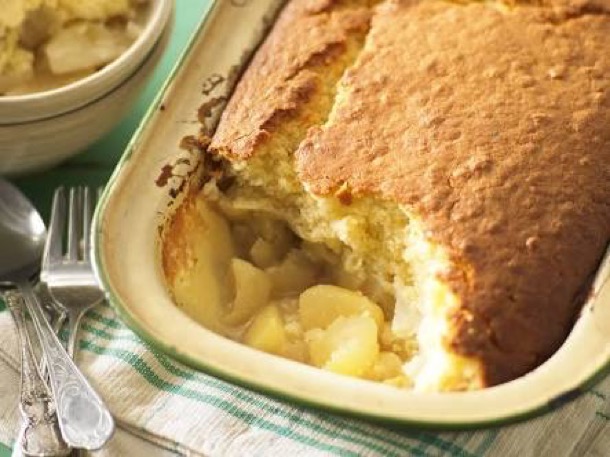
Apple Sponge
Breakfast
Weeties or Cornflakes with sugar and milk
Winter: porridge, with creamed oats (Creamota), sprinkled with brown sugar or golden syrup and milk.
Toast only on weekends or holidays
School lunches
Mum would get up early and stand at the bench in the corner and make lunches for the four kids and Dad, who was a teacher. She used the white bread that had been delivered the day before. She would slice the bread (at least fifteen slices). The butter was softened under the grill. We each had a round of savoury filling, cut into four little squares, and half a round of something else, often sweet. Fillings for the big one were always protein based, such as cold meat and chutney, cheese and chutney, egg and lettuce, baked beans, cheese and sliced green capsicum; and the smaller one was honey, jam, peanut butter and chopped dates, sultanas etc.
There was always homemade cake or a biscuit and either an apple or an orange. Cakes were boiled fruit cake, spice cake, queen cakes (like cup cakes), orange cake, and the biscuits we remember are anzacs, coconut biscuits and custard powder biscuits.
The food was wrapped in greaseproof paper and all put in a brown paper bag.
We didn’t take drinks to school. The school had drinking taps, and we always had a third of a pint of milk at morning play, provided by the government. In summer it was warmed and occasionally even curdled by the sun. We coveted, but didn’t have ourselves, “flavoured straws”, where one sucked the milk through straws coated on the inside with chocolate or strawberry flavouring.
Very, very occasionally there was a lunch order. I remember big mugs of tomato soup, and hot pies.
Weekend Lunches
Scrambled eggs on thick slabs of buttered toast
Poached eggs (two each) also on buttered toast
Fried eggs, cooked in the frypan, so they came out square
“Hamlet”. This was eggs and milk beaten up together and fried in butter in the frypan. It was served as thick pale slabs, served often with tomato and onion sauce.
“Spaghetti muck”. Fried bacon bits and onion into which was stirred eggs, cooked spaghetti and tomato sauce. (Ian’s favourite)
Baked beans on toast
Large boiled frankfurts, sometimes served with sauerkraut which we bought from the Box Hill delicatessen.
Tinned tuna in white sauce, served on toast.
Toasted cheese, slightly blackened blisters of processed cheese on big slabs of white toast.
Treats
Interestingly, desserts and homemade cakes and biscuits were not seen as treats, just part of our normal diet.
- Cocoa, made with whole milk with lots of sugar
- Broken biscuits from the delicatessen - sweet or savoury
- Pancakes with sugar and fresh lemon juice
- Mixed cakes bought from The Golden Rule (the milk bar at Wattle Park) These were very carefully cut into smaller pieces and meticulously shared out. They included vanilla slices, laminations, neenish tarts, small bakewell tarts, apple slices, jam tarts, lemon tarts
- Homemade toffee. (made with brown sugar, butter and sweetened condensed milk.)
- Lollies. This involved walking to the shop and choosing. Lollies were sold as “so many a penny, or halfpenny”. But there were also larger ones like choo choo bars, crunchy bars, poly waffles, cherry ripes, packets of fags, musk sticks, chocolate covered caramels, liquorice straps etc.
- Icy poles and ice creams. Water icy poles were common. Ice creams mostly meant a scoop in a wafer cone. There were three flavours: vanilla, chocolate and strawberry. (Incidentally I, Margaret, was promised six ice creams if I stopped biting my fingernails. I did, and I ate them all, one after the other!)
- Birthdays - the family dinner as per usual and then a home made sponge cake, filled with cream with white icing on top, candles and our personal flower. This was whatever was in season on our birthday. Sue’s (August) was hellebores, mine (September) was crab apple blossom.
- Take away dinner. Some time during our early childhood, a Box Hill Chinese restaurant began selling food as take away. Prior to that, at least in our world, there had only been Fish and Chip shops, (and we only ever got chips and potato cakes), bakery products like pies and sandwiches and a rare lunch time visit to Ball and Welsh cafeteria with Auntie Marge. So, occasionally, we would take two or three saucepans (no take away containers then) to the Chinese Restaurant and bring home exotic wonders like Chicken and Almonds, Sweet and Sour Battered Pork, Beef and Green Pepper and Special Fried Rice.
- When we were camping, there were other treats: cordial, made up from little bottles of concentrate and huge amounts of sugar; toast (we had sliced Home Pride bread there) with butter and vegemite or marmalade for breakfast. Drumstick ice creams as a reward for the long walk to the store. Then, on the long way home in the car, at the end of at least six weeks’ camping, there would be the bag of lollies bought with all the saved and hoarded pocket money. I remember the difficult decision - quality or quantity? I was disappointed the year I chose several packets of lifesavers, but, equally upset that a few special lollies disappeared far too soon.
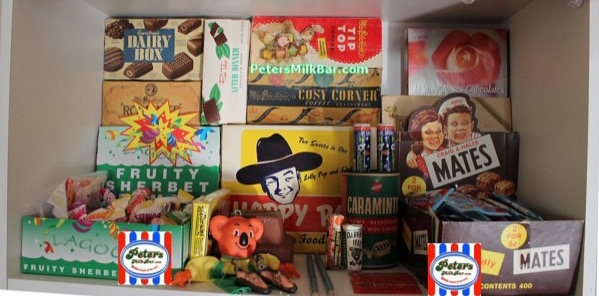
Table manners
We ate dinner either at the kitchen table or around the big blackwood table that had been our grandmother’s. There was a table cloth and cloth serviettes in serviette rings, and the table was properly set. Dad and the boys had to wear a shirt to the table, even if it was very hot.
At least for a while, Grace was said. ‘For what we are about to receive may the Lord make us truly grateful, Amen.” If Grace wasn’t said, then the signal to begin was when the last person sat down at the table.
We had to hold our knife and fork correctly and chew with our mouths shut. I remember being admonished, “Don’t enjoy your food so much, Margaret.”
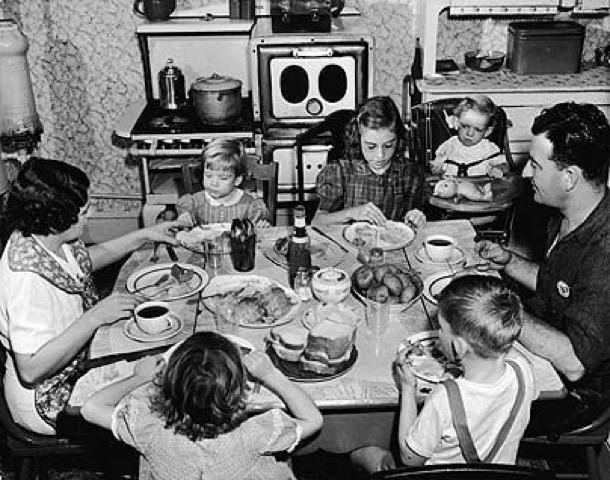
When we were on holidays, these strictures were lifted. We remember having rowdy toast eating competitions, and Dad being so disgusted that he made us eat our toast the way he had had to at boarding school. This involved putting the butter and jam on the side of the plate and cutting and spreading bite sized pieces of toast. It slowed us down, but the bonus was that you could eat much more butter that way!
Weekend lunches were also very informal. Later, when we had television, some of us ate lunch in the lounge with the TV on. We remember World Championship Wrestling being one of these lunchtime offerings, with our young brothers wrestling on the floor in front of it. Although we went to church every Sunday, lunch was still very informal.
Rubbish
We had one smallish galvanised iron rubbish bin, emptied weekly. There were never any left overs, but food scraps, such as peelings and well sucked bones were wrapped in newspaper and placed directly into the bin. There was very little packaging in those days.

Here is a drawing of the kitchen all this took place in:
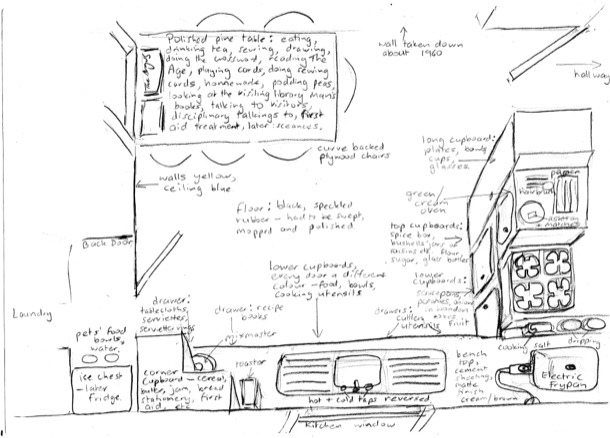
Shopping
All of this food cooked for this family of six plus one needed to be bought of course. Weekly shopping was the norm, as we only had a small fridge. The freezer compartment was only big enough for two trays of homemade ice-cream and ice blocks. A weekly shop for meat, fruit vegetables and a few groceries was all done without a car. This was the era of the local shopping strip with its butcher, greengrocer, grocer, newsagent and chemist. The Wattle Park shops were a little bigger, maybe because they were at a tram terminus. We also had two chemists a bank, a Mensland, that also sold our school uniforms, a wool and haberdashery shop, a barber, hairdresser, two milk-bars, and a cake shop. There was also a mysterious large shop crammed to the ceiling with all sorts of fabric, cottons and general clothing. Mr. Kline, a round bald headed man with a strong European accent owned and served in the shop . He was the only out of the ordinary person in this very suburban, white, Anglo Saxon world.

Mum walked down to the shops, probably on Fridays, shopping list in hand, and with children if they were still at home and not yet at school. Groceries, green groceries and the meat of course from the butchers were all left at the small supermarket for Dad to collect in the car after school. We cannot remember how the shopping got home in the very early days before the supermarket was built and when Dad rode his bike to work.
What would have been on the Shopping List:
NOT Bread and Milk as it was delivered daily
Tea [leaves of course]
White Sugar
White Flour - Plain and Self Raising
Cornflour
Custard powder
Icing Sugar
Vanilla
Cocoa
Coconut
Sultanas/Raisins/Currants
Dates
Jam in Tins [Plum, Raspberry, Marmalade}
Golden Syrup
Vegemite
Saxa Table Salt
Baking Powder
Bi Carb
Cinnamon
Nutmeg
Mixed Spice
Pepper
Tomato Sauce /Worcestershire Sauce
Keens Mustard Powder
Sweetened Condensed Milk
Tinned fruit
Tinned pineapple
Tomato soup
Baked beans
Tinned tomatoes
Tinned tuna
Chicken Noodle Soup
Powdered Mushroom Soup
White rice
Spaghetti
Malt vinegar
Butter
Kraft Cheese
Uneeda or Thin Captain Biscuits
Weeties / Cornflakes
Creamota Porridge
Rolled Oats
Rinso
Pine-o-clean
White Lily Paste
Jex
Velvet Soap
Toothpaste
Mum Deodorant [a white shiny paste]
Kiwi Shoe Polish
Dog and cat food
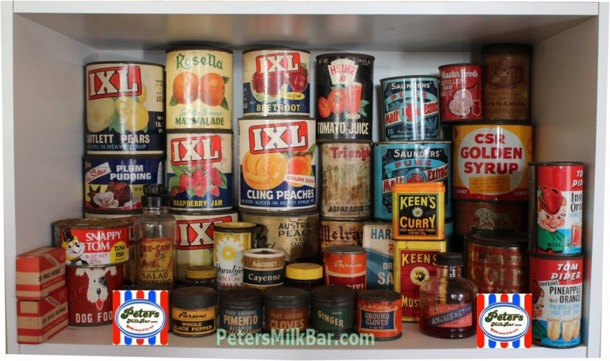
Everything we bought and ate was made in Australia.
Green Groceries consisted of the basics and was governed by seasonal availability. For instance we did not have tomatoes or bananas all year round and never had cauliflower in summer. Many of the fruits and vegetables that feature in our shopping today were unheard of, eg. eggplant, zucchini, avocado, asparagus, snow peas, all the asian greens, sweet potatoes, different varieties of potatoes, Spanish onions, fresh chilli, garlic or red and yellow peppers. As there was less variety, the shop was much smaller. Another difference was that you were served and did not touch the produce. No fruit or vegetables were wrapped or packaged. Your shopping was put into brown paper bags, wrapped in newspaper or just put into a box.
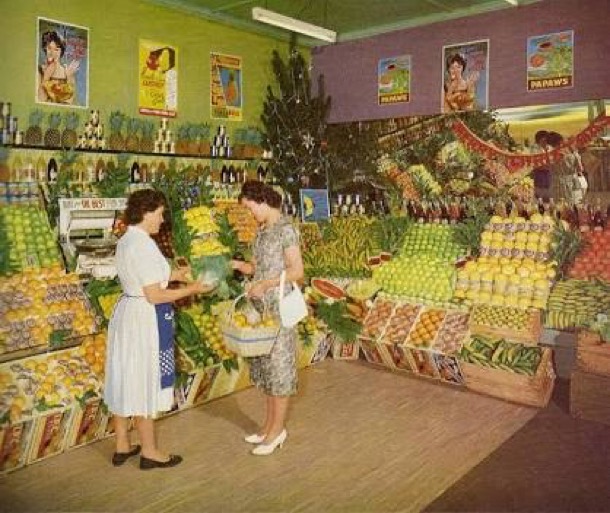
Meat was also very basic and varied little week to week. Once again the variety was not there, the bulk of the offerings being beef and lamb. The order would have been mince, lamb chops, gravy beef, a roast [that did 3 meals] and maybe lambs fry, sausage meat, shanks or smoked cod. Once again you were served and the goods were wrapped in shiny white paper and then newspaper.
Before the Supermarket opened in the mid fifties, other items were bought at the grocer. In the mid fifties the Foodland Supermarket opened introducing self service and the phenomenon of the checkout. There was now more processed food available, and we bought such items as Weetbix, dry and sweet biscuits in packets, baked beans, tinned fruit, Camp Pie and Kraft cheese. As the entire Foodland Supermarket consisted of two narrow shop length aisles the array was not vast and we only purchased enough to fit into three or four big stand up brown paper bags.
For a number of years when we were a little older, the weekly shop was done on Saturday morning at the Victoria Market. This was fruit and veg, meat from the big meat hall with the carcasses hanging from hooks on rails and fish from the fish hall.
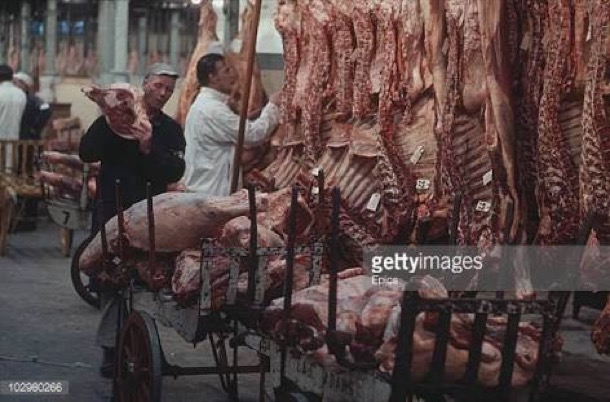
Besides going home with an abundance of food, obviously very cheap, the attraction was doughnuts and, believe it or not, the doughnut vans are still exactly the same, as is the smell freshly cooked doughnuts wafting in the air. The other special treat was a sweets stall: not the usual run of the mill lollies but big yummy humbugs and aniseed blocks and soft fat delicious liquorice. Best of all were the honeycomb blocks covered in thick good chocolate. Umm I can still taste it. It looked homemade and it all went home in crunchy brown paper bags.
The Victoria Market was an exotic and interesting diversion from weekly local shopping, but for most of our childhood, the weekly shop was done at the Wattle Park shops.
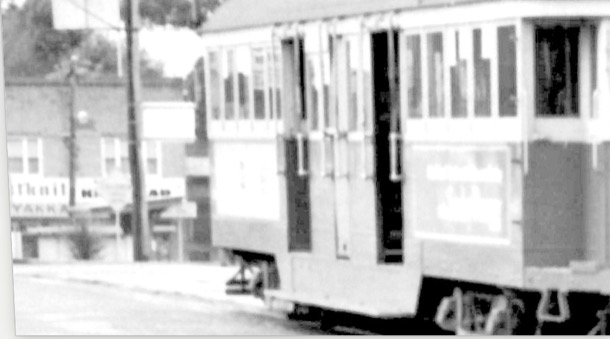
Wattle park shops from the tram terminus.
It must be remembered that shops were open on week days nine to five, and until midday on Saturday. After that everything shut down. Bread was in another category altogether, as no bread was baked on the weekends, not even Saturday.
An exciting diversion in our childhood, for maybe a year or so, was the advent of illegal bread baked on Sunday. Rebel bakers, defying the law, baked bread on Sunday and made it available to the public. In the days when few homes had phones, let alone mobiles and the Internet, word spread the old fashioned way: gossip. This initiative proved very popular, so much so that the trip to buy the bread needed to be made early in the morning or supplies ran out. We made the ‘long’ trip out to Blackburn, after Church to purchase our illegal bread. A few prosecutions were made for illegal baking and trading but the number of bakers increased, to fill the demand. Finally, the Government of the day gave in and repealed Section 105 of the Labour and Industry Act.
The Age in November 1958 reported on the heated discussions in Parliament, as rows over whether to allow bread to be baked legally intensified.
THE AGE, WEDNESDAY, NOVEMBER 19, 1958 18 Unhygienic Bread Feared. …Drivers. Labor claimed In the Legislative Assembly last night that the lifting of restrictions on one-man bakers would create an unhygienic state in the bread industry. They were strongly opposed to the Government's repeal of Section 105 of the Labor and Industry Act.
Today there is such an assortment of food and ingredients available for purchase everyday that it is strange to think of a world where a zucchini was an exotic vegetable, consumption of cheese was not an art form and chicken was from the old worn out layer from the chook pen, not bought from a shop. Coffee was Nescafe Instant and only the Italians in Carlton knew what an Espresso or a Cappuccino was. Today words like macrobiotic, whole grain, organic, grass fed and bio dynamic are used as slogans to persuade us to buy. We had very basic food made from fresh ingredients, the cheese may have been Kraft “soap” cheese and the bread white, but the meat was grass fed and the fruit and vegetables fresh and plentiful.
Primary School Teachers 1950s
MARGARET
Like everyone else I started school in “Bubs”, aged five. The baby boom was in full swing and there must have been an imbalance of kids between my year and the next because one day, out of the blue, the woman in charge of the little kids, (called the “Head Mistress” *snigger*) came into our class and called out half a dozen names including mine. We duly stood and followed her into the class next door: Miss Meadow’s Grade One, making a total of 47 little baby boomers in her class. I had already been through the joys of John and Betty, so the move might have been mid year. I loved Miss Meadows, it can’t have been too traumatic.
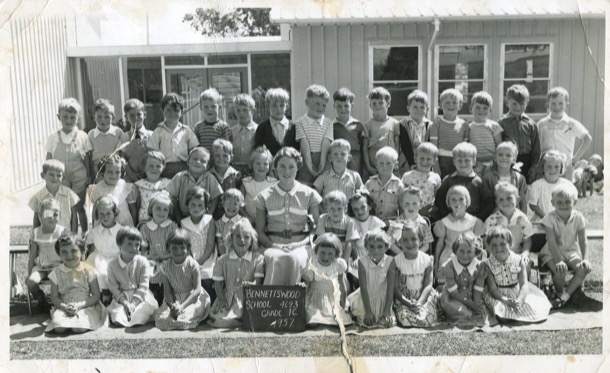
My only other specific memory from those very early years was the Junior Mistress with a dressed up visitor accosting me in the playground and asking me what half of eleven was. I was very aware that I was part of a little show to impress the lady, and I remember consciously acting out the part of the clever but deferential little student.
In Grade four, we had monthly tests, probably in Reading, Composition, Spelling, Arithmetic, Writing, maybe some sort of social studies…. a variety of things. The results were compiled into a single numerical score. Each month the class’s seating would be rearranged into numerical order according to these results. The top two sat in the back desk in the furthest left hand row, the bottom two in the front desk in the furthest right hand row. There were four of us who vied each month for that top spot. So I shared a desk with Gordon, Dianne or Wayne. And when Mr Symes left the room, he left me, Gordon, Dianne or Wayne in charge. It was Mr Symes who told me that I needed to hold my pen properly for writing, or else I wouldn’t be able to take notes properly at university… no pressure Margaret! I remember him as kindly and firm but not cruel.
Mr Woods on the other hand, my Grade three teacher, was scarily unpredictable. He had been a soldier and probably had terrible PTSD. He used the strap liberally and publicly against girls and boys. Once a couple of boys got the giggles during the Last Post bugle call at an Anzac Day assembly. As we filed back into class we all knew the signs… someone was in for it. He stood the boys up in the front of the class and whacked the strap across their bare legs, punctuating the whacks with a diatribe, the content of which I don’t remember.
At other times I remember him offering kids the choice of a hundred words or the strap and randomly dishing out the punishment they chose, or the one they didn’t choose. You never knew which would happen. I have no memory of his teaching or my learning… only the terrifying punishments and unpredictable outbursts.
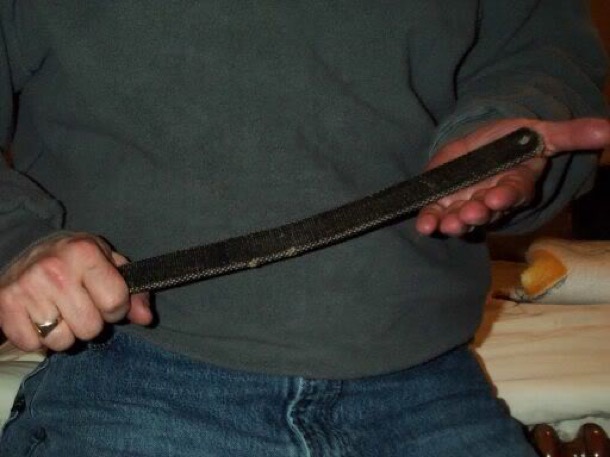
My Grade five teacher was Mr O’Brien, an older man: competent, kind, musical, enthusiastic. The weekly spelling list became cryptic puzzles for those who finished their work ahead of the rest. There was a piano in the corner of the room and we sang often. He was a keen gardener and the whole class made geranium cuttings in the front garden. I often missed out on these extra activities because I was the designated “helper” for Joseph. Joseph was so old that he shaved. He had been in grade five for some time. I think this might have been his last year at school. I helped him with his rudimentary literacy and numeracy skills while the other kids were learning about sirex wasps or coal gas or the Spanish Armada.
Mr O’Brien organised the “school concert” and ran the choir. Kids were invited to audition for the concert and Margaret Lees and I prepared a special duet. We sang an English folk song about a cuckoo, as a round. I remember practising round the side of the building. We began with “Oh look, there’s a cuckoo”, “I love cuckoos”… leading ever so seamlessly into the song. But how to finish? Ah of course…. another friend called from “off stage” and we had to run off home for tea. We weren’t asked to repeat our performance at the concert.
My memories of Mr Stafford’s Grade Six are less clearly defined than Sue’s who had him for two years. There was a Speech Error jar on the shelf above the blackboard. If a child said “I seen” or “he done”, their name was put on a slip of paper in the jar. I don’t remember the sanction for this if there was one, as it never involved me, needless to say.
SUE
I have few memories of my Box Hill South Primary teachers. I vividly remember starting Prep or Bubs as it was known then. I remember learning to write with a big thick grey lead pencil, reading from John and Betty , the innumerable flash cards beginning with words, phrases and then sentences all based on John and Betty.
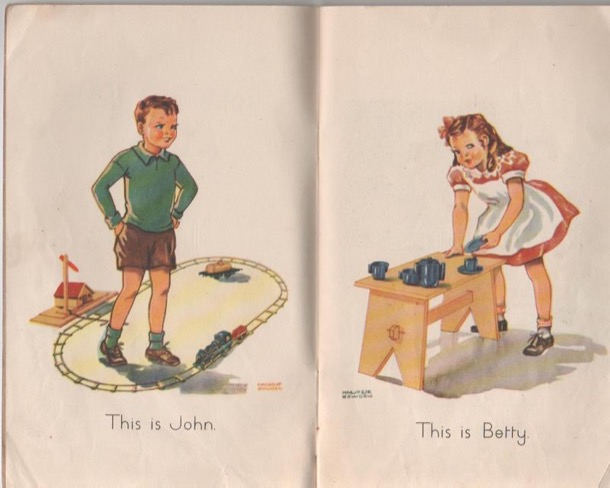
Of Grade One I only have memories of the large picture hats the Head Mistress wore. I remember it as an everyday occurrence and that they were covered in large flowers. I cant imagine that this was so, maybe she wore one once. As her office was right next to our room we would have seen Miss Shattock often as she went about her important duties.
Grade Two, on the other hand, I do remember but, again, not the teacher. The room was upstairs in the old section of the school, each room had a large fireplace in the corner attended to by the boys who, of course, were the wood monitors. The boys feature in my memories of Grade Two, as this was the year I was dared to run into the boys toilet, which I did. A flash in and out, adrenaline pumping, I cannot even remember what I saw in that mysterious place. Another activity I knew occurred on the red brick wall of the boys’ toilet was a peeing competition, never witnessed but obviously talked about. Miss Shattock appeared in my Grade Two classroom the day of my great shame and indignation. I was sitting up the back and was playing a game with the girl over the aisle. We would drop something, both bend down to pick it up and giggle and talk. Down the long aisle (the classes were huge) swept Miss Shattock and marched me to the front of the class to hold out my hand for a smack with the ruler. I was then instructed to stand in the corner until lunchtime. Oh the indignation, outrage and humiliation! At lunchtime surrounded by a bevy of sympathetic girls, I announced to the world that I was going home. I didn't of course and I probably didn't play that little game again either!
In Grade Three I moved to Bennettswood Primary the year Margaret started school too. Miss Burlock, my Grade Three teacher, was a tall redhead. She wore black straight skirts that she teamed with pale stockings through which we glimpsed her freckled legs. She probably had nice legs and showed them off with very high heels. I didn't like her much, especially as she made me feel embarrassed when spelling potatoes out loud to the whole class. I pronounced it pot a toes, spelt it correctly, but was sharply corrected for my mispronunciation.
Grade Four and I loved Mr Norman. We moved across the quadrangle and I had a wonderful time in his class. He was an interesting teacher who frequently read aloud to us. He did this very well, obviously enjoying it. I do remember having a sore stomach from so much laughing when he read us the Henry Lawson story, The Loaded Dog. We also did lots of projects on a wide variety of topics.
I loved school but I particularly loved Mr Stafford’s Grade 5 and 6 classes. He must have been a very good teacher. He was very old of course, at least 40. He lived near us in Byron Street and we sometimes saw him walking home from the bus in his check sports coat, leather case in hand.
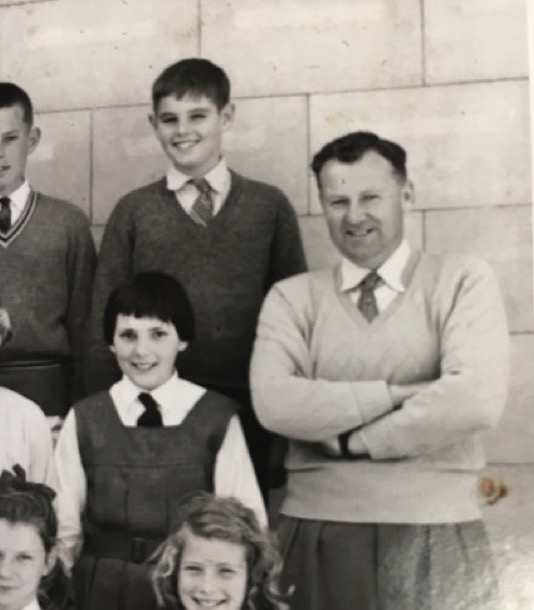
An important aspect of Grade 6 was Temperance Physiology and the signing of The Pledge. It seemed as if every morning began with:
‘Our bodies are made of millions of tiny cells………..’ This was the first sentence in our Temperance Physiology exercise book. Mr Stafford was a staunch teetotaller. We knew for instance that not a drop of alcohol had ever passed his lips, so he would have been very much in favour of teaching from the book, Temperance for Schools, approved for use by Victorian Education Department.
Reading the Preface to this book it seems like something from a distant age. I suppose it was! Suburban, white, mono cultural, Melbourne in the 1950’s

Our Temperance Physiology classes warned us of the evils of alcohol and the dangers that lay in wait for the unwary who indulged. I can remember with great gusto drawing an illustration in my exercise book of a wretched drunken man raising a fist to his cowering wife and children. Embellishments were a broken beer bottle on the ground and a trim policeman standing sternly at the door.
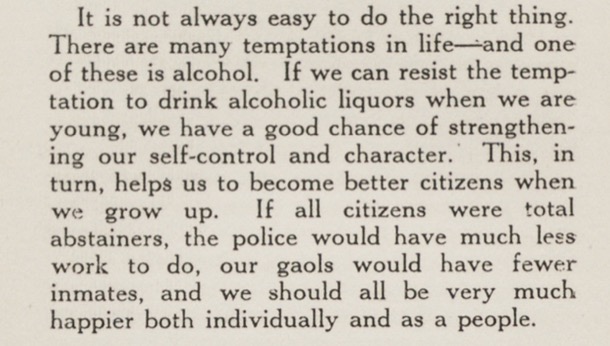
Towards the end of the year we sat for the Temperance Physiology Exam and if we passed it was presumed we were saved and we received a glorious shiny certificate from the Independent Order of the Rechabites.
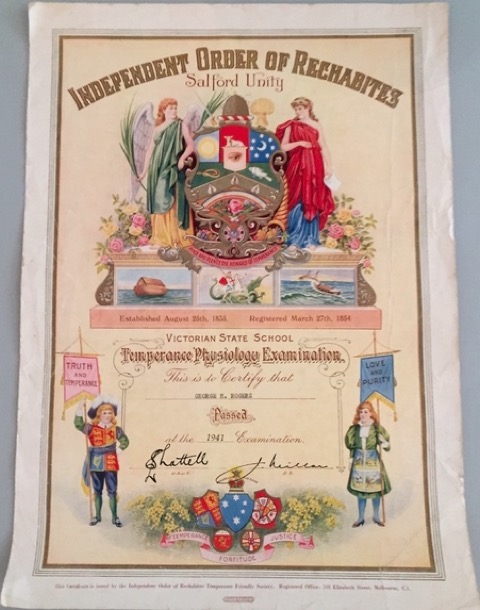
Another highlight was Poetry Anthology. Not only did we copy the poem in our best writhing into our Poetry Anthology book, but we also illustrated each poem. Of course I loved using my Derwent pencils to draw the Lady of Shallot floating down the river golden tresses trailing around her lifeless body. We also recited poems and Margaret and I, to this day, can still recite the first verse of several of the poems learnt in Grade 6, precisely as taught to both of us, (in separate years) by Mr Stafford.
The Demon Drink
It was clearly uncommon for anyone in our narrow anglo world to drink at home. Here, for instance, is an extract from a Primary school resource book on Temperance from the 1950s.
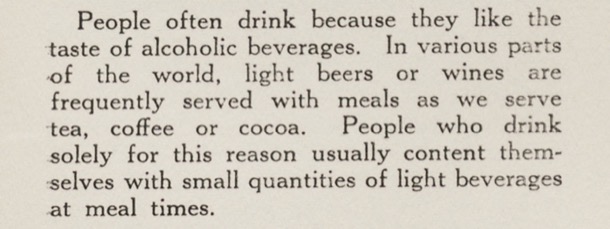
The international Temperance movement was one of the most powerful social movements of the 19th and early 20th centuries. Its advocates regarded alcohol as a social evil and sought to have it banned entirely, or at least its consumption drastically reduced.
Initially it was just a move against drinking spirits and “hard liquor". But during Victorian times it became more a push for total abstinence and became more specifically a women’s movement, connected with Protestant Christianity. Groups of women activists were to be found right across the western world.
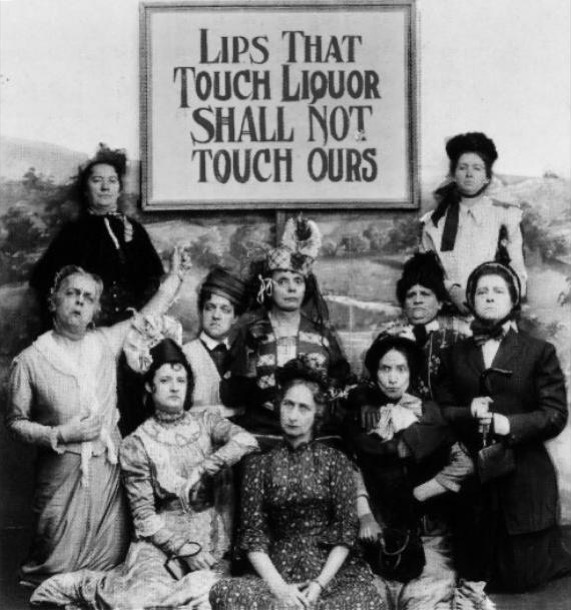
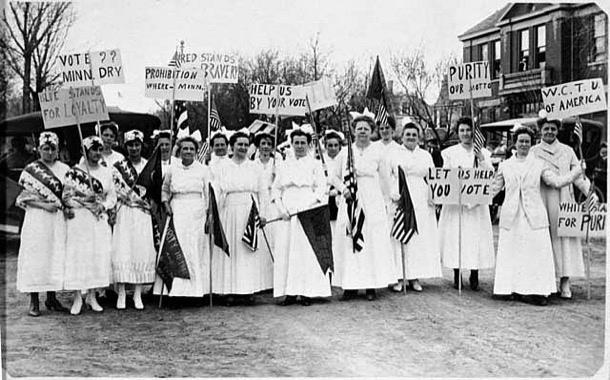
The Temperance movement had its most obvious success in America, where the sale of alcohol became illegal across the whole country overnight in 1920.
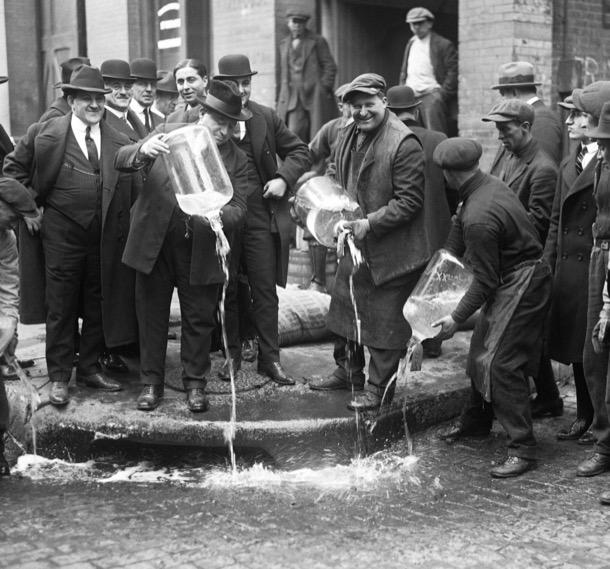
This period of American history has become known as ‘Prohibition”, the Roaring Twenties. It conjures up images of gangsters, speak easies and moonshine. The law did not have the support of much of the population. But it wasn’t until 1933 that it was finally repealed.
In Australia the temperance movement did not succeed in having the ‘demon drink’ banned but it did lobby vigorously for restriction of hotel opening hours. By 1923, hotel opening hours were restricted in all states. The closing of hotels at 6.00 PM led to a phenomenon known as the ‘Six O’clock Swill’.
It is hard to believe looking back that the daily rush to the bar was part of everyday life. Rather than limit drunkenness it actually encouraged it, as men who ‘knocked off’ work at 5 o’clock had only on hour in which to drink. Hotels were set up to serve as many beers as were demanded in this hour. Pubs were overcrowded, as men five or six deep lined the bar waiting to be served and patrons spilled out into the streets.
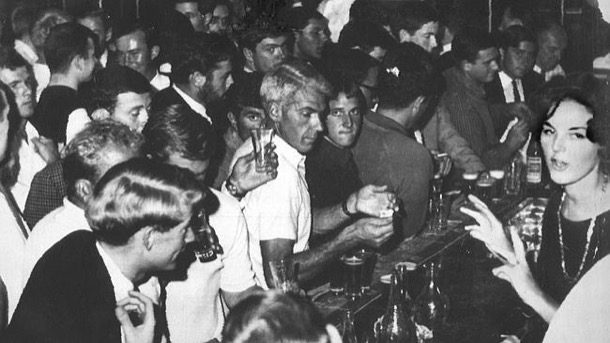
Pubs did smell strongly of beer as so much was served in such a short time. Sue can remember walking past Young and Jacksons on her way home and pushing her way through the throng of men, spilling out onto the pavement on the corner of Flinders Street and Swanston Street. Men, yes only men! Women were not permitted in the Bar until the early 1960s and for many years after that it was frowned upon. We can remember conversation stopping momentarily when we first walked into a bar particularly in the country.
The Demon Drink indeed! We come from a long line of teetotallers: our great grandfather Reverent Alfred Coates, our great aunt Sister Bessie, our maternal grandparents, Alfred and Alfreda, their siblings and our parents. Our mother’s family, the Coates, being staunchly Methodist, we imagine would have been very sympathetic to the temperance agenda. Here is Alfred, in his Methodist pastor uniform with Emma and their daughter:
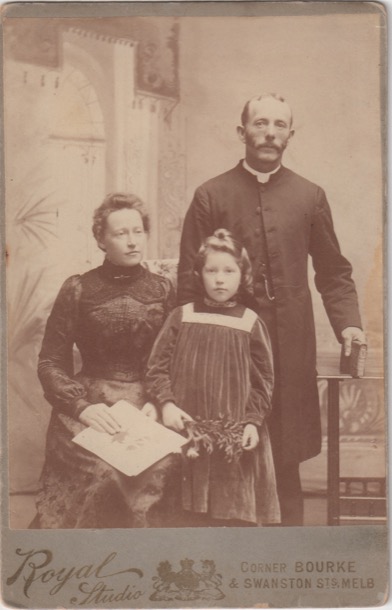
We were very aware as children that none of our family touched alcohol and that particularly frowned on by our rather upright Grandfather.
We too, at the tender age of eleven of twelve, have had our brush with The Independent Order of Rechabites, who provide educational material for Victorian Schools.
Alice and Marge as old ladies recounted their childhood memories of drunkenness, in the country town of Croydon during the 1930s, with obvious disapproval and distaste. Here they discuss the public drunkenness they witnessed at the hotel and wine hall near their house:
I remember our aunt having a glass of beer at the dinner table, when we were staying there as children. I commented on it and I remember being rebuked. Later our mother told me that it was medicinal, that she had found that drinking beer with food helped her digestion. That mum had felt the need to explain it that way, and that our aunt had reacted so strongly to a child’s interest is understandable in the light of heir own childhood experiences and family attitudes.
And then, during our late teens, as the 1960s became the 1970s, this part of our past just melted away. It became normal and natural too open a bottle of wine to share. There was binge drinking around us, especially at Uni parties, and the drink driving hazard was evident, but the moral dimension, the “holier than thou” attitudes, the raised eyebrow were all gone. Society had grown up about the same time that we did.
.
"Are you up to it?"
So now, sixty years later, we contemplated walking it again, those same roads and lanes, across that same creek. In our memories it was a long long way. “Are you up to it?”, Margaret texted Sue.
We park outside our old house in Moore Street and set off. And as we walk we remember:
Less than a minute into the walk, we round the corner into Grandview Road. To the west are the Dandenongs. The street trees are large and bright in their early Spring colours. It’s suburban, but well heeled and attractively quiet. We remark on a number of houses that seem unchanged. There’s the house where I babysat once, there’s another one where people from the church lived.
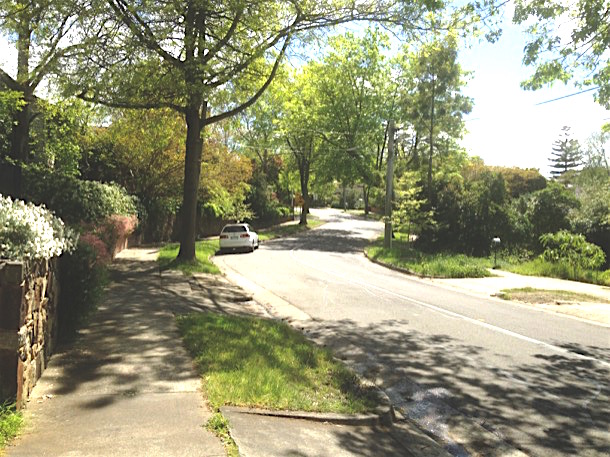
As we did this walk every school day, rain, hail or shine, we developed little rituals and markers, that now sixty years later we remember clearly. We often began our journey down Grandview Road, kicking a stone that we attempted to keep all the way to school. We don't think we ever succeeded.
Bright pink pig face flowers in spring marked the bottom of the hill. If the sun was out we always stopped and stared into the flowers for long enough for the world to turn green when we looked away. of course they are no longer there, but the rockery is.
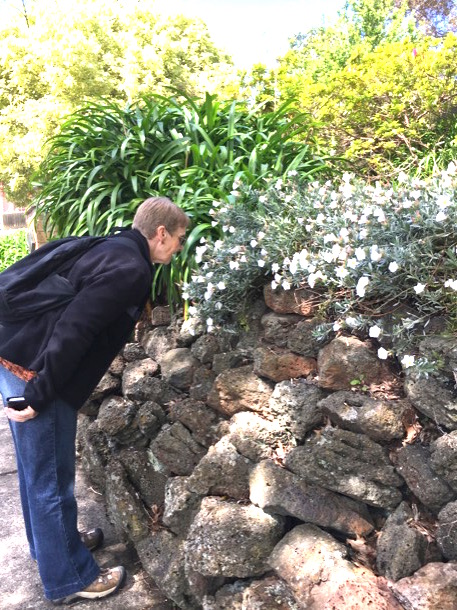
“That’s the street to the Church just there! It’s so tiny! Everything is so close”
We have reached the bottom of Grandview Road in seemingly record time now the distances seem so small.
“I always liked this bit.”
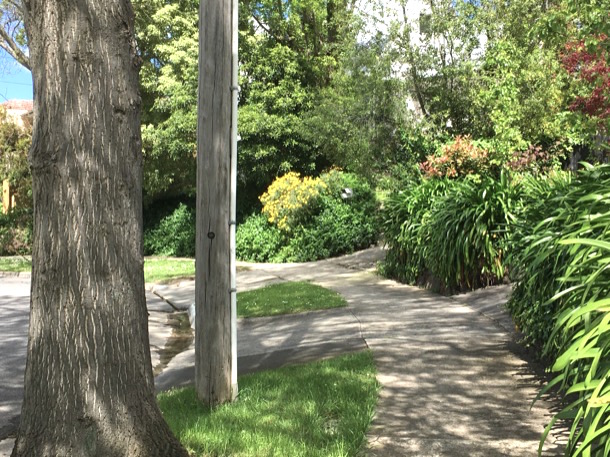
Heading towards Riversdale Road, still in Grandview Road we relive our childhood pleasure in beautiful gardens and leafy streets.
Riversdale Road is quite a major road, but still not too busy. Across from the end of Grandview Road is the entrance to “the lane”.
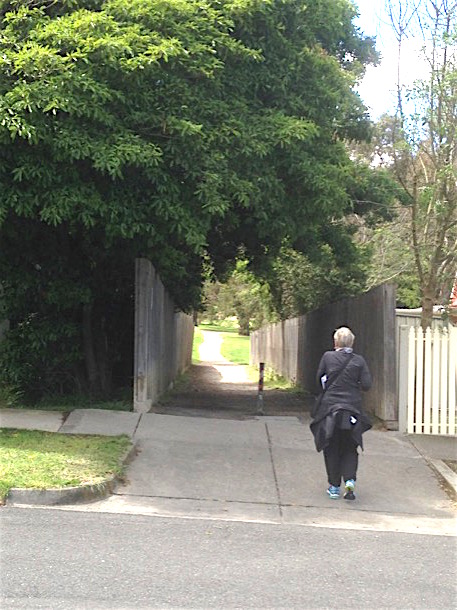
It runs alongside the house that our church minister and family friend lived in. Behind their house were the church tennis courts. That whole property is now a collection of ugly units.The lane continues a long way down the hill toward the creek. At every cross road is an opportunity to go a different way through the grid of streets.
We walk along Neville Street and remark on the difference in this much lower socio economic area. Many of the old public housing houses are still there, unchanged from the nineteen fifties’ building boom. They are noticeable different in style from the “private “ housing and, as children, we knew that they were “housing commission” houses and that they were for poor people.
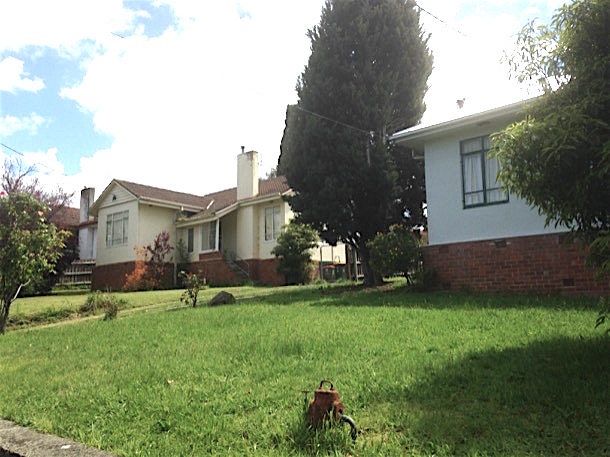
At the bottom of Stott Street we turn into yet another lane and at the other end we emerge into a green oasis.

Dogs are running free, chasing balls and each other, rolling in muddy puddles. Their young owners stand and chat. Up the hill a bit is a natural wood playground: slides, climbing frames, tasteful little forts. Further down the hill is a fenced off area of native bushland and, running through that the Gardiner's Creek. Well tended paths run along both sides of the creek and up to the adjoining streets. A noticeboard has a bird list and information about plans for improvement of the area. It is a pleasant Spring afternoon and Deakin students are strolling or jogging.
We conjure memories of how it was. This, the floodplain of Gardiner's Greek was the ‘wild’ section of the journey. The raised path, built by the fathers of the children who used this track daily, snaked its way across the grassed floodplain towards the bridge, also built by the fathers.
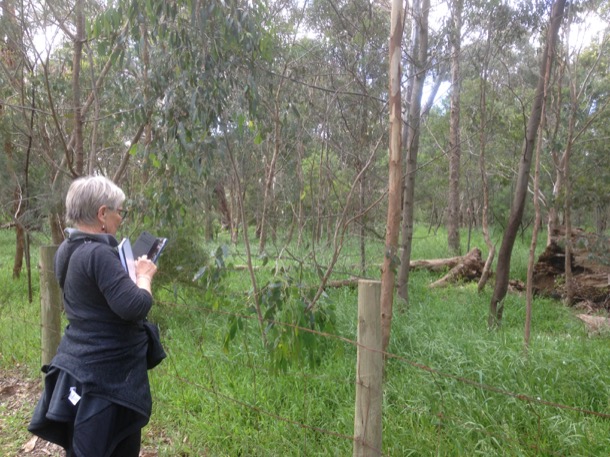
One old River Red-gum marked one of the bends in the path and large clumps of blackberries hid the creek from view. It was not the cherished indigenous community park it is now, but was a neglected wasteland. However it was interesting and often beautiful, especially in the morning. Sometimes we emerged from the lane to a white icy world, where spider webs hung between frosty grass stalks, glistening in the early morning sun. Sometimes the creek flooded. This was very exciting. We walked on the raised pathway, floodwaters on either side, wondering if the bridge was flooded. The water never covered the high bridge but the muddy torrent came very close.

On up the small hill past paling fences that belonged to cream brick houses we emerged on the school oval, the classrooms in the distance. Nowadays it is a multi story carpark.
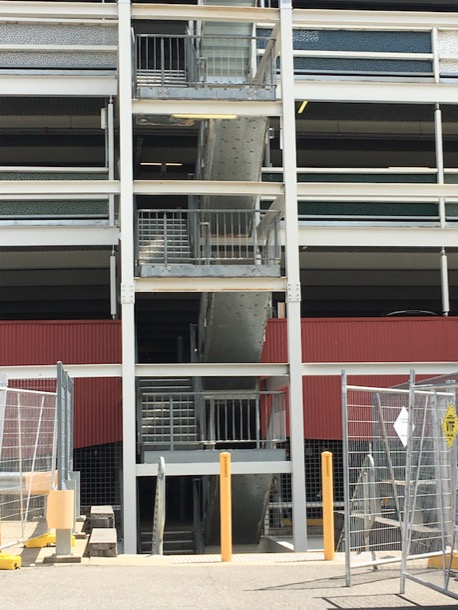
Our little school has been completely swallowed by Deakin University, along with the Teachers College and our secondary school, Burwood High School. We walk onto campus, and there, in the middle of the glamorous uni buildings is a little row of ex classrooms. There on the end is where my Grade four room was, here's the breezeway. Up on the edge is the quadrangle where we practised marching. There was a breezeway along there and Mr Stafford's classroom.
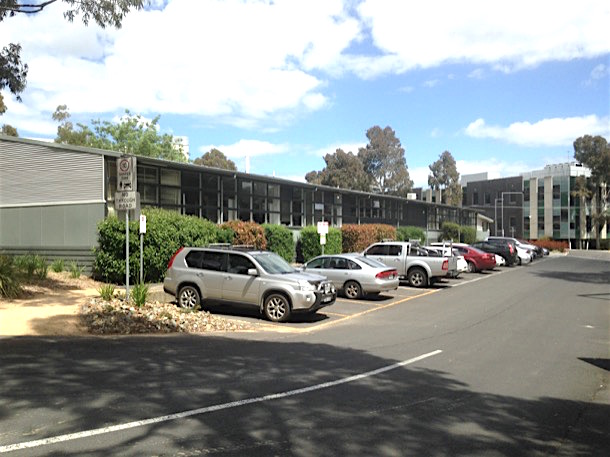
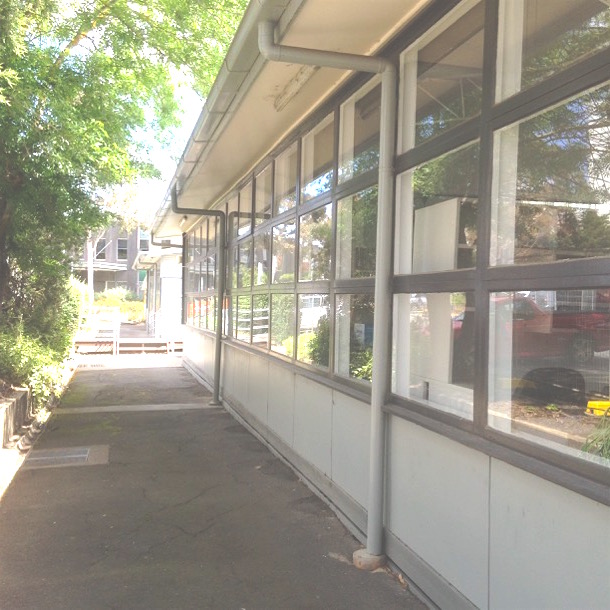
We set off past the car park again, cross the creek and head back into the criss cross of familiar streets.
At the corner of Cadorna and Inverloch Streets we work out the place where “the accident” happened.
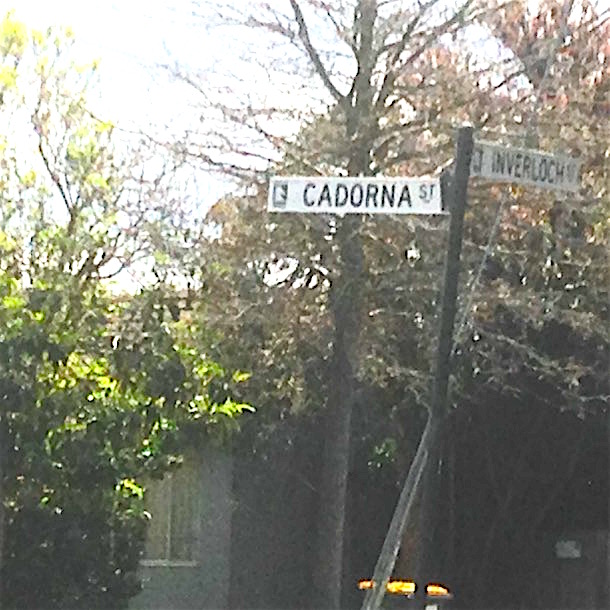
We remember it very differently of course: one of us watched in horror, the other was a participant. Here are our separate memories of it:
Sue:
Summer was a hot and dusty trek back across the creek after a full day at school. Once we had left the creek and started the climb up the hill in the hot suburban streets it was a bit of a slog. One such hot summer afternoon Margaret I were walking home with lan who was in Prep and the usual tribe of kids spread out across the two sides of the road. Margaret, seeing a friend on the other side of the road ran onto the road, straight into the path of an oncoming car. I don't remember much of the accident itself but I do remember a crowd of children and helpful women surrounding us as Margaret lay on the nature strip bloodied and battered with her head on my lap. The distraught young driver of the ute drove to get Mum (no mobiles) while we waited for the ambulance. Margaret disappeared with Mum into the back of an ambulance and Ian and I walked home.
Margaret:
I was nine, in Grade four. We were on the long walk home up the hill. Ian and Sue were there and lots of other kids. I ran across the road without looking, and was hit by a ute driving along Cadorna Street. It was a Friday.
After the accident I lay on the nature strip. “Ladies” from nearby houses tried to cover me with blankets, which I found irritating and pushed away. I remember Mum arriving and the ambulance. From my vantage point in the ambulance I remember seeing the corner of Riverside and Station Streets, as Mum told them they should be turning left not right.
At the Box Hill Hospital, I remember the decision of the doctor to pull out the tooth that was hanging loose. Two other teeth had been knocked right out, both of which had had gold fillings painfully inserted over the previous year, after an accident at gym.
At some stage there was a police interview. I remember Mum describing this process to someone else and laughing about the look on the Policeman’s face as he gently tried to coax information from me only to be presented with a dramatic and colourful description in far more detail than the poor man needed.
I remember coming home later that night. And then, possibly over the weekend, before I went back to school, I got mumps.
People bought presents: colouring books, a white china horse.
I guess the severity of the accident was exaggerated by the fact that I was laid up for weeks with mumps.
The sustained ongoing result of the accident was the absence of my three front teeth. Nowadays there would be counselling, PTSD and expensive restorative dental work.
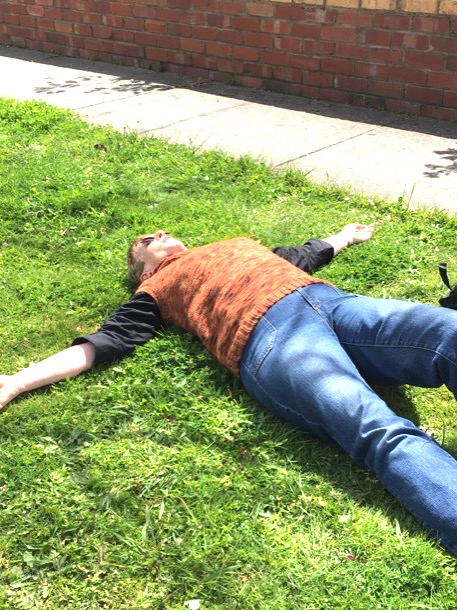
After the accident reenactment we begin to walk up lnverloch Street. It is long, steep and dull. There are no leafy street trees and interesting gardens. It feels like a concrete jungle. We reminisce about hot afternoons trudging up here lugging our school cases. We turn right at the first cross street, relieved to be able to use the lane instead.
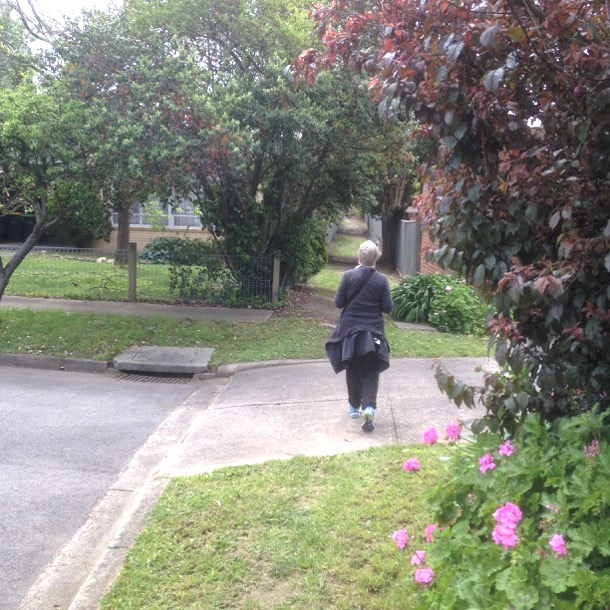
The lane takes us to the same place, the corner of Riversdale and Grandview roads, but it is much less steep. Soon we are crossing Riversdale Road and we remember the leafy cool shade of this part of the journey. It has seemed like a long way and we find ourselves trudging a bit up the hill.
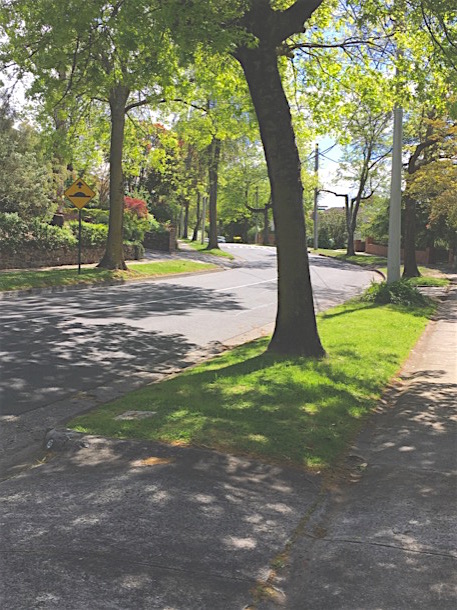
The homeward journey has taken about an hour, including the accident reenactment, stopping to gaze at houses we remember and a conversation with a lady in Neville Street who was interested to know what we strangers were doing in her street, where she knew all her neighbours, “except the Chinese who keep to themselves”. It’s a pretty fair representation of what our trip home would have been like. School finished at 3.30. So we would have been turning into the Moore Street driveway about 4.30.
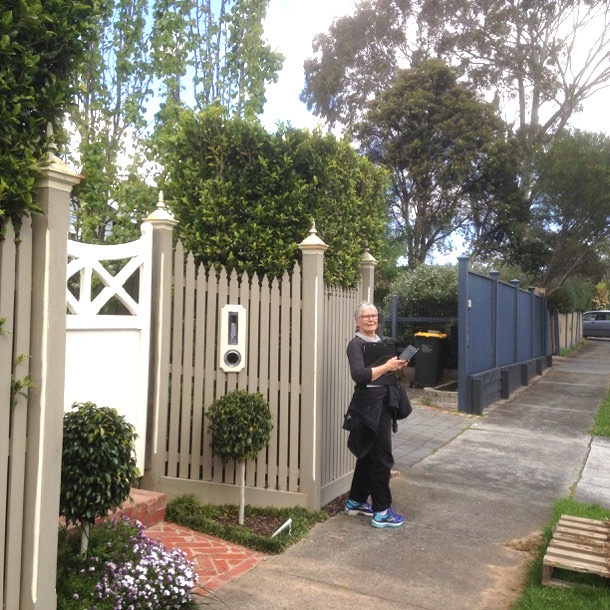
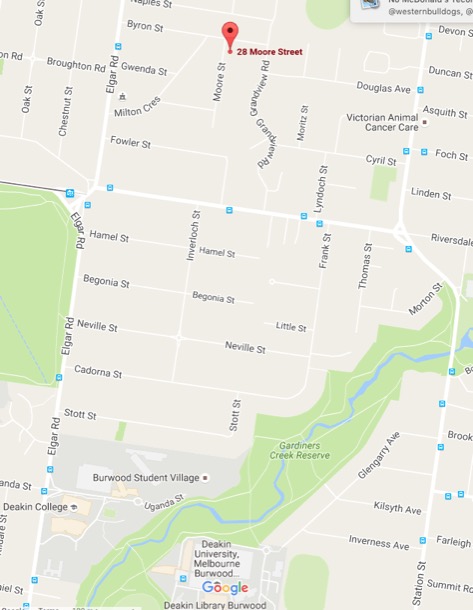
Family camping
Our grandparents and parents had camped as young adults, so living in third world conditions in order to be able to enjoy ‘the bush’ was not a new pastime in our family.
In January 1935, Alf and Alfreda, camping in the bush by the Yellingbow Creek in Woori Yallock, sent letters back to their daughters. In them Alf drew pictures of their camp:
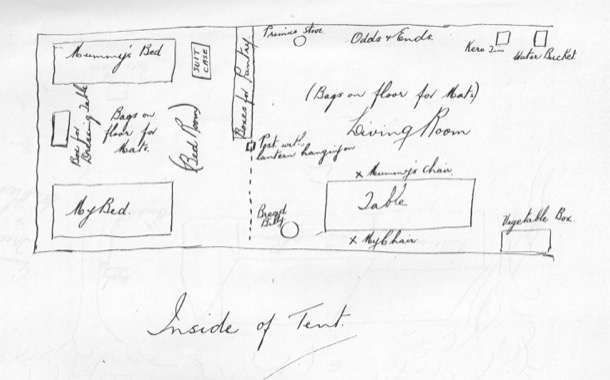
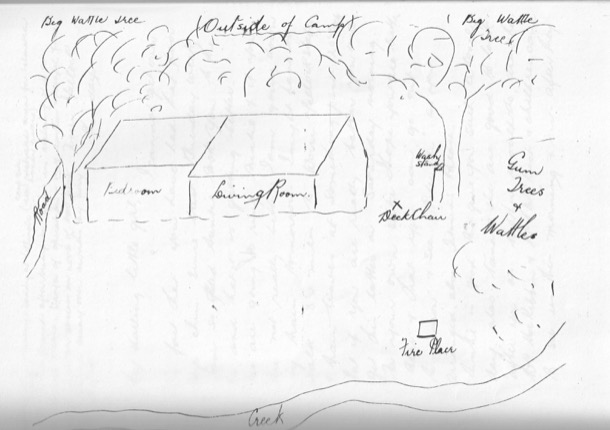
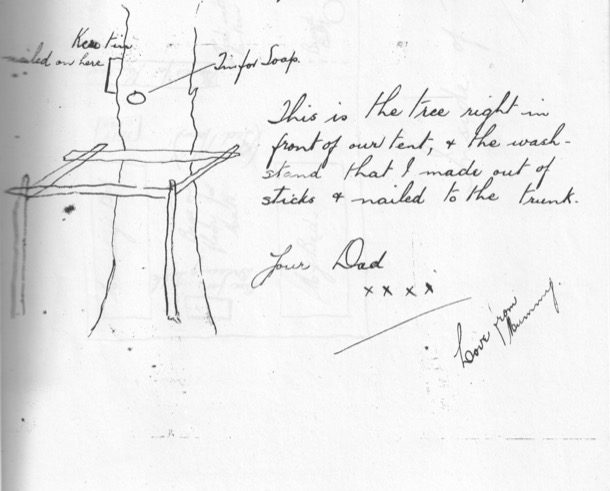
And Alice as an adult, camping with her parents:
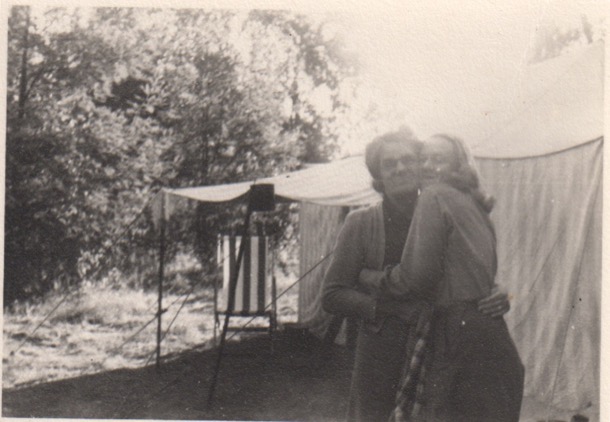
Our parents, Jim and Alice, went camping too:
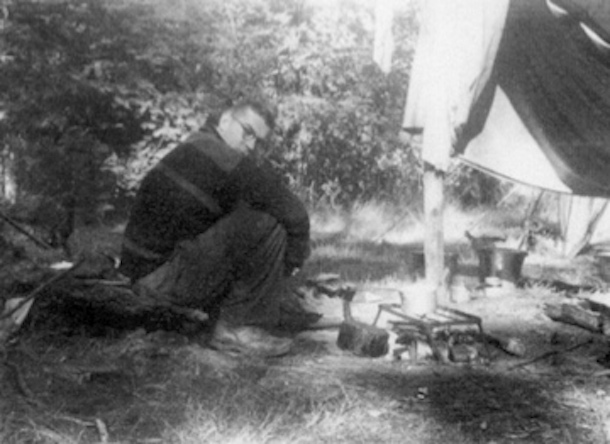
1958 and we kids embarked on our lifetime of camping. It was very exciting. We went to the Prom with the Lees, a family of five who lived at the end our street. We hired a big canvas tent, a simple square and most of the cooking was done outside. I remember this holiday vividly. We all had a wonderful time swimming in the river and the sea and walking. We even all made it to the top of Mt Oberon.
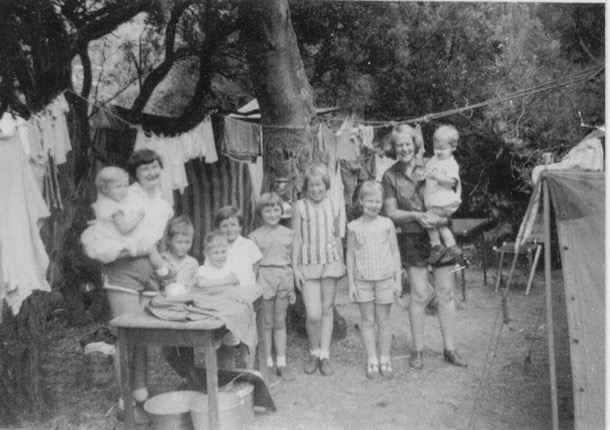
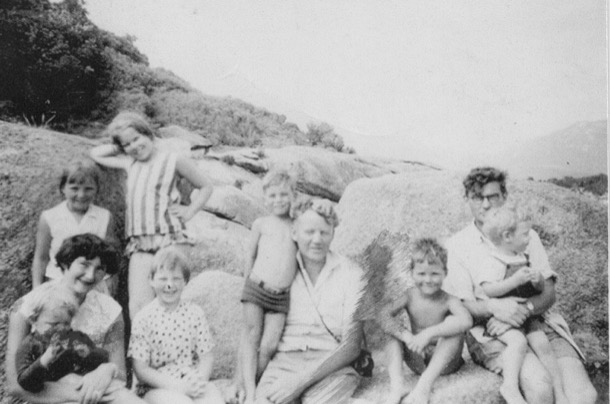
One memorable day there was much preparation for the ‘heat wave’ with temperatures over 100 degrees. Yes, fahrenheit, we are old! A picnic lunch was planned and we waded over the river with supplies for the day. The shady little beach on the other side was the perfect spot for a hot day but i am sure we all managed to get sunburnt. No sunscreen in those days!
That holiday must have been a great success as preparations were made the following year for Christmas holidays to be spent at a new place Mum and Dad had found with the Wilkinsons, a family from the Church. So began the long summer holiday tradition of going to Shoreham.
One of the important purchases that has remained in both our memories was the tent. As we were short of money our parents decided to buy an Army surplus tent. We went to Williamstown to pick it up. In those days driving to Williamstown involved a ride across the mouth of the Yarra on a punt that took a few cars at a time: so interesting that Margaret wrote a Grade 2 Composition on the very subject. Here it as as written:
‘On Sunday we went to hire a tent. It was a very long way. The place we hired the tent from was called Williamstown. On the way we saw many ships and boats. Also we saw a rubbish tip where our Australian rubbish is tiped. When we go there we pressed a button and a man came out. Then we went to buy some icy-poles. When we got back I asked Mummy what a man was doing, Mummy said he was drunk, I said ‘OOOOH’ He herd music playing and wanted to get in. He was knocking and waving then he touched his hat took it off and put it on a man’s knee. Then we had a ride on a queer ferry. which parted from the road.‘
It was a huge heavy old tent, khaki with big black letters and numbers stencilled on the roof. it was rather dark inside and it LEAKED.
Next year Dad’s Uncle Austin died intestate. As he was unmarried, his estate was divided between his relations. The law does not cut people from wills for marrying Protestants so Dad received his share. What a lucky windfall! It enabled us to buy a smart new tent that did not leak and was light and airy
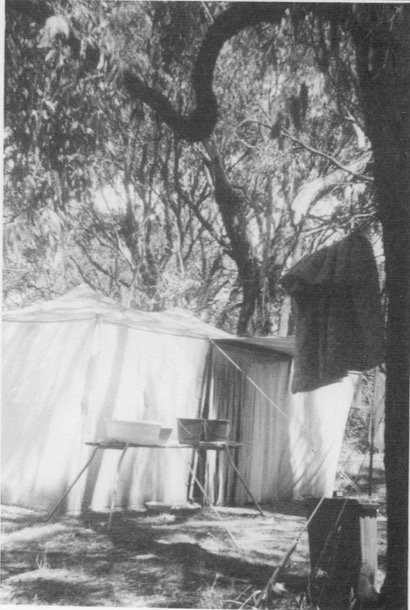
Shoreham Foreshore Camping Ground was on a bushy small promontory on Western Port Bay. It was part of a sleepy small holiday place still surrounded by small farms. There were not a vineyard in sight. The camping sites were well spaced and some were quite secluded. The bookings were done through Mr Webb who was the Ranger and lived in a house abutting the camping area. Water was available in three large water tanks near our site. There were several toilet blocks where, in the morning, a small queue of brunch-coat clad ladies could be seen snaking its way up the hill. Pastel shades and floral prints were the predominant choice of fabric.
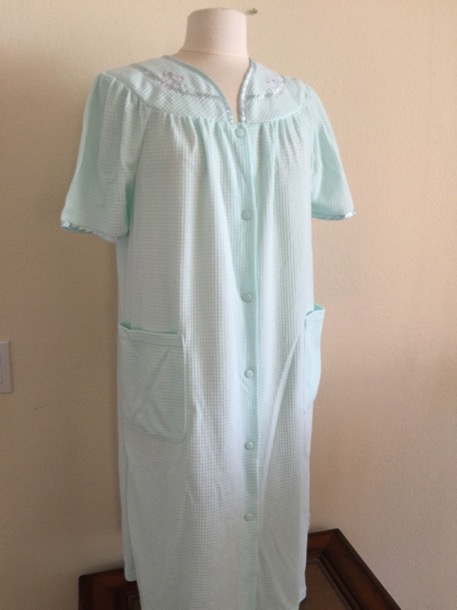
No showers though. Apart from swimming nearly everyday, a bath in the baby’s bath had to suffice.
Our tent was divided into three rooms: two for sleeping, equipped with double bunks, and a general living and kitchen space. We also had a flywire annexe where we had a camping table for meals. The floor, which covered the whole interior, was made from chook food bags we had sewn together on the back lawn. It became quite flat over the years and always smelt pleasantly of chook food pellets.
While Mum was sewing our summer shorts and tops, Dad used to come down a week early and set up camp. It was quite a trailer load and a big job as we had a big wooden chest of drawers, double bunks a two burner gas stove with a griller, chairs, table and an old ice chest. The iceman used to come to the camp ground so we could always keep food cold. In later years we moved onto a gas fridge. A week later we would descend with clothes, food, Christmas presents and a big wooden box of books all ready for a blissful six weeks of beach, shuttlecock, 500, reading and fun.
The book box was quite a feature and sat in the central living space. Dad raided the school library and we all borrowed the maximum from the Box Hill Library. We always had a wonderful collection to choose from. There were often a number of books in series such as A.J. Cronin's series on the life a young doctor in a Welsh mining village in the 1920s and many Who Dunnits. Great absorbing reads that we all looked forward to.
Another of the memorable, nightly rituals was the lighting of the Tilley. Tilleys are kerosene fuelled pressure lights that give out a tremendous amount of white light and therefore were terrific to read by. The lighting ritual was impressive to young eyes as it involved a flaming ‘thing’ that was clapped around the stem of the Tilley. Once the mantle was heated and glowing and the flame had subsided pumping began and we waited with bated breath until the mantle popped and was a light.
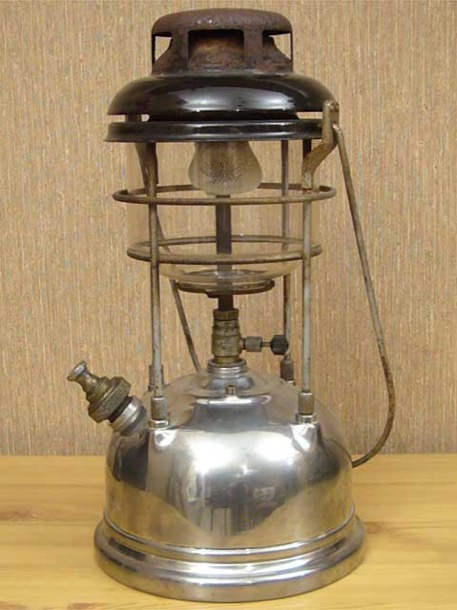
Dinner and washing up would be done and so nightly activities could begin. Often wrapped in rugs we settled down to reading or, more often than not, 500 tournaments. It was great fun.
One wet day game was for Ian and Margaret to embarrass our mother by pretending she was hitting us. We would howl and scream “Pleeeease don’t hit me Mummy! Oh no you’re hurting him!” You get the idea. She would be torn between laughter and horror. Tents have thin walls and we were surrounded by other camping families. Sue even remembers the game extending to shadow play on the tent walls at night. She remembers coming back from the toilets and seeing the acted out scenes of horrific violence. It’s a bit sobering now to consider that some of the “audience” in other tents may well have experienced that violence in their lives for real!
Shoreham has a rocky promontory, exposed at low tide. Then it was too shallow to swim, so we kids spent the time turning over rocks to see the creatures scuttle away, as we walked way out on the rocks. Quite a long way out was “the rock pool”. It was big enough and deep enough to swim in. There was a flat rock at one end which was the “diving board”. The pool was full of waving sea weed, tiny fish, sea horses, anemones. This gave it an exotic, scary atmosphere. Jumping off the diving board and seeing how far we could swim underwater was a favourite game there.
The rocks seemed the same every tide. Year after year we kids clambered roughly over them, caught crabs, and sea urchins, took interesting creatures back to the tent, collected shells.
Sometime over the decades, Shoreham’s bio diversity diminished. There are still crabs, and a few anemones, but the sea horses and sparkly fish are gone.
One year, Ian, aged perhaps seven or eight, turning over one of those rocks, dropped it on his finger. There was lots of blood, huge drama, and a trip to the doctor in Hastings to have it stitched. Sue remembers she and I walking him back to the campground, each of us with an arm around him and Sue with her palm outstretched underneath the finger. She was sure it was about to drop off. I remember feeling very sorry for him because he was not allowed to go in the water for the whole rest of the summer.
Low tide exposed enough flat wet sand for French Cricket. This was organised by the fathers. Everyone played, but we girls really only tolerated it and weren’t very good.
Dad, Ian, Chris and a couple of Wilkinsons:
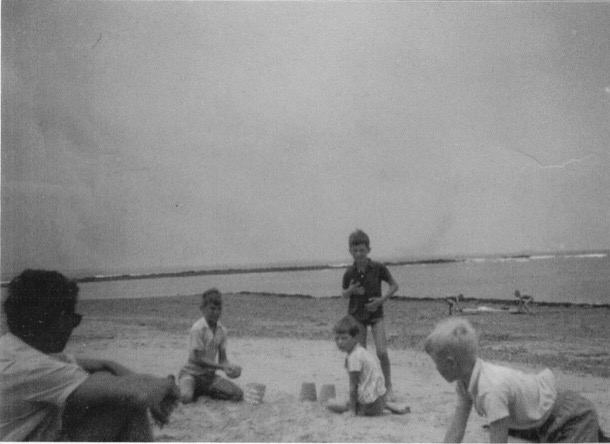
The worst thing about low tide was the sea grass. There were crabs scuttling through its waving fronds and if you swam over it, instead of risking your toes, eventually you felt it on your bare legs and arms and you simply had to stand up.
At high tide Shoreham had wonderful swimming. We would stay in for hours with our poor mother sitting on the beach keeping watch. Sometimes you had to share the water with drifts of dead sea grass, which would pile up in smelly cliffs as the tide went down again.
When our parents could be bothered taking us, we would walk around to the surf beach at Point Leo. Here we could body surf and jump around in the big waves. Later we even had a couple of blow up rubber “boards, like a small lilo with handles. The price you paid for playing in the surf was having to walk back with your bathers full of wet sand. I remember fearing that the wad of sand must have looked as if I’d pooed my pants.
Shoreham beach looking towards Point Leo:
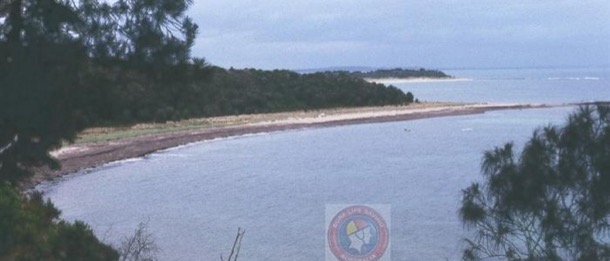
In the other direction was Flinders and the ocean. The view of Flinders from Shoreham was of a long promontory. The Naval Base there used to have gunnery practice, evident to us by puffs of smoke and a distant “whomp whomp”.
Flinders in the far distance:
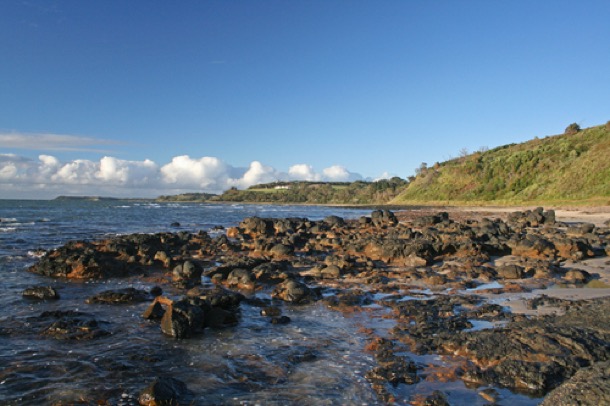
Weekdays involved walking to “the store”. Shoreham had a general store on the edge of the foreshore reserve. Dad and the four kids would walk up along the track, buy The Age, milk and whatever else was needed, even a Drumstick sometimes:
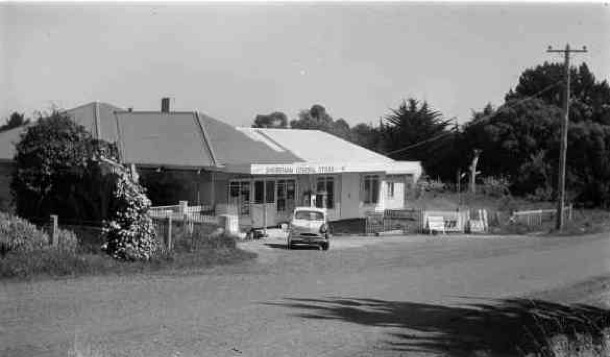
Then we would head along the main road to the Post Office. We took it in turns to go in and ask for “Any letters for Bourke?”. Then we would walk down the post office road to the beach track. Some days we would continue to follow the road past some holidays houses and then rejoin the campground track, but most often we would climb down the steps alongside “Camel’s Hump” and back along the beach. In my memory these steps were steep, treacherous and dangerously slippery. Back at camp Mum would be doing piles of holiday washing all by hand, after lugging the water from the tank and heating it up on the gas stove.
Most years, for one day, usually when it was not beach weather, we would pack a lunch and “walk to Flinders”. Mostly we walked both ways along the beach, making the Flinders pier the turnaround point, but sometimes we came back by the road, and bought fish and chips at the Flinders shop. It was an eight mile round trip, (about thirteen kilometres). The beach between Shoreham and Flinders, mostly deserted and wild, had a succession of small coves and rocky headlands. The first headland, covered in pine trees, separated the camp beach from “Shoreham Proper”.
Walking any distance along the beach included shell collecting. There were lots of interesting and colourful shells but the most prized were the cowries. It was not uncommon for each of us four kids to have twenty in our collection by the end of the summer holiday. We would also collect sea urchins, trapped in amongst the piles of dead sea grass.
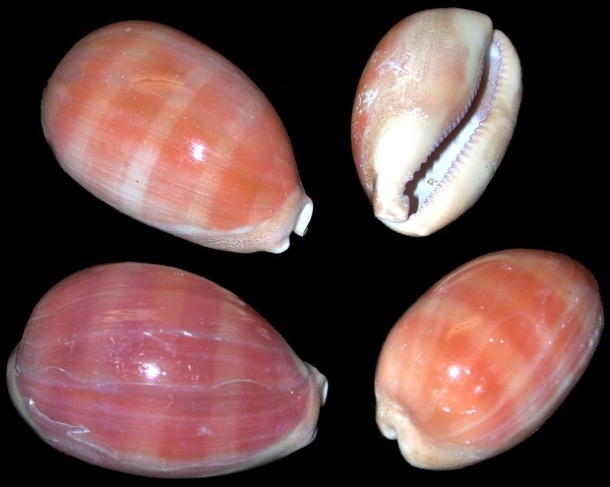
I never understood the pleasures of sun baking, but would spend hours in the water. Our noses were zinc creamed, but not our shoulders. It must have been hard for our mother who was responsible for managing four children’s sun exposure. We were often sunburnt and sometimes even had blisters.
Sue and Mum in the sand dunes:
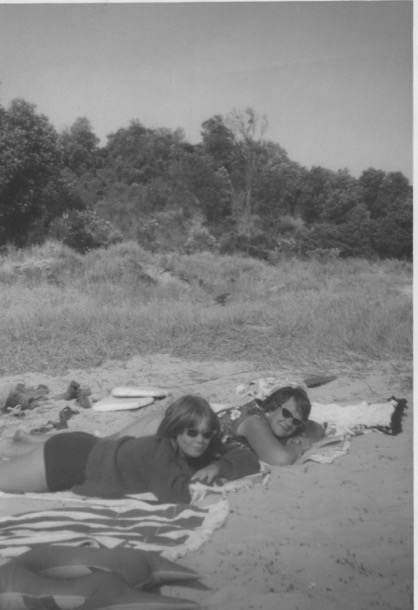
On the six or seven Sundays we were at Shoreham we would dress in the “good” clothes we had brought especially, and shoes (the rest of the time we wore thongs or sandals), and drive to Flinders Presbyterian Church. The Wilkinson family came too. Sue remembers the prickly feeling of a dress on sunburnt back and the resentment of having to go. The church was small and dark and had a small regular congregation. Afterwards we would pile back into the car and race back to the beach.
As the years went on and we went to Shoreham every summer, it became the way I measured the passing years. It was a benchmarking time. The tent set up, the beach, the bush all stayed the same. The people changed gradually, inexorably. Summer holidays was the time to recognise and celebrate this.
This clearly happened for the adults as well. I can remember Alan Wilkinson, chatting to our mother, oblivious of nearby children, the way adults were in those days. “I’m turning forty this year, Al. It’s hard, life’s passing me by.”
By the time I was fourteen I was spending Saturday nights during the year at local church dances. I don’t remember how it came about, but I remember going that summer to a surfer dance at Point Leo Surf Club. This was the time of Little Pattie and Col Joy. Wonderful music in my opinion. I remember a hot, dusty room full of blond suntanned kids, all moving in sync to a band playing covers. The surfy dance was ridiculously simple:
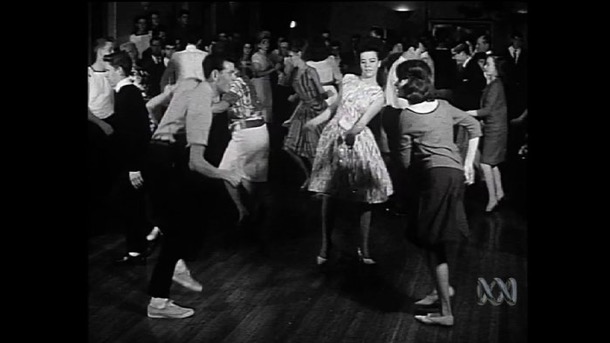
There were always more boys than girls at Shoreham over the summer. Only boys actually surfed. I remember a “date” with a boy who had a car. It was mortifying at first, when my mother insisted that Sue came with us because I was too young, and probably mortifying for her to have to be the chaperone, but I don’t remember where we went, so it can’t have been too bad.
Sue also had romantic episodes at Shoreham. One year she met a fellow camper, who was a Year 12 student doing a navy cadetship. She spent time in Melbourne that summer holidays, doing a “life drawing” course and went out with him over that summer:
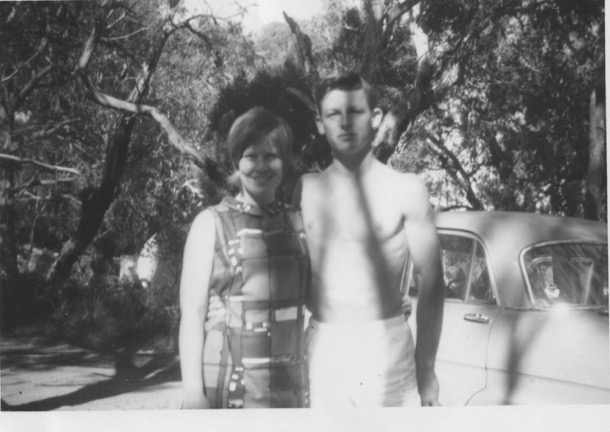
Around the same time Dad and I were involved in a prank at the YMCA camp. Over the summer holidays there were crowds of young boys with older teenagers as camp leaders. I guess Dad might have got talking with the adults at the camp and hatched the plan.
Would I like to be involved? What, you mean walk alone into a room full of a hundred boys having dinner, find the mark, the shyest of the leaders, who has never seen me before, sidle up to him and put my head on his shoulder and snuggle up to him? Try and stop me!
After a few minutes, Dad appeared at the back of the room, brandishing a gun (!) “Where’s my daughter?” he howled.
I don’t remember what happened next, but I have a strong impression of being the only girl surrounded by a crowd of boys and loving it!
Our earlier experience of the YMCA camp was attending the outdoor “pictures”. Campers, each carrying a folding chair, would head off after dinner to the camp and set up facing the strung up bed sheet, amongst all the camp boys.
Shoreham camp was a social place for the adults as well. The same families would camp in the same sites each year, including a few we knew from our real lives. I remember late afternoons on the beach sitting in a group of Bourkes and Wilkinsons, ten kids between us, reluctant to break the spell of the setting sun and then going back to our tent and cooking dinner for fourteen. We had day visitors too, family and friends. I remember Mrs Moss, also a church friend of Mum’s, enormous and perfumed. I remember being impressed after I had complimented her on her dress, when she demurred and pointed out that she didn’t have “her corsets” on.
When the holidays ended we were brown as berries. Packing up was done and then home to the strange sensation of hard floors under our feet and the new school year.
Twenty-Eight Moore Street
Alice describes the acquisition of the land in Box Hill South in 1946:
Dad built the house over the following six years, while studying night school and working full time at the gasworks in Box Hill. Sue remembers going to the Moore Street site, Dad walking and she riding her trike. On one memorable occasion, on the corner of Broughton Road and Elgar Road she remembers waiting while a circus went past: wild animals in cages and horse drawn vehicles.
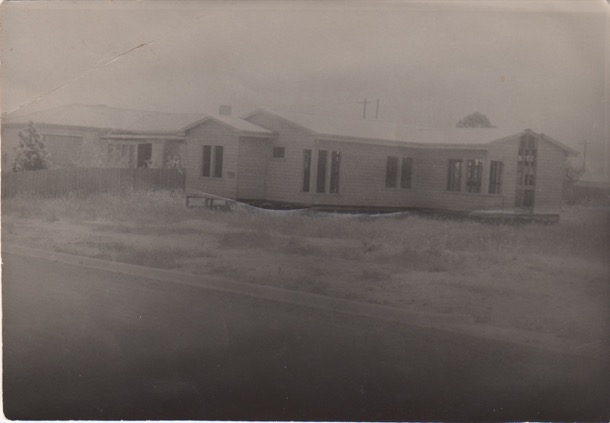
Neither Sue nor I remember the move from Boronia St, but it must have been in 1952. The house was never actually finished. The back door remained the one Dad had knocked up to lock up the house. We four kids all lived there until we were in our late teens or early twenties and our mother remained living in in the Moore St house until she was in her fifties.
The house is still there. It had a view over Mt Dandenong, and was pretty much on the edge of suburban development. Beyond, further east were orchards, unmade roads and “the country”.
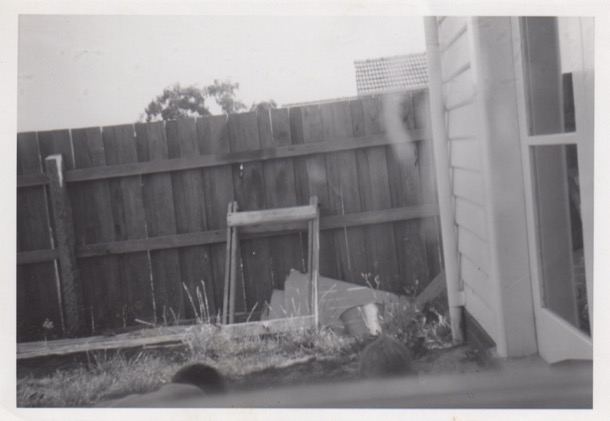
Outside was a garden, overlooked by a grass terrace, which had French windows opening onto it. Later this terrace area became a “rumpus room” when our grandparents built a flat onto the back of the house in about 1960.
Right down the back was a vegetable garden and chook pen. Sue remembers hanging on the fence eating an apple, and looking into the paddock next door.
The driveway led through full height double wooden doors into the garage. I remember the garage full of shelves of smelly, dark looking tools, piles of sawn timber and car bits. Our first car was a Talbot, huge and square. it was cream with red leather
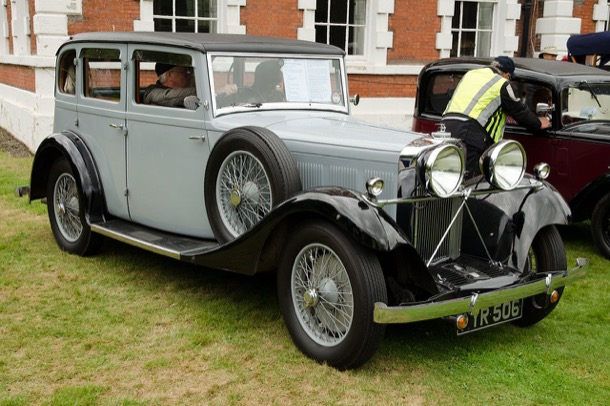
Later it was replaced with a Sunbeam. I remember being confused about the Sunday School song “Jesus wants me for a sunbeam”, but lots about life made little sense. This was just one other enigma.
Attached to the side of the garage was a garden tap, and at the end, a swing.
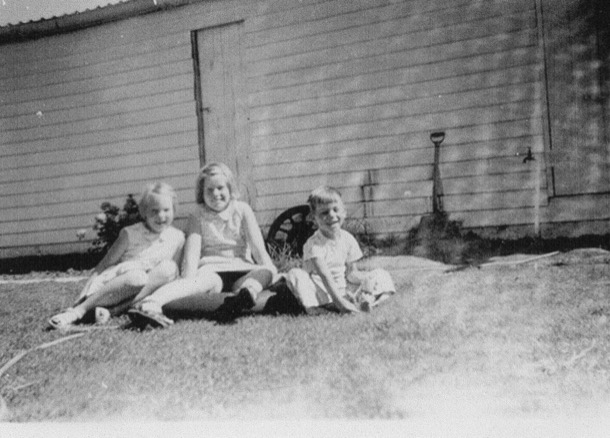
Part of the garage building was the alcove for the outside toilet, which we used until the sewerage came through. The toilet consisted of a can with a shelf above it, with the seat built into the shelf. At night we used the potty instead. Our bedtime instructions were “potty, teeth and bed”. The "can" was collected every week by the "dunny man".
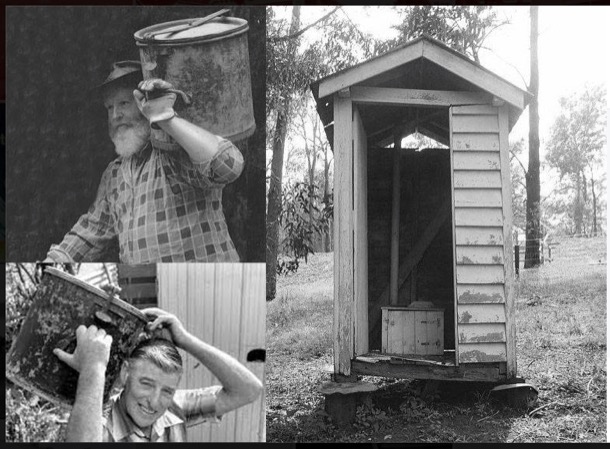
Moore Street House Room by Room
The Girls’ Bedroom.
Sue and I shared the front room of the house. Initially, the room was a pale dusky pink coupled with a pastel greeny aqua. Later this was changed soft grey with navy and red curtains, replacing the white venetian blinds, and navy blue bedspreads. Sue remembers buying the fabric for the curtains and bedspreads, with Auntie Marge as style consultant, from a shop in Richmond.
Dad built double bunks, offset, with drawers under the upper one, and a plywood dressing table opposite the bunks and long desk under the front window. Sue remembers working on that desk as an older student.
We wore cotton nighties all year through. Sue slept in the lower bunk, and I the upper one. Above my bed was a high window. I remember standing on my bed watching an occasional visitor walking down the driveway below. On cracker nights, after all the neighbourhood kids were back home in bed, the window also afforded a view of Gilbert Soames, the older, strange boy next door, letting off his own crackers, all by himself, in front of his house.
We went to bed at the same time, in spite of the three year age gap. We would read until lights out, (and sometimes afterwards with clandestine torches or a candle). We also talked in the dark. A favourite game after lights out was to take it in turns to relate “everything I did today from waking up until now”. This would often mean a droning voice going on long after the other one had dropped off to sleep.
In Spring the pittosporum in front of the room filled the air with its sweet blossom.
Around dawn there would be the sound of the milkman’s horse clip clopping along the street.
During one of the evenings leading up to Christmas a small brass band from the Salvos might stand on the street corner and play carols, before marching off to the next street. On Christmas morning there would be a satisfying lump of filled pillowslip on the end of each bed.
Clothes storage was in a singe wardrobe, the drawers under the upper bunk, and shelves in another cupboard.
We had very few toys, a few dolls and books mostly. These lived on two, usually messy shelves in the cupboard. There was always a pile of cartridge paper for drawings, on one side of which was Dad’s students’ mechanical drawing school work. We don’t remember playing in our bedroom, in fact really only reading, lying on our beds.
The sheets were changed once a week. The top sheet would be put on the the bottom, (there were no fitted sheets) and the bottom sheet and pillow slip would be changed.
An overwhelming memory is of hot nights. The room faced west and there was no insulation, let alone air conditioning! Sometimes Mum would bring us each a wet face washer to put on our forehead, but it soon became warm again.
Getting up after we had been put to bed was frowned on. Sue remembers the dark hall that led from their bedroom as terrifying. It was a big deal to get up. I remember worrying a loose tooth until it came out, as this was a big enough excuse to tiptoe up the hall and open the door into the living area, where our parents sat and read and smoked cigarettes after the children were in bed. There were no night lights, except a friendly street light nearby. It was often frightening at night. One summer’s night, after a trip to the beach, I remember being quite certain I could hear “a man” lighting matches nearby, trying to burn the house down. The next morning, it was discovered that a bowl full of crabs in the boys room, brought home from the beach, had escaped and spread all over the house, scratching their way through cupboards and creating scary noises.
The Boys' Bedroom
Yeah, well it was a boys' bedroom.
The Bathroom
One bathroom served the family of six. The floor was black rubber, and a home made stool was covered in the same rubber.
The large pink bath had a towel rail attached to the wall above, right along its length. When more than one child was in the bath, these “fell” into the water often enough for “Mum, a towel fell in the bath!” to seem a familiar call. A shelf at the end of the bath held face washers, a few alarming medical devices and a tin of borax, for athletes foot. Sometimes there would be a bath toy such as a pop pop boat, but these were rare.
The shower recess, protected by its curtain seemed dark and a bit scary. There were no tiles, just cement sheeting, and it seemed a bit icky and threatening.
A little cupboard above the pink basin held Dad’s shaving things, the tooth brushes and toothpaste, a compact and a few very red lipsticks, which had worn into a concave pattern. Nail scissors were attached to a pink metal stand, picturing glamorous lady pictured bending over slim legs, said ”Now cut those toe nails!” There were a few rudimentary first aid items and a deodorant which was a cream in a shallow bowl with a glass lid. There were also bars of yellow velvet soap, which these days we would call laundry soap, and which were used for everything: hair, bodies, dishes, hand washing of clothes and floors. There was no vanity table. The basin stood on a pedestal, with hot water pipes covered in hessian lagging.
A long narrow room off the bathroom was built ready for when the sewerage was put on. In our early memories it holds building detritus. Later it had a toilet in it, but there was never a door.
The Parents’ Bedroom
The wooden double bed was made by Dad. Mum’s side had a bedside chest of drawers on which were books, a Bible, and a lamp. Dad’s side had a chair on which he kept similar items.
There were three built in wardrobes. One each for hanging clothes, and a middle one with shelves either side. Dad’s side smelt of leather and tobacco, and held his collection of 78 vinyl records, and his pipes. Mum’s smelt of perfume and had a very few items of jewellery and lacy underwear . The top shelf on Mum’s side was the hiding place for Christmas and birthday presents.
The Hall
A square entrance hall in our early memories is empty, except for the cupboard in which we hung our coats.
Later when we had a telephone (our number began with XY) there was a black metal monstrosity called a “telephone table” with a wooden seat and a shelf for the telephone and the jar, into which we had to put money when we used the telephone.
The Kitchen
The kitchen table at Moore St was the centre of the house and its large plywood surface saw many varied activities besides breakfast, lunch and dinner. It hosted our mother reading theThe Age from cover to cover and then playing Patience; (instead of doing more mundane tasks like housework) sewing all manner of things from trailer covers, curtains and summer clothes; lots of talking and even a seance or two in later years.
The walls were bright yellow and the ceiling pale blue. Large cupboards and a gas stove and oven occupied one wall and adjacent to this was a long row of cupboards topped by crowded benches and a sink where we fought over who should wash and who should wipe the bench after the job was done. (The rules were complicated! NOT, just the interpretation.)
The oven was another focal point. On top was a metal ashtray holding a few coins and used matches, a hairbrush and lots of letters and bits of paper. Margaret and I both had our hair done in front of the oven in the morning, marking our growth by the marks on the oven door.
Beside the stove was a salt cellar and an old jam tin into which the dripping was poured.

The only appliances were a Sunbeam Mixmaster and the electric frypan kept on the bench near the stove. With the pile of newspapers under the corner cupboard, the sink and our two appliances there was only a small preparation space for the busy work of school lunches and daily cooking.
Sue remembers the ice chest in which was stored a large block of ice delivered by the iceman who with a hessian bag draped over his shoulder, carried in the big block ice held in place with a large ice hook.
A grey wooden fence was about two and a half metres away, outside the kitchen window. A double row of hand laid red bricks made the driveway, with a narrow garden bed each side. Under the window were red geraniums and blue campanula climbed the fence. The Soames' garden next door had fragrant mock orange and honeysuckles trees, whose perfume would waft in on the breeze. Most nights, from a very early age, Sue and I stood at that window and washed and dried the dishes.
The Laundry.
This room seemed small, dark, crowded and vaguely threatening. It was very much a utilitarian room, made of unpainted fibre cement sheeting. There were often metal buckets of mysterious items soaking in the concrete troughs, under which was an enormous pile of newspapers: The Age which would get soaked through when one of the troughs overflowed. Above the troughs a shelf held Rinso washing powder and the iron.Early on we had a small washing machine topped by a mangel. It wasn’t until the mid nineteen-sixties that we had a modern spin drying washing machine. On the other wall of the laundry was a huge hot water tank on a stand and the briquette hot water service, on a lower shelf under which was the hessian bag of briquettes. There was a tray of apricot coloured ash to be emptied under the fire box. Behind the door, brooms and mops were kept along with the ironing board and an electric floor polisher. There was often a clothes horse of clothes and nappies, drying by the hot water service. No wonder it seemed crowded.
The Dining Room
Grandma Bourke’s gave us the large shiny wooden dining table and chairs. We don’t know the circumstances of this gift. Maybe it became redundant after Grandpa Bourke died in 1950, and she moved out of the large house. We ate our evening meals around this table, complete with instructions about table manners and the endless wars about eating all one’s vegetables. A barely used open fire was on one side of the room and a huge gothic sideboard on the other. Wedding presents, seldom used platters and bowls and precious cups and saucer sets were kept in the lockable cupboards, and a few on display in the glass fronted middle cupboard. There were also drawers. We remember the items that lived in this sideboard with hushed reverence. There was a set of fish knives, cake plates and cake forks, wine glasses, smoked glass dessert bowls, serviette rings, doilies and other embroidered items, “ornaments” including a china “old fashioned” lady with a blue skirt made of hardened net.
The Lounge Room
On one side French windows opened out onto a grassed terrace. On the other venetian-blind covered windows on two walls met in the corner of the room. There was an open fireplace, which later became a “Wonderheat”, gas heater, and a stone hearth. The early furniture in there were huge dark chairs, a cream rocker and a gramophone with its red fabric covered speaker and curly legs. An ashtray on a stand, with a box of matches perched on the side, sat beside the fireplace.
Later, in the nineteen sixties the room received a makeover and black tubular furniture with and a pair of Fleur armchairs with grey and aqua vinyl cushions took over. The television, hired initially around nineteen sixty, for a summer Ashes cricket series and watched on the dining room table from the kitchen, eventually became the focus of the lounge room. There were only five chairs. The boys sat on the floor, often engaged in vigorous play fighting, especially when World Championship Wrestling was on.
The Necessities of Life
In so many ways as you will have realised we grew up in a very different world where many of the items we automatically drive or sometimes walk to buy in the supermarket were delivered to all households. The following is a very descriptive account of the daily deliveries and the weekly rubbish collection. By the way, there was one rubbish bin per household and all rubbish was wrapped in newspaper. Wrapping the rubbish so that the contents were secure was quite an art as you can imagine.
“The driver moved forward about three houses at a time and the garbos ran down the street knocking the lids off the old-style galvanised iron bins. Then they hoisted the bin to their shoulders, ran back to the truck, tipped the load over the side (there were no compactors in those days), giving it a good bang on the edge to make sure all the contents were dislodged. Then they chucked the bin onto the grass verge.
It has occurred to me since that the advent of grass verges, ‘nature strips’ as they were improbably titled in the new suburbs then springing up, may have been partly to help muffle this noisy process. With all that running and hoisting, garbos had to be very fit and, unsurprisingly, many were football players. They also collected empty beer bottles (to be refilled), which they stowed in big hessian bags slung on the rear of the truck.
At Christmas it was the custom to leave the garbos a bottle of beer or three for their Christmas party. If you didn’t leave them a drink, they spilled some of your garbage on the nature strip.
Virtually every household had milk and bread home delivered. In the mid-1950s there were still a hell of a lot of people who didn’t own a car, so there was a lot of demand for these services. There were no supermarkets providing the whole range of daily necessities, and even the electric refrigerator wasn’t yet a universal feature of homes. I can remember my parents, when I was very young, relied on an old ice chest, for which a block of ice measuring about 30 centimetres square was delivered every couple of days by the iceman.
Both the milkman and the baker used horse-drawn vans. In an age when motor vehicle ownership was surging ahead, this was still a more efficient way to make deliveries than using a motor van because there was no need to jump into and out of a driver’s seat all the time. The baker or the milko whistled to signal the horse to move on down the street. Once the horse knew the round, the deliverer didn’t even have to do that. It just ambled on to the next regular customer and waited obediently outside.
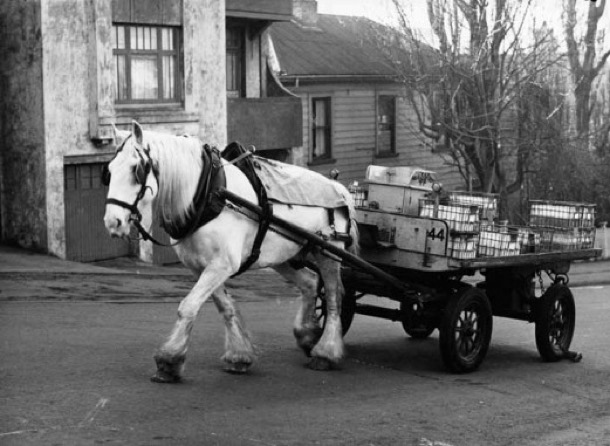
The baker trotted down the street carrying loaves in a big wicker basket slung on his arm. There were only two types of bread: ‘white’ and ‘brown’ (or what we’d call wholemeal these days). They were high-top loaves which could be broken into two halves. Some people only had half a loaf delivered each day and maybe a full one on Fridays for the weekend.”
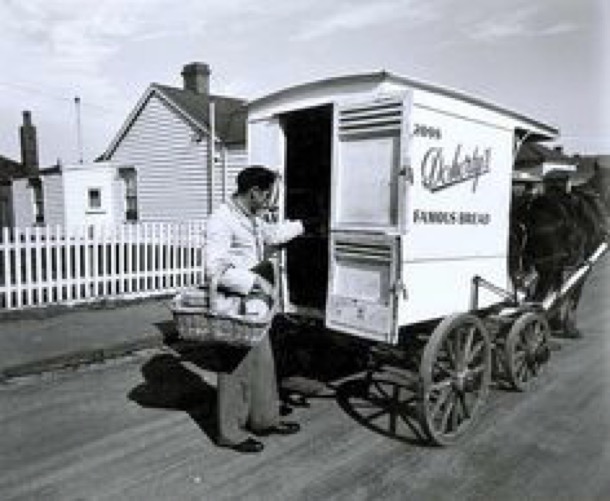
Our mother walked to the local grocer, fruit shop and butcher once a week where the rest of the food was bought.The shopping was delivered to our house until we bought a car. From then on the shopping was collected by our father on his way home. The butcher and greengrocer were much the same as today, except that the butcher had sawdust on the floor and there was not a piece of cling wrap plastic to be seen. The grocer however was very different.
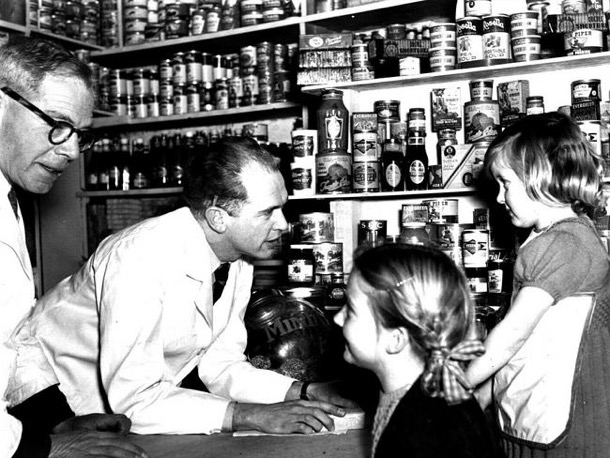
No taking pre-packaged items off the shelves, instead the grocer served his customers putting all the items bought into very sustainable brown paper bags. Big tins lined some of the shelves that held such items as biscuits, broken biscuits and small items such as dried fruit and larger bins held flour sugar etc. The best thing about the grocer was the inexpensive treat of a small bag of broken biscuits. Soon after we moved to Box Hill South, the amazing Foodland Supermarket opened and gone were the days of personal service and bags of broken biscuits for children.

Lunchtimes at Primary School 1950s
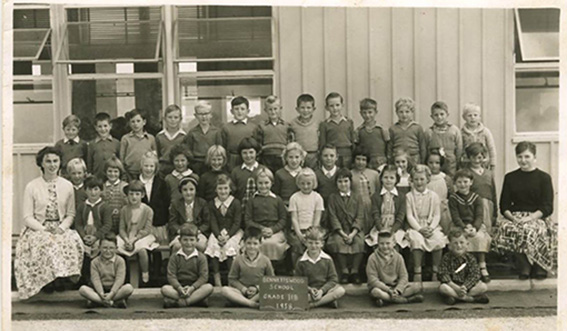
Both Sue and Margaret remember school games as going in crazes or fads. It was suddenly, as if by magic, swap card season. Nowadays you would explain a fad by noticing a particular advertising campaign, but that doesn’t account for the fads in the fifties and early sixties. Few people had television sets. No, clearly, it was magic!
Swap cards could be bought at the newsagent, and came in many special categories. (linens, pairs, “old fashioned”, horses).
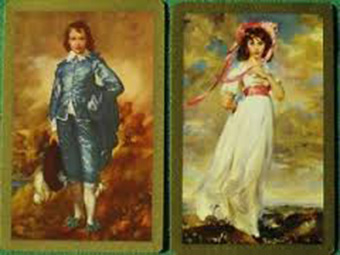
One had to know the value of particular kinds of cards in order to get a fair swap. Once a possible exchange had been agreed upon, each participant would leaf through her pack. This was closely watched by the other person who would ask the person to stop when a desirable candidate came into view. The process was then reversed to find a possible swap for it. Sometimes an exchange would take place, and sometimes not. Sue still has her swap cards.
Another season was hoops, made of cane.
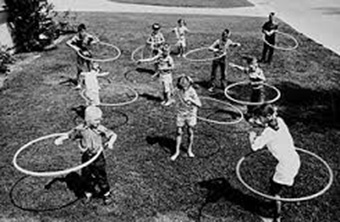
Scattered around the playground were individuals with gyrating hips, waists, necks, arms and legs. Neither Margaret nor Sue were very accomplished at it, but they participated, because that is what one did.
Another very individual fad was yo-yos.
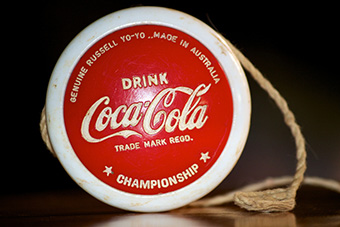
The best were coca cola ones, but there were others. Really clever people could do “around the world”, “walking the dog” etc.
Jacks, or knucklebones, which were actual joints of lambs they had eaten, were played in partners or groups. This was one of few games that we remember was played by both boys and girls.
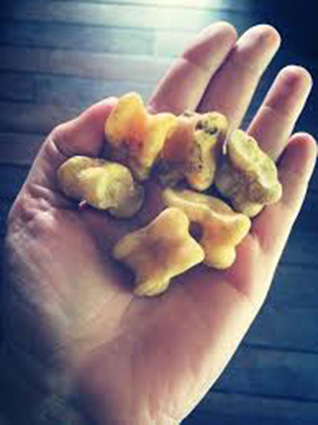
You had between one and five of them in your palm, and had to toss them up and catch them all on the back of your hand. We played this crouched or sitting on the ground.
The boys played alleys, or marbles.
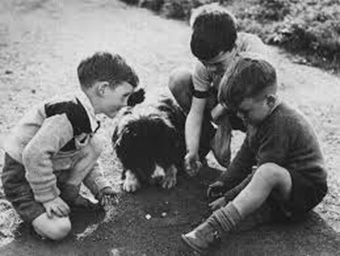

Marbles of different sorts had particular value. Bigger ones were called “tombollers”. There were cats eyes and other special ones. Playing involved risking your alley, as the winner of a game kept the loser’s alley. This didn’t seem to go in fads, presumably it was dependent on the weather, as it involved digging hollows in the dust. There was something called “dukes” involved. …. secret boys’ business. Alleys were kept in cloth bags, always home made.
Groups of girls did skipping.
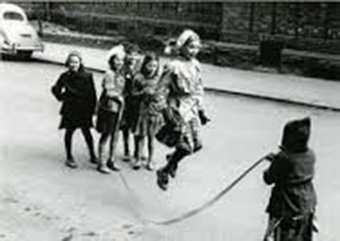
Presumably someone must have lugged a heavy rope to school for this. One person each end turned the rope and people would run in, timing their run with a skip and then jump until they missed and the heavy rope caught them on the leg. Margaret wasn't very good at this either, but Susan remembers her own skipping skills entirely differently. There were esoteric rhymes that went with skipping. Sue and Margaret both remember this one:
The big ship sailed on the Ally ally oh
The Ally ally oh, the Ally ally oh
The big ship sailed on the Ally ally oh
On the first day of September.
The captain said it would never never go
etc
Turns out it’s a traditional song, linked to the Manchester to Liverpool canal, which opened in the 1890s.
There was a shelter shed for each gender, for when it rained. It got packed then, but when it wasn’t raining you could play “pussy in the corner” which involved running across and jumping into the corners, up on the bench seats that ran around the inside walls.
Down the back of the oval were massive blackberry thickets. There were snakes and big rough boys there. Fights happened down there. Sometimes the boys built tunnels through the blackberries, through which brave people crawled, even girls. (Girls wore bare legs and dresses or skirts all year round.)

